




 Eamon Ryan TD outlines the power of renewables to deliver security of supply
Anne-Marie Clancy discusses offshore wind development
Brian Ó Gallachóir on aligning climate action with the phase out of Russian gas
Eamon Ryan TD outlines the power of renewables to deliver security of supply
Anne-Marie Clancy discusses offshore wind development
Brian Ó Gallachóir on aligning climate action with the phase out of Russian gas







 Eamon Ryan TD outlines the power of renewables to deliver security of supply
Anne-Marie Clancy discusses offshore wind development
Brian Ó Gallachóir on aligning climate action with the phase out of Russian gas
Eamon Ryan TD outlines the power of renewables to deliver security of supply
Anne-Marie Clancy discusses offshore wind development
Brian Ó Gallachóir on aligning climate action with the phase out of Russian gas

03
04
08
Foreword
Energy Minister Eamon Ryan TD on faster decarbonisation
Cover story: SSE Renewables’ Maria Ryan on accelerating renewable energy deployment
32
36
RESS2: Solar energy
Head of Energy in Northern Ireland’s Department for the Economy Richard Rodgers on the delivery of an integrated decarbonised energy system


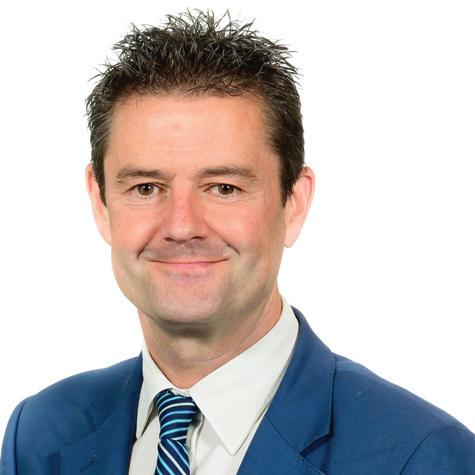
12
DG Energy for the European Commision Ditte Juul Jørgensen outlines unprecedented energy challenges
Hosted by GNI
16
Round table discussion: Ireland’s sustainable and integrated energy system


24
Brian Ó Gallachóir discusses the challenge of aligning climate action with the phase out of Russian gas
28
DECC’s Anne-Marie Clancy outlines the development of offshore wind resources
Editorial Owen McQuade David Whelan Ciarán Galway Fiona McCarthy Odrán Waldron Joshua Murray Design Gareth Duffy Jamie Hogan
60
University of Galway’s Rory Monaghan outlines the key components of a hydrogen strategy 66
The role of energy storage 82
Ireland’s Renewable Energy Magazine directory 92

Renewable Energy Ireland Chair Tanya Harrington on accelerated renewable deployment


Advertising/Commercial Sam Tobin sam.tobin@energyireland.ie
Publishers Energy Ireland www.energyireland.ie info@energyireland.ie @energyireland

Dublin office: Clifton House Lower Fitzwilliam Street Dublin 2, D02 XT91
Tel: 01 661 3755
This year is the 24th edition of the Energy Ireland Yearbook. The Energy Ireland Yearbook is a high quality reference source for users interested or involved in Irish energy from inside or outside Ireland this includes policymakers, regulators, energy sector company executives, facilities managers, large energy users and professional firms servicing Ireland’s rapidly developing energy markets.
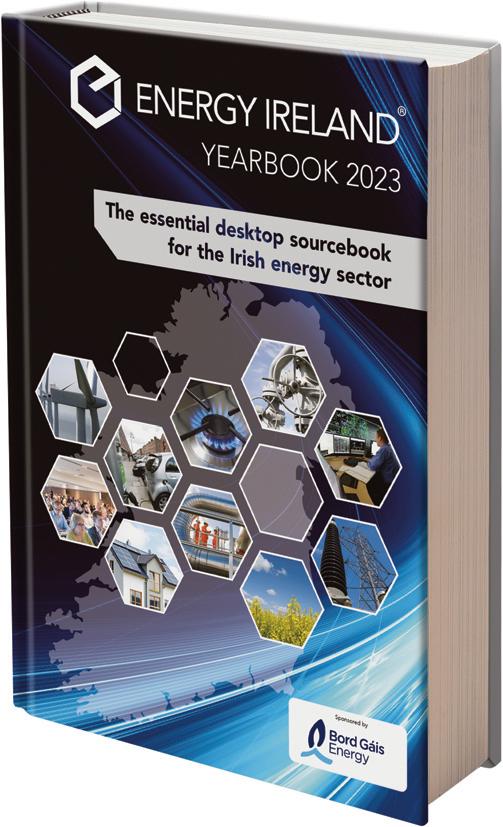


with key
directly to delegates at energy conferences north and south throughout the

your organisation’s goods/services to a key audience throughout the energy sector


Gain recognition as a thought
who’s

As if mitigating the climate crisis was not incentive enough, global events of the past 12 months have served to highlight the importance of growing Ireland’s indigenous renewable energy.
Ireland’s over-dependence on fossil fuel imports has raised security of supply challenges for the future and emphasised the need to accelerate further ambitious renewable deployment.
Radically reducing the dependence on imported energy will empower Ireland to control energy costs, a key aspect of retaining public confidence in the transition.
As the impact of the carbon ceilings across various sectors start to land, it is clear that if Ireland is to meet its net zero target by 2050, a diversity of technologies will be required.
Of all that is currently deployable at scale, electrification stands as the most viable route to decarbonisation, but Ireland must move to maximise efficiencies in the generation and distribution of renewable power. However, even increased generation, through a renewable pipeline of development particularly in the onshore and offshore wind sectors, will not be enough.
Flexible and emerging technologies can compliment renewable assets, reducing curtailment and maximising the electricity grid. Co-location of generation, usage, storage, and grid infrastructure is critical.
Ireland must accelerate the deployment of renewables to mitigate risk but this must go beyond generation to maximise efficiency.
This need for acceleration is outlined by a number of key stakeholders throughout the Renewable Energy Magazine, not least by our cover interview with SSE Renewables’ Maria Ryan, who outlines the role offshore wind deployment can have in increasing the share of renewables on the electricity grid. A round table discussion hosted by Gas Networks Ireland discusses the importance of utilising and transitioning existing assets into an integrated energy system.
Other highlights include Brian Ó Gallachóir’s timely examination of the contradictions between the sectoral emissions ceilings and the reality of global energy trends, and we preview the role of established and emerging technologies in the future energy system, including the University of Galway’s Rory Monaghan on what a future hydrogen strategy should entail.
David Whelan, Editor
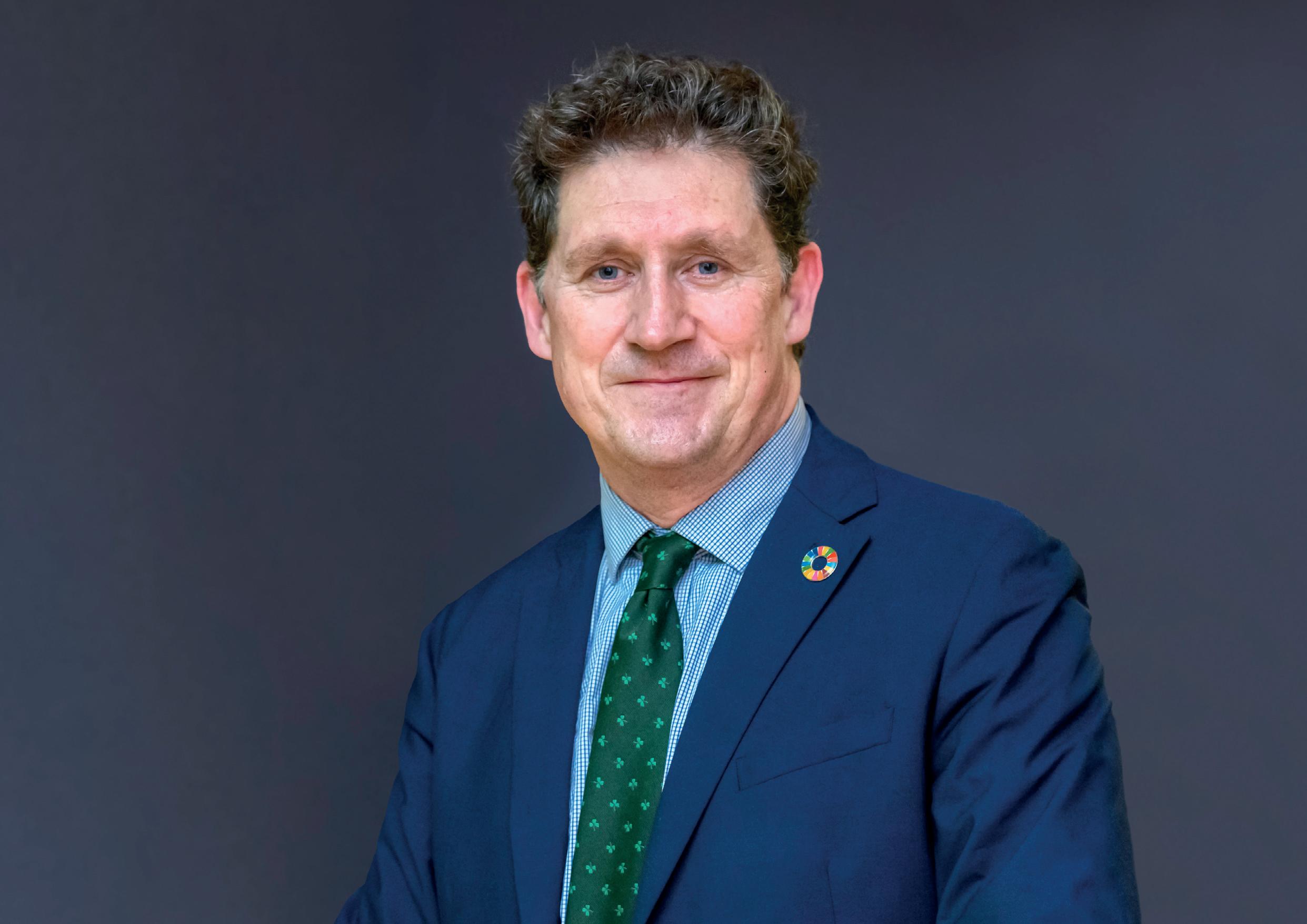
faster than we ever have before and “destroy” both natural energy demand and the need to import energy supplies.
The Minister asks investors to consider three key questions:
1. Is this the most efficient supply for energy given use?
2. Is it the lowest carbon investment for that use case?
3. Is your business investment decision and your work aligned with our country’s net zero plans?
“If your investment is not on this path, then you are making the wrong investment,” the Minister warns potential investors.
“You are not providing the ultimate responsibility as directors for your companies. You are putting our energy security at risk, and you are actively working against the interests of the next generation. We need to focus on destroying natural energy demand and, geopolitically, destroying the need to import our energy supplies. That must
be our policy focus. Efficiency, renewables, and electrification are the primary weapons in reducing private energy import demand.”

By breaking this link, Ryan believes we can remove ourselves from having our energy prices set by factors outside our control, as is the case at the moment.
“These steps will deliver affordability, strengthen our economy, and deliver a more secure environment for our people.”
The Minister points to lessons from the 1970s, when he believes, Ireland mistakenly invested in gas-based home heating amid the oil crisis in the era. He explains that other countries made more responsible investments which Ireland can learn from, and that investments should be directed towards renewable forms of energy.
“In other countries, Denmark for example, they used waste heat from power stations, switched to renewables in the form of solar district heating, biomass, and large-scale heat pumps. 50 per cent of their homes are run by district heating. Similarly, in Sweden, there are heat pumps and district heating.”
He continues: “The future of heating homes is not in burning gas, oil, or solid fuel. Even if a small number of renewable fuels are available, they are too valuable and must be used in other areas. If your investment path is in this direction, then it is not the most efficient, not the lowest carbon, and not in line with our net zero plans.”
Another lesson Ryan points to is from the 1980s, when, he states, that Ireland missed a window of opportunity to overhaul its public transport infrastructure as other countries throughout Europe were doing so.
“The Danish and the Dutch moved for town centres to be cycling friendly whilst others invested in public transport, and other countries, like our own and the USA, became slaves to the car.”
He continues: “We want Ireland to grow in population, in prosperity, and in quality of life. This means using space as efficiently as possible, using resources as efficiently as possible, and using time as efficiently as possible. None of these are centred on the everlarger number and size of private cars.
Ryan further emphasises the importance of ensuring that 80 per cent of Ireland’s electricity is from renewable energy sources by 2030.
“We need to electrify to save 80 per cent of energy, but we also need to decrease demand and material uses for the delivery of what society needs: fast, safe, reliable, and cheap mobility. In my role as Minister of Transport, this is what is needed for society’s wellbeing as well as our climate targets.”
On powering electricity throughout the State, the Minister emphasises the importance of rapidly decreasing the investment in fossil-based investment in rapidly declining as, in his words, “most global investment is going clean”.
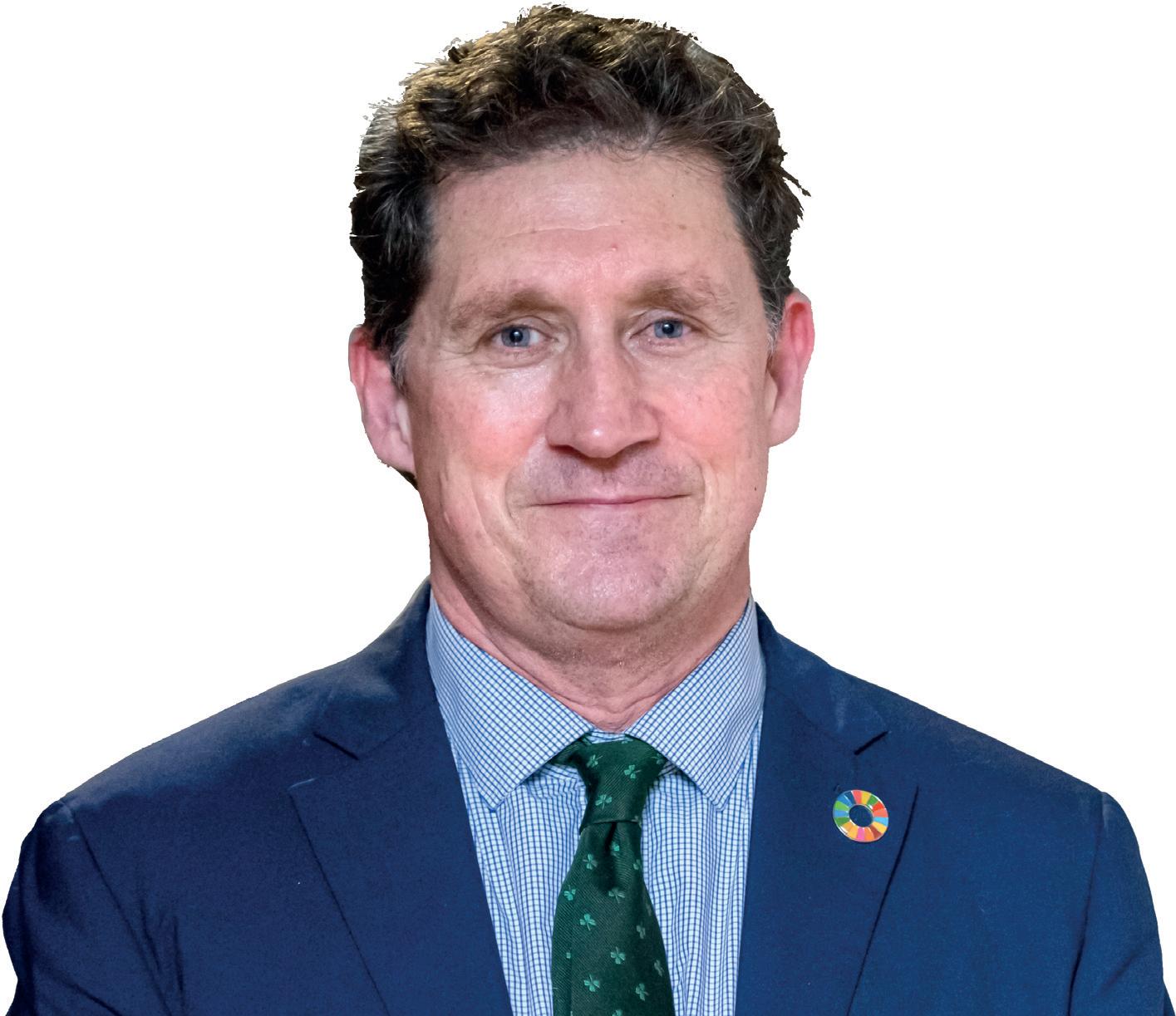
“How much hydrogen we might use in Ireland, how much will be used in electricity storage to support variable renewable output and use containment, how much we can use in transport, and how we would underpin these developments when it comes to policy measures.”
“This higher demand can ensure that our grid can operate at much higher capacity factors, that we can defer grid investment in scarce copper and aluminium. This might be car chargers which switch on and off, it might be heat pumps which switch on for 30 minutes.”
He adds: “I had the unenviable task as a Green Climate Minister of saying that we need more fossil investment to keep the lights on, but this investment in plants which we convert to green hydrogen is an enabler of the transition.”

He further notes the role played by the Commission for the Regulation of Utilities (CRU) in establishing a security of supply programme, and underlines how crucial these programmes are in ensuring the implementation of wider reform programmes.
“By 2030, we will invest in 7GW of offshore wind. This will supplement our total capacity of 8GW of onshore wind, and our 5.5GW of solar energy when you include solar farms, houses, and everything in between.”
On solar energy, he adds: “The recent success of our RESS2 auction and our EU solar strategy reinforces the role of solar in increasing the rollout of renewables. We will also invest in significant levels of short duration storage including multi-R batteries and, hopefully, with long duration storage available by then, we will invest in further interconnection.”
When it comes to the challenge of managing flexible demand, Ryan
believes that the gap between variable supply and demand is at the centre of the new industrial revolution taking place.
“In Ireland, we are good at it. We need to use those skills and be really good at low-use electric boilers like those proposed by Energy Cloud where, for between 10 and 20 per cent of the year when it is windy, we displace fossil fuels with low capital investment electric heating.
“We will also need higher capacity factor flexible demand like hydrogen production, industrial heat pumps, that back up fossil and run most of the time, maybe 50 to 75 per cent of the time. But when we have no wind, they revert to fossil fuels for now, with other fuels, like hydrogen, replacing them in the future.”
Describing flexible demand as “the final jigsaw piece”, the Minister outlines that this will be the “almost always on demand where we can remove the need for spinning reserve by having large loads which can be switched off a little bit at a time, like the current demand side management”.
He adds that 200MW capacity will not be enough, and outlines ambitions to achieve multiple GW of demand that can react to market signals to reduce our shift consumption.
Minister Ryan states that he has instructed EirGrid to include the opportunity to increase accessibility to larger amounts of flexible demand, when they produce the next version of the Shaping our Electricity Future strategy.
“This will be the enabler of rapid, primary energy demand destruction, the enabler of 80 per cent renewables by 2030, and the enabler of more onshore renewables.”
Ryan states the importance of ensuring that hydrogen becomes more widely used in meeting the needs of Ireland’s net zero emissions, that it will ensure that public transport remains affordable to operate, and that there is further scope for the development of hydrogen in the Irish energy market.
He promotes the role of the hydrogen consultation in the summer of 2022 in studying “how much hydrogen we might use in Ireland, how much will be used in electricity storage to support variable renewable output and use containment, how much we can use in transport, and how we would underpin these developments when it comes to policy measures”.
He adds: “We will then update them after our Climate Action Plan each year. We have to be careful with both supply and demand of hydrogen so that we do not incentivise inefficient and uncompetitive uses.”
The Minister concludes by reiterating that his department “will not incentivise this scarce and expensive fuel to displace inefficient use of natural gas via the gas grid”.
“That is one of the key lessons of the 1970s. If it is not efficient, if it is not the best use, and if it is not in line with our net zero plans, then we will not be doing it.”

Amid the ongoing energy crisis, Maria Ryan, Director of Development, SSE Renewables, discusses security of supply, decarbonisation, delivering the offshore wind ambition, and a role for green hydrogen.


Overseeing the development portfolio of SSE Renewables’ offshore projects in both the UK and Ireland, Maria Ryan is responsible for several large-scale offshore wind energy projects progressing from concept to construction. In Ireland, SSE Renewables’ flagship project is the 800MW Arklow Bank Wind Park Phase 2. With a €2.5 billion capital investment and the creation of 80 full-time jobs, Arklow Bank Wind Park Phase 2 will power 850,000 homes per annum, while offsetting around 830 million kilos of CO2 emissions annually.
“We have recently celebrated some significant achievements in the Arklow project with the granting of planning permission for the onshore grid infrastructure, as well as the operations and maintenance facility; the first offshore project in Ireland to achieve these milestones.
“SSE Renewables’ pipeline of offshore wind energy projects has the potential to deliver around 3GW by 2030, a significant proportion of the national 7GW target,” the Director of Development outlines.
Remarking on the prevailing consensus that Ireland must embark on a course of action to insulate itself from energy crises of the future, Ryan identifies offshore wind energy as the solution that can deliver at scale.
Discussing the Government’s ambition to ensure that 80 per cent of electricity is generated from renewable sources by 2030, the Director of Development is reflective.
“Considering the 80 per cent and the 7GW targets, you can see why people perceive it as extremely challenging. However, thinking back to the 40 per cent target for 2020, people thought it was going to be a massive challenge and yet it was surpassed. We had huge success with onshore wind then, and now we have the opportunity to replicate that with offshore wind,” she asserts.
While Ryan is cognisant of the time constraints on offshore wind project delivery – it can take up to 10 years to reach completion – and acknowledges that it could be late 2024 at the earliest before offshore wind projects receive consent, she insists that there is no alternative but to be ambitious.
“We have a climate crisis allied with energy security challenges and inflationary pressures. So we have no
choice but to deliver enhanced offshore wind targets. If we do not seek to be ambitious in this context, we will never deliver the solutions, but we need urgent action,” she adds.
Similarly, while the 2030 targets are an immediate priority, it is necessary to begin looking beyond these to 2050 and determine the stepping stone targets between 2030 and 2050. “We are eight years away from the end of the decade when targets will reach the cliff edge that separates 2030 and 2050. In that intervening period, we must build capacity from 7GW to the newly proposed 37GW, which is a significant leap.
“What we need to see from an investment perspective, therefore, is certainty. From an offshore wind perspective, stepped targets from 2030 right through to 2050 will be required to build confidence in the long-term investment required to deliver on the ambition.
“The same can be said for the supply chain. Suppliers must have confidence in order to engage with the Irish market and developers need certainty to place reservations and orders. Without certainty the supply chain will simply pursue contracts in other jurisdictions where they have certainty around delivery timelines and Irish developers will be bypassed, bearing in mind even with certainty the supply chain is likely to create a bottleneck given the global scale of offshore wind.”
SSE Renewables has already embraced the opportunity to cultivate a new offshore wind supply chain in Ireland, particularly at a local level. “We are using local vessels to do our survey
work and local companies to deliver our safety training,” Ryan notes.
Against the backdrop of the European energy crisis and the energy transition, the acceleration of renewable energy deployment has assumed heightened relevance. Ireland’s energy system faces several challenges, particularly in relation to its exposure to international energy markets.
“If events of the last couple of years –from the Covid pandemic to the Russian invasion of Ukraine – have taught us anything, it is how quickly and dramatically things can change,”
Ryan observes, adding: “We all know that we must reduce our reliance on fossil fuels to mitigate exposure to imported gas, gas volatility, geopolitical instability, but also, of course, to decarbonise the energy system in the context of the climate crisis –renewable energy is the route to avoid the current crises in future and offshore wind can provide indigenous green generation at scale.”
While making a significant contribution to the decarbonisation of electricity, offshore wind will also contribute to the decarbonisation of other sectors via electrification. Simultaneously, as renewable generation such as offshore wind reduces exposure to fossil fuel generation, reductions in wholesale energy prices will also drive down consumer prices. It is estimated that if Arklow Bank Phase 2 had been operational today it would have paid back €256 million to consumers over the last year.
In July 2022, the Irish Government scaled up its ambitions for offshore 4
“We have been surpassed by several other regions. We are playing catch up and are competing on a global scale.”
wind, increasing its 2030 target from 5GW to 7GW. Announced as part of a new package of measures to meet Ireland’s sectoral emissions ceilings, SSE Renewables welcomed the new target – one that the company had publicly called for.
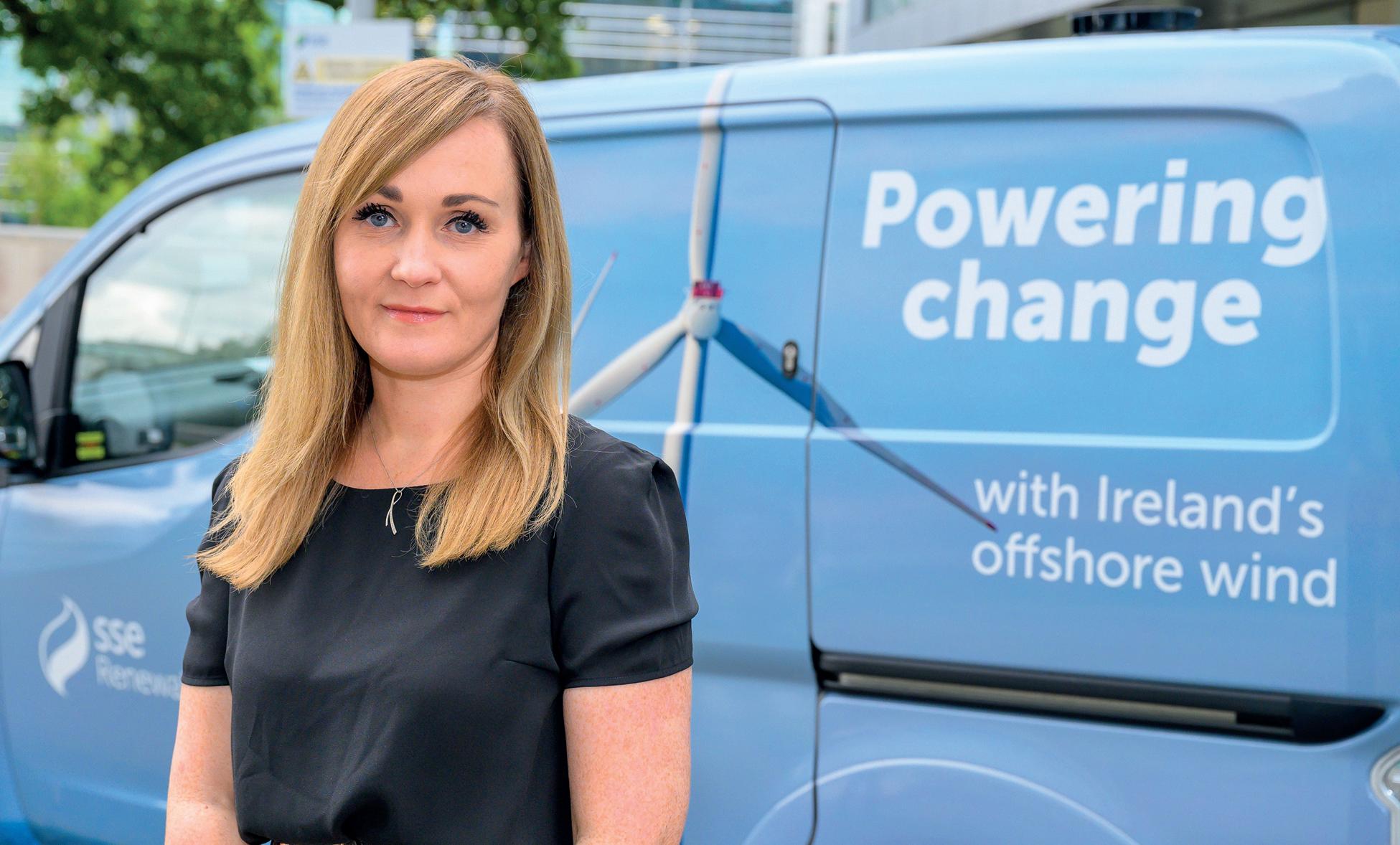
While Ireland is optimally positioned to achieve energy independence, this increased ambition, as evidenced in the Government’s revised target for 2030, will be essential in unlocking Ireland’s full offshore wind potential.
“Ireland initially led on the early development of offshore wind with the commission of the 25MW Arklow Wind Bank Phase 1 in 2004. However, there is still only 25MW of operational offshore wind energy today in 2022 and we have been surpassed by several other regions. We are playing catch up and are competing on a global scale.
“We are looking to ORESS 1 in 2023 which will be a landmark moment for the entire offshore wind industry in Ireland,” Ryan emphasises. Currently, there are significant uncertainties and risks associated with ORESS 1 and it is shaping to be one of the riskiest auctions in the world. While developers are, to some extent, accustomed to risk, this will ultimately have an inflationary impact on prices at the auction.
For instance, in the absence of indexation and planning permission, investors are being asked to bid without knowing the size, scale, number of turbines, or the conditions that are going to be imposed on the project. Developers will be required to factor this into the price which will ultimately be passed onto consumers in the long term. Planning should be a pre-requisite for ORESS 2, something which will mitigate this huge risk.
“Certainty is a huge challenge,” Ryan acknowledges, adding: “If we consider the planning process – which has always been a challenge for the entire wind energy sector – it is necessary to have a fair and equitable process but one which also moves at pace. We cannot have these projects languishing in the planning process for years and years. If this happens, we will absolutely fail to meet the targets. Renewable projects need to be prioritised. The relevant bodies must be sufficiently resourced to ensure that they can address the project pipeline in an agile, effective, and efficient manner. Simultaneously, certainty is required on the delivery of grid connections for projects and work needs to start on strengthening the grid to ensure we can have as much offshore wind connected with as few bottlenecks as possible so we can maximise our resource.
“We need to see the new Maritime Area
Regulatory Authority [MARA] set up and operational as soon as possible so that we can create a robust pipeline of projects through the Phase 2 Maritime Area Consent [MAC] allocation. That MAC process must focus on projects which are deliverable, brought forward by developers with credible offshore wind experience. That way we can find a balance between creating a large enough pipeline to deliver beyond our 2030 targets whilst also reducing the likelihood of key bodies like An Bord Pleanála being overwhelmed with applications and becoming a bottleneck.”
Having contextualised the challenge, Ryan indicates that implementation must now mirror Ireland’s ambition for renewable energy deployment. Accelerated deployment hinges on certainty.
In the coming decades, the Irish offshore wind sector has the potential to reach a point whereby more energy is generated than is consumed. One opportunity in this scenario will be the generation of green hydrogen from offshore wind for export. Suggesting that Ireland is a “clear and obvious choice as a future exporter of hydrogen”, Ryan insists: “There is a clear path for Ireland to create a new market. Everything must be considered
holistically. SSE Renewables was delighted to observe the Consultation on developing a hydrogen strategy for Ireland. However, it is 2022 and we are already on the back foot. What we need is to cultivate a cohesive hydrogen economy that spans supply chain, market demand, transport, and storage.”
As such, in June 2022, SSE Renewables launched its Galway Hydrogen Hub (GH2), Ireland’s first hydrogen valley. GH2 is a regional hydrogen ecosystem linking research, production, distribution, and transportation with various end users, including transport and industry.
“With all the necessary expertise and an understanding of what is required, SSE Renewables is transitioning from theory to action by developing this demonstrative project,” she explains.
With one eye on 2030 and beyond, the Director of Development is keen to reflect on current successes. For example, in August 2022, the 1,075MW Seagreen Offshore Wind Farm –Scotland’s largest offshore wind farm and the world’s deepest fixed bottom wind farm (a joint SSE Renewables and TotalEnergies project) – announced first power generation, with Commercial Operation Date (COD) expected in 2023.
Meanwhile, SSE Renewables is also building the 3.6GW Dogger Bank Wind Farm with development partners Equinor and Eni. Located off the north east coast of England, it will be the world’s largest offshore wind farm. Equivalent to the combined total of Phase One projects in Ireland.
While investing more into low carbon technologies and delivering renewable energy than it makes in profit, SSE now employs 1,300 people across its renewables business in the UK and Ireland. This figure represents a 30 per cent increase in just three years and one-in-five of its employees have transitioned from high-carbon careers. The single most important factor referenced by those who pivoted to a career in SSE Renewables was ‘environmental considerations’, followed by ‘the opportunity to work on exciting new projects’, and ‘better long-term career prospects’.
Experience and skilled resources will be a challenge in the industry and SSE Renewables has a significant skills capacity which can be recycled and moved through projects. “We are hitting the ground running in terms of the development of offshore projects here in Ireland with that experience in our back pocket,” Ryan remarks.
Looking ahead, the SSE Renewables Director of Development imbues a sense of optimism in the face of the energy trilemma. “It has to be done and we have to find a way to do it,” Ryan contends, concluding: “If I am sitting having this same conversation with you in six months’ time then it will be a different story, but as is stands, we still have a chance of meeting our 2030 targets. We need to accelerate right now, to keep that chance alive, and deliver for society and future generations. The window is closing on our ability to deliver Ireland’s 2030 target for renewable electricity. We have no time to waste.”
“The window is closing on our ability to deliver Ireland’s 2030 target for renewable electricity. We have no time to waste.”
Maria Ryan, Director of Development, SSE Renewables

According to Ditte Juul Jørgensen, Director General for Energy of the European Commission, the EU is at a turning point with its energy policy which has its origins in the supply chain crisis which arose from the Covid-19 pandemic.
The energy crisis was exacerbated by Russian aggression and invasion into Ukraine and the arising uncertainty particularly with gas supplies.
Jørgensen states: “The EU has made bold decisions cutting dependence on Russia; we need to diversify with other resources, accelerate the
development and use of renewables, and invest more in energy efficiency. We need to invest in our infrastructure to be able to diversify and we need to accelerate that transition.
“This is all set out in the REPowerEU plan, which aligns with our European
Green Deal, and aligns with our climate neutrality targets by 2050, together objectives on security of supply.”
On the European Green Deal, energy ministers agreed on a general approach in energy efficiency and on renewable energy in June 2022 which
aligns with REPowerEU, and underlines the need to replace Russian fuels with green energy and lowering consumptions.
Jørgensen emphasises the importance of creating the investments and building the necessary skills for energy efficiency, both for industry buildings and for transport, which are the biggest energy consumers across the European Union.
On the regulatory side, she references the Energy Efficiency Directive, and the agreement reached in the Council of Ministers in June 2022. “Last year we had a proposal which aimed to scale up our package on energy efficiency, setting a higher target for energy efficiency across the European Union both at final energy consumption and primary energy consumption.
“We have seen that Ireland is giving significant investment to this and really giving it prominence, giving priority to building renovation, in both its energy strategy and its recovery and resilience plan so as to make significant gains here. The idea would be that we all arrive at a carbon neutral, decarbonised cooling and heating before 2050 as a necessary means of achieving our objective of climate neutrality by 2050.”
Jørgensen furthermore expresses her concern for those living in energy poverty. “They may not be able to make the investments and make the changes in housing. It is important to ensure that consumers are empowered, and that we protect vulnerable households and consumers.
“Energy efficiency, our structural investments, and changes to our building mass, to our industry, to our transport, and to how we organise ourselves are the long-term objectives.”
Reiterating the importance of the development of renewable energy, Jørgensen states that the development of renewable energy
has a crucial role to play in job creation, increasing European energy independence, and meeting the climate change ambitions.
She acknowledges the Irish Government’s pledge to generate 80 per cent of Ireland’s electricity from renewable sources by 2030 and emphasises the importance of ensuring that there is an EU-wide regulatory framework to accelerate the use of renewables.
She adds: “Last year we proposed a strengthening of the Renewable Energy Directive, and the Council agreed to set clear targets in transport, heating, cooling, and industry, which are the sectors of our economy where that action is most needed.”
Jørgensen believes that the permitting process presents the top challenges for the EU in meeting its renewable energy targets and calls for a significant simplification of planning procedures which could be achieved through a European framework.
“In many EU member states, permitting simply takes too long; it delays these investments and it means that we do not get the renewable energy into our system as quickly as we would like to.
“We have suggested, again as part of REPowerEU, some specific measures and regulatory simplifications. Go-to areas, which are a recognition of the overriding public interest of renewable energy, and we hope that that will be taken up by the two co-legislatures, so that the of the regulatory framework can be streamlined.”
An important part of the strategy is the solar rooftop initiative.
This will create a legal obligation to install solar panels on new buildings commercial buildings and new residential buildings.
A European level, the aim is to significantly increase the share of renewable gases in the overall energy mix. To the greatest extent possible, the priority is to replace fossil molecules with renewable molecules, for example, green hydrogen produced via the offshore wind or via photovoltaics across the European Union or imported green hydrogen.

“To accelerate this hydrogen market, the Commission made specific proposals in relation to renewable energy. What we also have is a specific proposal on the decarbonisation of gas and on hydrogen which is currently being drafted as legislation so that we make sure we have a clear regulatory framework so that there is no uncertainty standing in the way of investments and the development of this sector.
“We need to develop both on the demand side and the supply side, and we need industry to come in and to accelerate the hydrogen projects.”
Jørgensen additionally emphasises the importance of biomethane which she states offers important economic incentives, particularly to the farming sector.
“We already have one member state that has more than 20 per cent of biomethane in its domestic gas mix and is aiming to replace fossil fuels completely with biogas and with renewable sources,” she concludes.
“In many European member states, permitting simply takes too long; it delays these investments and it means that we do not get the renewable energy into our system as quickly as we would like to.”
The traditional flow of energy was unidirectional, from large generators to customers with suppliers acting as intermediaries. This relationship is beginning to be transformed however, as more consumers are installing small-scale generation and consumers are being empowered to become active in the transition to a low-carbon economy, through demand response.
The Clean Energy for all Europeans Package (CEP) is a set of EU Regulations and Directives aimed at setting requirements that will enable the EU to meet its renewable goals and targets set out at the Paris Agreement in 2015. Two of the main documents in this package include the Electricity Directive (EU) 2019/944 (IMED) and the Renewables Directive (EU) 2018/2001 (REDII).

A key element of these Directives is the inclusion of small-scale market actors in the energy sector, such as individuals and energy communities who will be integral in developing and participating
in new energy activities and opportunities, previously only available to large suppliers and network operators.
As smart meters continue to be rolled out in Ireland, consumers will have more opportunity to become aware of their energy usage and realise how it affects the wider electricity grid. Their active consumption can lead to an understanding of the source of the energy they use, and the opportunity to use greener and cheaper electricity at different times of day, or in different weather conditions. This understanding can then be translated into action if an individual or a group of individuals
forming an energy community want to become more involved in maximising their local area’s decarbonisation efforts.
The CRU is in the process of developing an enabling regulatory framework that will facilitate the participation of active consumers and energy communities in the Irish electricity sector. An active consumer is an individual who generates renewable energy for their own consumption, sells or stores excess generated electricity, participates in energy efficiency schemes, or provides flexibility services to the distribution system operator, provided none of these activities are their primary profession.

An energy community is considered a group of active consumers who voluntarily commit to providing environmental, social, or economic welfare by engaging in renewable energy generation, energy sharing or trading, storage, or supply, provided these activities are not for commercial purposes and do not constitute the primary profession of any of the members of the community.
Ireland has a well-developed network of existing Sustainable Energy Communities (SECs) who actively participate through the Sustainable Energy Authority of Ireland’s SEC Programme. The concepts of energy communities detailed in the Directives, however, depict a different model than the existing SECs. Energy communities under the CEP would be encouraged to partake in specific energy activities that would help integrate more renewable energy into Ireland’s energy system.
The activities that active consumers and energy communities may partake in to play their part in the transition towards cleaner energy and higher renewable energy integration include the following:
• Generation: consumers should be able to produce renewable electricity for self-consumption. For example, this could include installing solar PV panels on rooftops, or installing a small wind turbine that provides energy to community members;
• Supply: consumers should be able to sell electricity from individually owned or community owned generation assets. Additionally, in selling this electricity, consumers should be renumerated for excess electricity supplied to the grid;
• Storage: consumers should be able to own an energy storage unit and not be faced with barriers while connecting to the grid;

• Sharing: members of a community or jointly acting active consumers located in the same apartment building or complex should be able to share self-produced electricity among themselves;
• Trading: consumers should be able to participate in peer-to-peer trading arrangements; and
• Flexibility and Demand response: consumers should be able to provide services to the distribution system operators to provide flexibility to the grid. This could involve avoiding using large appliances at times of peak demand or turning off appliances when notifications are received that there is congestion on the grid.
Energy communities and active consumers are entitled to engage in these activities on their own, or by using an aggregator, who would be an entity that pools consumer loads and operates in the electricity markets on their behalf. Additionally, energy communities can hire a third-party to install, operate, or maintain their renewable energy project. The use of aggregators and third parties should enable more community participation from non-industry experts that want to play their part in integrating more renewables into the system.
Another key entity in the facilitation of active consumers and energy communities will be the distribution system operator. ESB Networks will have a role to play in facilitating community development and enabling participation in activities such as energy sharing and demand response. They have begun assessing the changes needed to enable these forms of participation, and the CRU will continue to engage with ESB Networks as these concepts develop further.
The CRU has also begun discussions
with prospective energy communities to identify regulatory barriers which could cause challenges in the progression of their projects. Two Calls for Evidence and one Consultation have already been published as the CRU started exploring these topics. sector. The papers mainly presented subjects, such as regulatory oversight, at a high-level to highlight the challenges of incorporating new market actors and small-scale individuals and energy communities into the energy. This work culminated in the publication in November 2021 of a conclusions paper – CRU21126.
The framework set out in the conclusions paper will take time to develop fully, but once completed, it should be flexible enough to allow participation in all forms of energy activities by active consumers and energy communities. This would then enable a higher integration of renewable energy being used by small scale market actors in ways that were unavailable to these individuals and communities in the past and will empower consumers to play a larger role in the transition towards using cleaner energy.
The CRU will be issuing consultations and further work on this topic beginning later in 2022.
W: www.cru.ie

Gas Networks Ireland hosted a round table discussion on making Ireland’s energy system more sustainable and integrated at its low carbon service centre on St Margaret’s Road, Finglas, Dublin.

What role is your organisation playing in meeting Ireland’s climate action targets?
Jean Kennedy
Devenish has been investing in research and innovation action at our research farm at the Devenish Lands at Dowth since 2013, focusing on sustainable farming and food. Farming is one of the very few industries that has the ability to sequester carbon as well as emit it. We have been working towards understanding how to measure and manage net on-farm carbon and we can now say that we have achieved carbon neutrality. We are also looking at the art of the possible in data-driven sustainable agriculture solutions.
We are the representative body for the solar energy industry in Ireland, with 190 members. We are very focused on decarbonisation, taking a wholesystem view. We have three main areas of activity. The first is engagement on policy and regulation to support a higher volume of solar energy. The second is education as there is still some scepticism about solar energy in Ireland. There is useable electricity falling on our roofs and fields every day. The third is encouraging good practice. In the industry we have 2,000MW under the RESS and tens of thousands of customers at different industry scales. As the industry scales up, we need to ensure good practice.
Gas Networks Ireland (GNI) powers over 50 per cent of Ireland’s electricity, depending on the weather systems it can vary above and below that. We also supply 40 per cent of Ireland’s domestic heat and 30 per cent of Ireland’s total energy needs. Today, we transport natural gas through the 15,000km of our grid, but we are transforming. As we transition to a low
carbon energy future, we see a role for biomethane and then green hydrogen from renewable sources. We want to see an integrated sector with gas and electricity sectors working hand in hand. Gas today represents a reduction in emissions compared to coal or oil, but our ultimate goal is to switch to hydrogen. That will take time, but that is our ambition.
Noel CunniffeWind Energy Ireland is an association for the onshore and offshore wind energy industry. Our vision is to deliver a zero-carbon electricity grid by 2035. Ireland has a goal of hitting net zero by 2050 but to do that we have to decarbonise the electricity sector much earlier. Over the next 13 years, the sector will move away from fossil fuels to technologies such as wind and solar. Ireland is already a world leader in onshore wind, and we are going to have to continue that over the next decade. In the latter half of the decade the focus will be on delivering offshore wind. We propose to deliver 7GW of offshore wind energy by 2030. That will mean kick-starting a whole new sector of Ireland’s economy. It will send us on
a path to energy independence and bring hydrogen into play.
In Cré we are a broad church, representing anaerobic digestion to composting plant operators. We also undertake education and engage with government. We recently had Minister of State Ossian Smyth TD out to a site to show him a composting plant in operation and explain anaerobic digestion. Food waste is a key feedstock for a lot of our members, and we try to help educate households and businesses to segregate food waste out correctly. We also conduct research projects funded by the EPA regarding quality standards for digestate and compost. We undertake market studies, for example, showing the potential for one million tonnes of food waste to be recycled in Ireland but we are only processing 15 per cent of that. Our sector has the potential of producing biomethane for the grid and can also facilitate peat substitution and carbon sequestration using digestate and compost.
Catherine SheridanEI-H2 is Ireland’s first green hydrogen production company. Green hydrogen will have a role in complementing green electricity because we cannot meet all of our energy needs using electricity. Heavy goods vehicles need a molecular fuel, and today that could be biomethane and, in the future, hydrogen. Green hydrogen can also be used in aviation, shipping, and high heat industries. Ireland has more energy, onshore and offshore, that we can use, so transporting energy as hydrogen gives us the opportunity to export that excess energy. Hydrogen can be used for thermal generation when the wind does not blow, or the sun does not shine. Hydrogen is a key enabler of an integrated energy system. We are looking at onshore locations where electrolysis could provide a route to market for wind that might be curtailed by lack of grid availability. In a geopolitical context, green hydrogen offers Ireland the opportunity to give Europe a democratic energy supply.

How can Ireland harness its existing resources to deliver a cleaner energy future?
David KellyThe most efficient way to transport energy in terms of scale is using gas. Right now, biomethane is being 4

Conall Bolger is the CEO of the Irish Solar Energy Association. He has 16 years of markets and policy experience working across the energy value chain from community and customer site projects to larger scale onshore and offshore wind development. He founded, led, and developed Cornwall Insight’s Irish operations. His international renewables experience includes Poland, Canada, and the UK.



Noel Cunniffe is the CEO of Wind Energy Ireland, Ireland’s largest renewable energy association, and works with a wide range of internal and external stakeholders to build understanding and awareness of the benefits of wind and renewable energy. Prior to becoming CEO, Noel led Wind Energy Ireland’s policy department, driving policy development across the onshore and offshore renewable industry in Ireland. Previously, Noel was the Renewable Integration Lead in EirGrid, and worked across several departments including electricity grid planning and operation, and the design of the electricity market of Ireland. He is a chartered engineer with Engineers Ireland.
Percy Foster has over 20 years’ experience in the organic waste sector. As CEO for Cré, the Composting and Anaerobic Digestion Association of Ireland from 2006 to the present, Percy has coordinated and managed the activities of the association, representing the composting and anaerobic digestion industry at government and European level. He is chair of the European Compost Network Animal By-Products Group and is a former board member of the European Compost Network.
David Kelly is the Director of Customer and Business Development at Gas Networks Ireland, the semi-state organisation responsible for operating Ireland’s € 2.7 billion, 14,617km national gas network, and ensuring the safe and reliable delivery of gas to more than 706,000 homes and businesses across the country. David has over 20 years of executive-level experience having worked extensively in both the private and public sectors throughout his career. Prior to being appointed to his current role, David was the Group Head of Customer Operations and Public Affairs for Ervia.
Jean Kennedy is Director of Devenish’s Global Innovation Centre (GIC) at Dowth, County Meath. She is a Royal Society Entrepreneur in Residence (awarded in 2020) at Queen’s University Belfast and has held the positions of Food Innovation Manager at Devenish Nutrition, EU Regulatory Affairs Manager at Alltech and Food Safety and Consumer Insights Manager at the European Food Information Council (EUFIC). She has worked in the Food Safety Authority of Ireland, Michigan State University and University College Dublin. She holds a PhD from Ulster University and has published research on sustainable agriculture, feed regulations, food regulations, consumer behaviour, and food safety.

An energy professional with over 20 years’ experience, Catherine Sheridan’s key focus as Chief Operating Officer with EI-H2 is to help Ireland and Europe achieve net zero by 2050 through green hydrogen and energy system integration. A chartered engineer and Fellow of Engineers Ireland, project manager and communications expert, her experience includes site and contract management as well as commercial roles with national utilities. She was recently named one of the top women globally working in hydrogen and is the policy lead with Hydrogen Ireland.

created, generated, and transported. We have a direct injection facility in Kildare, and we have seen a quintupling of demand this year compared to last year. The opportunity for biomethane needs to be harnessed. Unfortunately, it took a war for the right type of policy indications to come. A lot more could be done and needs to be done. In Denmark, there was a day this year where 100 per cent of their gas demand was provided by biomethane; that is from a standing start in 2014. Ultimately, we want to transport hydrogen using the same technology.
Since early 2021, solar has gone from being relatively marginal to having a 5.5GW target by 2030. That is a realisation by policymakers that solar will play a part in the energy transformation. Fundamentally, in northern climates solar is complementary with wind. Broadly speaking, the sun tends to shine when it is not windy and vice versa. A system with both solar and wind is being powered at almost all hours of the day, bringing us closer to 100 per cent renewable. The future of the electricity system is people generating electricity themselves and exporting onto the grid, in concert with onshore and offshore

renewables; we have to get there quickly, 2030 is just around the corner.
It is important for farmers to be given their place in the conversation because they are the custodians of our land. Our Marie Curie project, HeartLand, shows that 40 per cent more herbage can be grown with 65 per cent less chemical nitrogen when multispecies swards are used compared to monocultures of perennial ryegrass or permanent pasture. The legume component in the

sward replaces the need for chemical nitrogen. If we get soil into optimum condition and use multispecies swards, we can produce an excess of herbage which could be used as a feed-in to an anaerobic digestor without putting pressure on national herd numbers.
Percy FosterWe have a lot of resources that are being landfilled. There is a huge quantity of food waste and industrial clean sludges; a lot of food factories would like to have their own biomethane plants on site. When it comes to biogas, it is about feedstock security. Food waste is very rich and generates a lot of biomethane gas energy, but there are issues. We need to segregate food waste; not everybody has a brown bin in Ireland, but the EU obligates that everyone should by December 2023. Education is also key; contamination with metals and plastics can be a big problem.
We need to integrate our energy system. We have to be grown up about it; we cannot pretend that we can just stop using fossil fuels tomorrow. We need to meet non-electrifiable energy needs, there could be up to 40 per cent of the 2050 energy system that is molecular, so we need to prepare for that. European legislation is progressing towards that integrated energy future and rather than waiting for it to be imposed on us, we could accelerate to benefit from funding, for example in the REPowerEU plan. By 2025, the GNI network will be ready to receive a blend of hydrogen in UK-imported gas.

“We want to see an integrated sector with gas and electricity sectors working hand in hand. Gas today represents a reduction in emissions compared to coal or oil, but our ultimate goal is to switch to hydrogen. That will take time, but that is our ambition.” David Kelly
“By 2025, the GNI network will be ready to receive a blend of hydrogen in UK-imported gas. Why not consider, as a demand-creation opportunity, injecting hydrogen into the Irish gas network for the short term?” Catherine Sheridan
Why not consider, as a demandcreation opportunity, injecting hydrogen into the Irish gas network for the short term?
 Noel Cunniffe
Noel Cunniffe
We have some of the best wind resources on the planet. The 40 per cent renewable electricity by 2020 target is one of the few targets we met and in doing so we produced top-class talent in the electricity sector. We took our eye off the ball in the last decade and did not think past 40 per cent. That has led to a hiatus in the amount of renewable energy that came onto the grid in the last two years. We have had the first two windfarms in two years come onboard this summer and that is where we need to keep going. Offshore will be important and countries that have developed it like Denmark and the Netherlands have limited coastlines, unlike Ireland; our ability to power ourselves and Europe is there if we start to capture wind.
David KellyWe have seen a sea change in government sentiment this year and the debate around agricultural emissions has led to much higher ambitions for biomethane. The fact that the Minister is signalling a quadrupling of the biomethane target by 2030 is welcome, but it is not enough. A renewable heat obligation is overdue; tariff reform within the biomethane agenda is required; a hydrogen strategy is overdue. The level of support in funding is welcome but it has just been slow in coming.
Conall BolgerEnergy is about infrastructure. There is a lost decade of infrastructure development in this country. If you are commissioning solar or wind, you do not know when you are going to be able to connect or how much of your power will be taken on-grid. We need to see the system operator rolling out more network. Our system needs to be planned for net zero rather than 2030. We know that we need to start building grid and connecting projects.
Noel CunniffeWe need an electricity grid that is capable of handling the targets that we have set. EirGrid and CRU have been
trying for a decade to build projects but political will was lacking. We need politicians to realise the criticality of grid infrastructure. It takes too long to get planning for a project; there is a statutory timeframe of 18 weeks, and it takes closer to 12 to 18 months right now. We need resourcing of An Bord Pleanála and a real transformation of the planning system to prioritise renewable energy and grid projects. We also need a taskforce to look at decreasing the cost of developing renewable electricity in Ireland.
The whole biogas industry has stagnated for 10 years because the previous REFIT 3 supports were not pitched at the right level. There was 10MW at most used and the remaining 35MW was reallocated to other renewables. There was no review mechanism in place to get at the right level. We want the Renewable Heat Obligation Scheme supported and developed and a review mechanism in there for every year to ensure that the support is at the right level in order to get a cohort of plants off the ground.
I would particularly agree with the need for a taskforce with good industry and governmental involvement. We also need to get the conversation going with regard to incentivising sustainable productive farming practices, feed-in tariffs and anaerobic digestion.

We need to take steps to create a hydrogen economy by supporting the hydrogen supply chain. We need to consider energy and its complexity; it needs to be affordable, secure, and sustainable. We need to support foreign direct investment (FDI) companies to switch from fossil fuels to hydrogen and to attract FDI that uses hydrogen, for example, in domestic production of fertiliser. In the short term, hydrogen could be transported to these companies via injection into the gas network.
Security of supply and sustainability are both critical. The idea that we have to balance one over the other is a folly. One might have a longer-term impact, but they are both equally critical. There are differing elements to security of supply but one of the most worrying aspects to it is price security and the level of volatility in wholesale markets this year is unsustainable. Our economy 4
What does the Government need to do to encourage investment and growth in renewable gases and electricity sources?
How important is it to balance energy security and affordability with sustainability, particularly in today’s current climate?
“The future of the electricity system is people generating electricity themselves and exporting onto the grid, in concert with onshore and offshore renewables; we have to get there quickly, 2030 is just around the corner.” Conall Bolger
is growing, and we have got to support and sustain that. The UK, which we are connected to, is going through a different scenario and we have got to ensure we support the growth we are seeing.

 Noel Cunniffe
Noel Cunniffe
Any investment right now needs to be made with long-term goals in mind, we cannot have kneejerk reactions because we have security challenges. There needs to be a long-term vision in everything we do and there needs to be a way to transition a short-term measure to a long-term zero carbon measure over time.

Storage is essential, we have been saying that for well over a decade. Corrib has a lifespan of another seven or eight years and at that point we will be dependent on our interconnectors; as long as we can ensure guarantees of origin, that we are not using fracked gas for example, and the storage is hydrogen-compatible, it needs to be accelerated in our view.
Conall BolgerIt is about having a roadmap to zero carbon across energy; the barriers between electricity and gas are starting to erode. If an intervention does not get us towards decarbonisation, then we should not do it. Doing the incremental piece to move us forward is important. Making those short-term changes puts us in a better position for the second half of the decade. We should, for example, remove barriers for farmers to participate in solar. Many of the existing impediments are bureaucratic and can be overturned very quickly if we decide to do it.
If a farmer puts in solar panels, that does not get counted on agriculture’s national inventory. That is a policy area that does not make sense at all and must be sorted out if agriculture is to meet its sectoral targets. There are no trade-offs with a multispecies sward, there is no downside from soil health, biodiversity, profitability; the legume fixes nitrogen in the soil and water infiltration was 14 times faster in our experiment. There is huge, indigenous potential in that.
It is a false dichotomy. We do not ask ourselves what is more important, food or water; we know we need both. Our energy system must be secure, affordable, and sustainable. Otherwise, it is not a functioning energy system.
“In many support mechanisms there has not been a review and therefore there has been a stagnation for 10 years for biogas. The Renewable Heat Obligation needs to be established and we need to get a cohort of at least 25 plants off the ground and then conduct a review.” Percy Foster
“If a farmer puts in solar panels, that does not get counted on agriculture’s national inventory. That is a policy area that does not make sense at all and must be sorted out if agriculture is to meet its sectoral targets.” Jean Kennedy
Biomethane and biogas production ticks a number of boxes for government departments. We have recycling targets that we will not meet unless we recycle food waste. As well as providing a security of energy supply, there are other benefits the sector can bring such as meeting those recycling targets, producing alternatives to chemical fertilisers, helping in peat substitutions. There is a huge amount of organic waste out there that is not being utilised.
It is like the scene in Jaws when he says, “we’re going to need a bigger boat”. We cannot just keep giving the policymakers and the public sector more work. We need to provide the resources for the Department [of the Environment, Climate and Communications], the Regulator and the planners and we need a new way of working between the energy sector and the public sector.
Noel CunniffeWe must think big and treat the energy sector like the economic opportunity it is. We need to take a similar approach that was taken in recent decades by the IFSC and technology sector. We should look at what structures are in place in terms of state agencies, semistate bodies and government departments. We need to resource them properly with some of our best people. The energy industry has substantial resources which should be utilised.
We need to unleash the energy industry and to make some of those pen and paper changes. We do not want to be answering consultations; we want to be out connecting projects. We want to get to a future world of excess free electricity that we can use to decarbonise the economy. Waiting years for consultations is not the way to do it. Put the ball back in our court and let us deliver.
In many support mechanisms there has not been a review and therefore there has been a stagnation for 10 years for biogas. The Renewable Heat Obligation needs to be established and we need to get a cohort of at least 25 plants off the ground and then conduct a review. We need to have reviews stitched into any support schemes to avoid consultation after consultation.

I would like policymakers and the ecosystem that supports our overarching agenda for the country to think of the problem and the solution in a pragmatic way, with an entrepreneurial mindset as opposed to

an ideological way. We should be trying everything and putting the resources into supporting the economic ambition we have for the country. We should harness the offshore wind opportunity we have to power our homes and to develop a strong export economy in the form of hydrogen. We should park the ideological debate and have pragmatic, smart, and entrepreneurial thinking.
We need a solid practical and innovative approach to exploit our renewable energy resources to the full.
Gas Networks Ireland’s awardwinning National Service Centre (NSC), with sustainability at its heart, is located on St Margaret’s Road, Finglas.
Heated and cooled by a closed loop ground source heat pump feeding into the radiant slab system, the building is also equipped with 124m2 of photovoltaic panels and a solar water system integrated in the south elevation of the building.
Internal gardens provide natural daylight to all areas of the compact building volume. Alongside external condition-responsive detectors and dimmers, which control the artificial lighting, automatic external venetian blinds are always at optimal opening, maintaining the exclusion of direct sunlight.
 Percy Foster
Percy Foster
How will renewable gases and electricity sources work together in the secure and sustainable integrated energy system of the future? What one thing would you highlight that would facilitate this integration?
“Any investment right now needs to be made with long-term goals in mind, we cannot have kneejerk reactions because we have security challenges. There needs to be a long-term vision in everything we do.” Noel Cunniffe
The energy transition is crucial to achieving a sustainable future, from a social, environmental, and economic perspective. Society must now move towards a carbon-neutral energy future to cope with the challenges of climate change. Climate targets have been set across all continents. In Ireland alone the Government Climate Action Plan 2021 target is to increase the proportion of renewable electricity to up to 80 per cent by 2030 and achieve net zero emissions by 2050.
The electrification of energy, transport, and infrastructure will be crucial to achieving these ambitions. Electricity has improved standards of living since
its invention more than 200 years ago. However, the transformative changes that increased levels of electrification will bring over the next 30 years will go beyond anything we have seen before. Analysis comparing recent studies of the evolution of the total world energy system shows that global electricity consumption will more than double from 20 per cent (today) to over 40 per cent of total energy demand by 2050.
Three building blocks required to deliver a carbon-neutral electric future are:
• connecting larger volumes of renewables such as wind, solar and hydro;
• electrifying the world’s
transportation, building and industrial sectors; and
• where direct electrification is either not efficient or impossible, introducing complementary and sustainable energy carriers, such as green hydrogen.
Hitachi Energy is a global technology leader championing the urgency of this clean energy transition. We are advancing the world’s energy system to become more sustainable, flexible, and secure whilst balancing social, environmental, and economic value.

Here in Ireland, Hitachi Energy serves customers in the utility, industry, transport and infrastructure sectors with

Hitachi Energy is championing the urgency of this clean energy transition and serving customers in Ireland with innovative solutions and services across the electrification value chain.
innovative solutions and services across the electrification value chain.
To deliver maximum value, we have organised our operations around four business units:
Grid automation: Our grid automation hardware, software and services portfolio unites deep domain knowledge and innovative technologies that enable customers across the globe to optimise the critical systems that power, move, and connect us. Our digitalisation solutions are cost effective, agile, and innovative, delivering control, visibility, and stability for increasingly complex systems.
Grid integration: Our grid integration portfolio spans a wide range of transmission and substation applications, which facilitate reliable and efficient system integration of the future digital electric network with minimum environmental impact. We incorporate the integrated systems, solutions and services of our business’s DC and AC fields, including HVDC, substations, FACTS, offshore wind connections, semiconductors, and power consulting, for utility and industrial grid applications, and electrification of transportation solutions.
• High voltage products: We are a leader in high-voltage technology, offering a wide range of products up to 1,200 kV. We help to enhance the safety, reliability and efficiency of power networks while minimizing environmental impact. Our technology leadership continues to facilitate innovations in areas such as ultra-high-voltage power transmission, enabling smart grids and enhancing ecoefficiency.
• Transformers: We offer liquidfilled and dry-type transformers, as well as services for complete life-cycle support, including replacement parts and components.
• Service and consulting: We offer an array of services, from traditional to advanced, for our products and systems that are offered a-la-carte or within an agreement.
Hitachi Energy believes it has a responsibility to support customers and other key stakeholders to accelerate the energy transition and deliver solutions which help to reduce their overall carbon footprint. Our solutions enable the safe, reliable, and efficient integration, transmission and distribution of bulk and distributed energy generated from conventional and renewable sources.
Two examples of pioneering technologies introduced by Hitachi Energy, include:
• HVDC Light®: Hitachi Energy pioneered commercial HVDC technology more than 65 years ago. HVDC has been a breakthrough in connecting remote regions with grids, efficiently transmitting large amounts of electricity, with a significantly smaller environmental and carbon footprint through the integration of renewable energy into the grid and its transmission with extremely low losses. HVDC has been recognised as a key technology for enabling the clean energy transition, contributing to the SDG 7: increasing access to affordable, reliable, sustainable, and modern energy for all. HVDC Light® is a highly efficient alternative to alternating current (AC) for transmitting large amounts of electricity with higher efficiency, over longer distances, and with lower electrical losses. HVDC Light contributes to the secure and stable transmission of power across networks that operate on different voltages and frequencies. This makes the technology suitable for many key power applications, enabling the integration of renewable energy such as offshore wind farms and interconnecting and strengthening AC networks.
• EconiQ is Hitachi Energy’s ecoefficient portfolio of products, solutions and services which are scientifically proven to deliver an exceptional environment performance. With EconiQ, customers can further reduce carbon emissions across the lifecycle.
Hitachi Energy has its own Sustainability 2030 strategic plan which summarises the company’s main commitments to act and drive business in a sustainable way. Based around four pillars: planet; people; peace and partnerships, the strategy draws from the UN’s Sustainable Development Goals (SDGs), where each pillar has corresponding targets that drive our business to contribute social value, environmental value and economic value.
Our first-step target, the use of 100 per cent fossil-free electricity in our own operations, has been achieved. Through this achievement, Hitachi Energy has reduced its CO2 equivalent emissions by over 50 per cent compared to 2019. This will amount to approximately 175 kilo tonnes of CO2e per year, equivalent to removing over 35,000 passenger cars from the road.
T: +353 1 574 7981
E: contact-us@hitachienergy.com
W: www.hitachienergy.com

“The transformative changes that increased levels of electrification will bring over the next 30 years will go beyond anything we have seen before.”
Brian Ó Gallachóir, Director, MaREI Centre, University College Cork believes that topics once closed for debate such as gas storage, LNG and indigenous gas must be reopened if Ireland is to align its climate ambitions with the phase out of Russian gas.

Ó Gallachóir highlights the “counterintuitive” situation Ireland will soon find itself in whereby we plan for an overall reduction in gas consumption, but require higher gas usage on peak days. This, he says, coupled with the phase out of Russian gas, points to a need to reopen some closed discussions about natural gas, particularly around storage infrastructure, LNG, and even exploration.
The MaREI Centre Director makes the
point in the context that by 2030, Ireland has ambitions to reduce its gas consumption by up to 50 per cent on an aggregate annual basis. However, on individual day requirements, particularly those when heating and power demand is high and renewable output is low, gas demand will be higher than is the case currently.
An increase in daily demand poses challenges when considering the latest carbon budgets. “Successful delivery of the climate action plan makes the
development of gas infrastructure in Ireland an economic and market challenge rather than an environmental challenge, as reducing carbon budgets will, in essence, lock out the long term use of natural gas,” he explains.
Setting the context for the future challenge, Ó Gallachóir outlines that Ireland’s move to set itself the second most ambitious level of greenhouse gas emissions reductions to 2030 in the world, requires a significant journey to be undertaken in a short space of time.
Ireland is striving for a 51 per cent emission reduction over the next 12 years, having achieved only a 12 per cent reduction in the 12 years previous.
Describing renewable electricity as “the big winner” in sectoral emissions reduction, he highlights it as the sector which has been able to increase its output and has been the biggest contributor to the decline in emissions between 2005 and 2020.
“The electricity sector delivered nearly a 50 per cent reduction in emissions over the 15-year period. Despite a 12 per cent increase in demand in that period, it is the area where we have seen most of the significant change in our energy system.”
Offering an outline of the decarbonisation challenge facing other sectors, he believes that while transport emissions reduced by 23 per cent in the period from 2005 to 2020, this should be treated with caution, as it includes emission figures for 2020, a year where the sector’s emissions went down by 16 per cent, driven by the one-off nature of the Covid lockdowns. However, other policies, such as the reform to vehicle registration tax and annual motor tax, and the increase in use of biofuels further contributed to this 23 per cent reduction over the 15 year period.
With a 13 per cent reduction in emissions from heating over the same
period and the continued growth of emissions from the agriculture sector, the overall total greenhouse emissions reduction achieved in the past 15 years was 18 per cent, but this achievement, Ó Gallachóir says, pales into insignificance when considering what needs to be achieved in the future.

Ó Gallachóir believes that the “game changing” nature of the 51 per cent reduction target to be achieved in a decade, along with the legally binding Oireachtas approved carbon budgets and their implications for the future energy pathway, including for gas, has not fully landed, but suggests that the new sectoral emission ceilings may provide that clarity.
Another game changing event came in February with the Russian invasion of Ukraine and the political responses that have emerged since.
“Apart from the responses which have taken place nationally, we have the European Union’s response to the Russian invasion of Ukraine, part of which is to phase out the use of fossil fuel imports. They have done it with coal, and they have plans for oil. Gas is the last one and it is the more difficult one,” he states.
“The war in Ukraine has been tragic and in many ways the response from the European Union has been very strong in terms of supporting Ukraine and facilitating the transfer in terms of providing homes and spaces for Ukrainians, but we have also
“Successful delivery of the climate action plan makes the development of gas infrastructure in Ireland an economic and market rather than environmental challenge.”
will be
transferred a lot of money to the Russian Federation in that time.
“Since the invasion on 24 February, nearly €65 billion has gone from the EU to the Russian Federation (as of June 2022) to purchase the various fossil fuel products available on the Russian market. Most of that is in oil followed closely by natural gas and a lesser amount in coal. So, this is a very key change in the context which impacts how we look at the energy transition.”
The EU’s policy update from the Fit for 55 suite of policies to the REPowerEU policies include an acceleration of renewables and energy efficiency, but also accepts an increase in coal consumption for electricity generation, to compensate for reduced imports of Russian gas. It is expected that over this winter, that the coal power plants across the EU will be effectively maxed out. This comes at a tricky time for Ireland, given the recently approved five-year carbon budgets.
“In the first carbon budget period, which started last year, the maximum amount of emissions that we have allowed ourselves is 295 million tonnes. We have got overwhelming partypolitical support at a high level for this level of climate ambition but when we start to see some of the individual bits and pieces that need to be done, that is where some of the party politics gets a bit more fraught,” he says.
“This is all unprecedented, the sectoral emission ceilings break down the 295 million tonnes into electricity, transport,
agriculture, etc. Looking at the first year of provisional data we have for the carbon budget, we are two million tonnes above where we should be.
“We have got the climate ambition, but we have not got the sufficient action yet to deliver on that ambition,” he explains.
Ó Gallachóir says that for a gas demand reduction of between 40 and 50 per cent, Ireland will need to have gas infrastructure in place that allows it to reduce gas demand on an annual basis and yet, increase our peak daily demand.
“That is a tricky one because we will be investing in infrastructure that will be used very little,” he explains.
In 2020, the daily average use for gas was 147 GWh, 47 GWh of which came from the Corrib gas field and the remaining 100 GWh is imported. Analysis of a peak day over the next 10 years shows we may need an additional 100 GWh in addition to the current daily average.
“This raises questions about where this difference is emerging. In electricity, it is not quite double but it is much higher on a peak day than on an average day because on a peak day there could be low wind in addition to high demand. When it is cold outside, we also need more gas in our homes relative to an average day. This is a really significant challenge that we have to grapple with within our energy system.
“As we look at the ambitions of the energy transition, there is a question around where that imported gas is going to come from. This is why we need to look at these things that, prior to the Russian invasion of Ukraine, were effectively closed conversation topics.
“These are things which we have to understand. We have to grapple with this seriously and be open about the fact that the context has changed. These are tricky discussions but if we do not grapple with them then we are in serious trouble.”
Emphasising the need to accelerate the energy transition with a focus on energy efficiency, renewables, and electrification, Ó Gallachóir says that a new priority is energy demand reduction.
“Energy demand reduction, in the context of the Russian invasion of Ukraine, is important because through it we can not only achieve emissions reduction and improve security of supply, but we also shelter ourselves from increasing energy costs.
“It requires grappling with things that are difficult politically and societally and raises questions also about the data centre growth as a key additional growth in demand that we are seeing at the moment.
“We need to be open on the topics that we have essentially closed for debate,” he concludes.


Principal officer in the Department of the Environment, Climate and Communication’s (DECC) offshore energy, environment and consenting and long-term strategic planning division, Anne-Marie Clancy, outlines a phased approach to post-2030 plan-led offshore development.
Clancy leads one of three offshore renewable energy divisions within the Department and has specific responsibility for long-term strategic planning.
She explains that the State has undertaken a huge volume of work over the past 18 months to establish the offshore sector in the context of binding targets, not least its ambitions for 7GW of offshore wind by 2030, 30GW of floating offshore wind beyond 2030 and ultimately, net zero emissions by 2050.
In July 2021, the Department of Housing, Local Government and Heritage launched the National Marine Planning Framework (NMPF), viewed as the overarching framework for decision-making. This was followed by the signing into law of the Maritime Area Planning (MAP) Act 2021, which set out the consenting framework and allowed, for the first time, consenting for development beyond the 12 nautical mile limit, opening the door to floating wind.
Clancy explains that there are two key consents under the legislation. The first is Maritime Area Consenting (MAC), which is State consent opening the gateway into the planning permission system. Developers must obtain an MAC before they can go to An Bord Pleanála and this step allows for the State to assess whether a developer is fit and proper to develop in Irish waters.
The second key consent is around formal environmental assessment once a developer has entered the planning permission system. It is also the stage where formal public consultation obligations kick in.
Clancy explains that the enforcement of planning decisions will be undertaken by the new agency, Maritime Area Regulatory Authority (MARA), under the remit of the Department of Housing, Local Government and Heritage, which is expected to be operational by Q1 2023.
Outlining the State’s phased approach to offshore renewable energy development, Clancy highlights the move from the current decentralised regime to a much more “plan-led, centralised” regime. Of the three phases, phase one and two will be critical to Ireland achieving the 7GW by 2030 target, while phase three will be the enduring regime.
Under the MAPA 2021, the Minister for the Environment was granted transitional powers to assess MAC applications from the relevant projects,
a group of eight pre-qualified projects that had significantly progressed under the previous regime. Of these, seven projects are located on the east coast with one located on the west coast. With the first MACs expected to be granted in Q3 2022, Clancy says that following assessment of application, the expectation is for some 3GW of offshore capacity to be operational by 2030.
“We would expect to see those projects energised from 2026 onwards and we would expect the majority, if not all, to compete in our first Offshore Renewable Energy Support Scheme (ORESS),” she states.

EirGrid recently published the provisional calendar for the ORESS scheme, indicating that it will be formally launched in Q4 of 2022, with final winners announced before the end of Q2 2023.
Outlining the approach to phase two, Clancy points to the recognisable gap between phase one’s capacity delivery and the 7GW target. “It was recognised that we do need a second batch of projects coming through the regime before the enduring (phase three) regime kicks in. Our key goal is to get the most realistic and viable projects into the planning pipeline,” she says.
Following extensive consultation on phase two, the responses for which have now been assessed, a decision on phase two is expected before the end of Q3 this year. Likely to be included in that decision will be whether an
‘innovation’ category, potentially accommodating floating wind into the pipeline before 2030, will be included in a second dedicated offshore renewable energy support scheme.
The second support scheme will target those phase two projects and also potentially any losers from phase one, with the aim of projects being energised from 2028 onwards, explains Clancy.
Describing phase three as the “plan-led regime”, Clancy points out that this stage is for projects expected to be operational beyond 2030 and one where the State is much more involved in determining who, where and when development occurs offshore.
Two workstreams are currently underway in the Department in relation to post-2030 development, the first of which is a resource assessment. The Department is currently developing a second offshore renewable energy development plan and this plan is a national resource assessment, analysing the resource potential in the maritime space for a range of technologies from floating through to fixed and tidal.
Clancy explains that the outputs of this second development plan will feed into the Designated Maritime Area Plan (DMAP) process, allowing the State to identify optimal areas for renewable energy development.
“You will probably see quite a few parallels between the DMPA process and the ‘go-to’ areas the European Commission has referred to in the REPowerEU plans,” says Clancy.
“How far the State goes along that plan-led regime has yet to be determined,” she adds. “The outputs of both the REDP and the DMAP process will feed into that but whether or not the State designates on a site-specific basis or designates particular areas has yet to be determined.”
A second workstream underway in parallel with the resource assessment is that of an economic assessment, which will take account of the current electricity interconnection consultation and future policy, as well as consultation on a new hydrogen strategy.
“We are also carrying out a huge amount of economic analysis, looking at what the route to market might be for projects developing in Irish waters post-
2030 and in tandem, looking at what the export potential might be, recognising that a significant amount of our domestic requirements are going to be met by the 2030 timeline.”
Clancy explains that the approach and timing of development post-2030 will be determined by the outputs of both the resource and economic assessments.
Key to delivering this timeline and approach will be the work of the offshore wind taskforce, set up by the Minister for Environment, Climate and Communications Eamon Ryan TD as one of six delivery taskforces within key strategic areas of the Climate Action Plan. Clancy sets out that the ultimate goal of the taskforce is the development of a master programme plan and the identification of areas where collaboration can accelerate, and drive delivery of the 7GW target.
“The taskforce is going to identify what the critical path is, where the key issues are and whether there are any synergies in the work ongoing amongst the departments and government agencies. As well as identifying what resources are needs and where the resource gaps exist, they will also look to identify infrastructure needs, ranging from supply chains to skills, as well as longer term economic, societal, and business opportunities.
“Further to this, the group is tasked with ensuring alignment between the work that is ongoing to develop the sector and work already underway to protect biodiversity,” Clancy adds.
Concluding, she says: “Work to develop the sector has been ramped up and we are on the cusp of implementing huge change to how we manage our maritime space, ensuring that offshore renewable resource development is done in an efficient and sustainable way. In tandem with that, we are working to develop that post-2030 plan-led regime which will harness and maximise benefits for all users.”
“We are on the cusp of implementing huge change to how we manage our maritime space.”

Planning and environmental issues in energy projects are more challenging than ever. Elva Carbery has established a niche environmental and planning law practice and can work with you to provide targeted, strategic advice to navigate those challenges.
Elva works with both public and private sector clients as part of a client project team to deliver planning and environmental advice from the outset of a project. Elva also works with inhouse lawyers and other law firms as a strategic specialist consultant to meet any additional needs for specialist planning and environmental advice that may arise.


With the increasing pressure on gas prices, the reliance of foreign countries for Ireland’s energy supply, and ensuring that the State meets its carbon emissions targets, it is more vital than ever to ensure that there is a strong and diverse set of renewables that Ireland can utilise to increase the independence of its energy supply.
With much of the conventional focus taking place on the development of offshore and onshore wind, the development of solar energy has traditionally been overlooked in Ireland. The Government launched the RESS1 auction in 2020, which has led to the development of over 60 successful solar projects in Ireland. As a result, the Government launched a second auction as part of the project, which aims to further increase the use of renewables, with a particular emphasis on the development of solar energy.
In July 2022, the publication of the sectoral emissions ceilings saw a more than doubling of the Government's 2030 solar ambitions to 5.5GW.
A total of 153 projects applied to participate in the RESS2 qualification process, an increase on the 114 that applied for the RESS1 process. The final qualification results, as approved by the Minister for the Environment, Climate and Communications, qualified 130 projects, including 15 community projects, to participate in the RESS2 auction. Three projects did not qualify and 20 projects formally withdrew from the process.
The total quantity of annual energy to be produced from the successful projects amounts to 2,748 GWh, of which 1,478 GWh will be produced via solar energy. 80 projects were successful in their applications, 66 of which were for new solar farms, which will be spread in locations throughout the State. There will also be a further 14 new onshore wind farms.
These projects are essential to meet the energy pledges in the Programme for Government, which outlines a target of 80 per cent renewable energy in Ireland by 2030. This is an increase from the initial 70 per cent target outlined in the 2019 Climate Action Plan. The Government has also pledged to reach net zero CO2 emissions by the year 2050.

It is predicted that there will be a further two RESS auctions between 2022 and 2025, depending on the renewable electricity project supply pipeline.


The RESS project is a series of community projects and development funds, with the aim of supporting sustainable community energy projects, particularly in rural Ireland, delivering on national policy goals of climate action, rural regeneration, social cohesion, capacity-building, and community development, as well as ensuring that local communities benefit from the projects.
The RESS mandates bound all successful projects to establish a community benefit fund of €2/MWh of generation. The community benefit fund, in addition to its primary role in raising funds for local projects, is designed to ensure that local communities are involved in the decision making processes of the local projects, and ensure that residents’ concerns are heard and that the projects are not operating contrary to the interests of the communities in which they operate.
The RESS projects outline that the payment to all those residing within 1km of a turbine is set out as a mandated fixed annual payment of at least €1,000 and should be paid by the end of the first year of commercial operation, and on anniversaries thereafter but can be paid earlier within the first year of commercial operation should the developer be in a position to do so.
Credit: EirGridFollowing the successful launch of the Bord na Móna Energy Park in 2021, the organisation’s Commercial Manager, Brendan Kelly, outlines how co-location of renewable assets will be central to the future delivery of over 2GW of renewable generation.

A climate solutions company, Bord na Móna is actively engaged in delivering energy security and helping Ireland to achieve its climate goals through a diverse portfolio of assets.
In 2021, the company launched the Bord na Móna Energy Park on its land in counties Offaly, Westmeath, and Meath. The energy park aims to host a range of renewable energy generation and storage technologies and co-locate
these assets with industrial scale, highdemand energy users, reducing their energy costs and carbon emissions while guaranteeing a secure and reliable source of power.
The Energy Park will add to Bord na Móna’s already impressive portfolio of renewable energy generation of some 700MW.
Complementing current generation, the company has a further 2GW of onshore
 Brendan Kelly, Commercial Manager, Bord na Móna
Brendan Kelly, Commercial Manager, Bord na Móna
wind generation and an estimated 500MW from solar PV in the pipeline, representing a planned investment of over €2 billion over the coming decade.
“Global events of the past 12 months and their ramifications for Ireland have served to highlight not only the importance of rapidly increasing renewable generation, but the value in achieving efficiency in maximising the use of electricity grid assets through a range of technologies,” says Kelly.
“We are seeking to move towards delivering integrated energy complexes, facilitating the re-industrialisation of our land bank and ultimately delivering the lowest cost renewable energy.”
Bord na Móna’s planned future development is primarily focused on onshore wind infrastructure, however, Kelly highlights the importance of continued delivery of thermal plant, providing balance for when the wind does not blow.
The extent of Bord na Móna’s portfolio diversity can be viewed through largescale wind and solar farms in the likes of Cloncreen and Mountlucas Wind Farms and the 70MW Timahoe North solar project (co-development with ESB), currently being developed after successful inclusion in RESS2, but also biomass co-firing at Edenderry, a 5MW Landfill Gas Utilisation Plant at Drehid. Kelly explains that the company is constantly monitoring and exploring the potential of new and emerging technologies.
“At Bord na Móna, we feel that between 8-10GW of onshore wind generation will be required if we are to hit our 2030 targets, covering any potential delays in the contribution of offshore wind or other areas which may occur. Onshore wind will play a vital role in reducing carbon emissions between now and when offshore wind becomes a contributor,” he says.
Internal analysis done by Bord na Móna suggests that wind and solar can serve to decarbonise 90 per cent of the electricity grid by 2050, but that the last 10 per cent will require a contribution from renewable gas. The company’s renewable gas strategy outlines the role that green hydrogen can play in decarbonising this last 10 per cent.
Bord na Móna recently established a supply company, focused at industrial and commercial level. Kelly outlines an interest in establishing corporate PPAs with large energy users located on site, emphasising a future reality of a 24/7 green power offering.
Emphasising the value of co-locating assets, Kelly highlights Bord na Móna’s application in July 2022 for a pilot 2MW green hydrogen electrolysis plant within its existing Mountlucas Wind Farm in Offaly. The project will initially look to use constrained and curtailed energy at the windfarm site to power the electrolyser and, potentially, off-site transport applications.
Additionally, Bord na Móna has planning permission for an 80,000 tonne Anaerobic digestor in Cúil na Móna Bog in the Clonboyne and Clonkeen area of Portlaoise as part of the circular economy arm of its business and Kelly hopes that the plant will eventually see biogas injected into the grid.
Bord na Móna maintain a rolling 10 year plan, enabling it to evolve projects and development with ever-changing
circumstances. Despite planned investment of over €1.5 billion over the coming decade, Kelly stresses the importance of collaboration and partnerships in expanding the company’s ambitions to aid Ireland’s decarbonisation.
“Our large land holding presents a multitude of opportunities spanning electricity and gas network access, storage potential and on-site deployment. If Ireland is to achieve its ambitious 2030 decarbonisation targets, Bord na Móna has to play a huge role in that, given our experience in delivering large scale renewable energy projects to date, our expansive renewable energy pipeline under development and the proximity of our sites to electricity grid infrastructure.
“Pairing this with the development of new industrial demand development at scale is the ultimate goal in a post-2030 world.”
W: www.bordnamona.ie www.bnmenergypark.ie
“We are seeking to move towards delivering integrated energy complexes, facilitating the re-industrialisation of our land bank and ultimately delivering the lowest cost renewable energy.”

Following the publication of the Northern Ireland Energy Strategy, the Head of Energy in the Department for the Economy (DfE), Richard Rodgers, talks to David Whelan about short-term progress, medium-term aims and the ultimate ambition of a decarbonised energy system, which supports the transformation of the northern economy.
“Delivering self-sufficiency in affordable renewable energy as quickly as possible,” Rodgers sets out, emphasising his belief that energy decarbonisation represents the greatest opportunity for society in the region, since the industrial revolution.
The Head of Energy acknowledges a sea change in public awareness in recent years which has shifted mind sets away from viewing energy as simply a cost. In fact, recent global events, not least COP26 and rising energy costs have thrown a spotlight on Northern Ireland’s ever-present overreliance on fossil fuels. However, he acknowledges that there is a significant communication challenge to gain public understanding and buy-in for the potential of renewable energy and zero carbon technology,
that would support the transformation of our local economy and help to deliver a healthier and more prosperous society.
“What we have is the greatest opportunity for local society. Our size, at 1.9 million people in around 768,900 households, provides the flexibility to move away from importing the vast majority of energy that we use and wean ourselves off fossil fuels,” he explains.
“The opportunity and the government message is that through energy decarbonisation, we not only create a healthier environment but that we move away from being subject to energy price volatility and sending money outside of the region for fuel and instead capitalise on our natural endowment.”
In December 2021, following two years of extensive engagement, the Executive published its long-term Path to Net Zero Energy, a pathway for energy to 2030 and towards a 2050 vision of net zero carbon and affordable energy by 2050.
A short-term annual action plan for 2022, which included 22 actions, was published in January.
Investment in energy decarbonisation will be largely from the private sector and consumers –the former in the infrastructure, which will be fully regulated, and the latter in home appliances and technology. Given the complexity of the energy decarbonisation pathway and also that many of the technologies are developing, the overall cost can only be forecasted. However, the Committee for Climate Change, the UK Government advisor, is clear in its forecast that overall there will be a net benefit to consumers.
The Northern Ireland Executive’s role is to set the policy and the regulatory frameworks, as signalled in the Energy Strategy, to ‘pump prime’
“Currently, we are operating at 75 per cent System Non-Synchronous Penetration (SNSP) which, with credit to SONI, NIE and our local engineers, is world leading. If we can apply that innovation to the whole energy system, in the future, our unique selling point will be the delivery of an integrated, AI-controlled, and decentralised energy system, meaning that not only will we ensure energy is affordable but also offering the opportunity to rebalance the economy.”
It is this whole-system energy approach which is guiding the thinking around renewable support. While the action plan includes plans to consult on a renewable electricity support scheme for delivery in 2023, Rodgers believes thinking needs to move away from prioritising certain technologies, which he believes has led to a “subsidy chase” elsewhere.
“When we talk about support schemes, I do not
the pathway with public sector investment in demonstrator projects and also provide overall financial support for the integrated energy system solution.
“The intention of the action plan is to drive shortterm progress towards what is our ultimate goal, a regulated energy system that is, for the first time ever, across all of heat, power and transport,” he explains. “To do this we need to move from the impressive decarbonisation of the power sector, where we already have over 40 per cent of our electricity generated renewably, to a 100 per cent scenario. We also need to work out how to efficiently store energy for when the wind does not blow.”
Decarbonised electricity, coupled with energy storage and an envisioned smart grid, has the potential to revolutionise Northern Ireland’s energy system and Rodgers believes that Northern Ireland has already indicated its potential to be a global leader on energy innovation.
think the future is about individual tariffs. Yes, we will need to have some grant support to pump prime markets but what we really want is a fully regulated energy system in Northern Ireland. That system will deliver stable prices, breaking the link to volatile global commodity markets and based instead on the capital we invest on the cost to maintain that capital.
“International investors have visited and told us that we are one of the very few places that has this joined-up vision and while we still have to work through the details, the aspiration is for a central, common support scheme,” he explains.
Rodgers emphasises that the expertise that will be needed to develop and deliver low- and zerocarbon technologies and to then potentially export those solutions, already exists in Northern Ireland, however, he is aware that more needs to be done do develop the skills capacity if the region is to make the most of the opportunity on offer. The 2022 action plan includes an action to carry out an energy skills audit for energy decarbonisation by the end of the year.
“International investors have visited and told us that we are one of very few places that has this joinedup vision and while we still have to work through the details, the aspiration is for a central, common support scheme.”
To this end, he believes the whole-ofgovernment approach being applied to energy decarbonisation is advantageous. “Through the overarching strategy and annual action plans, all of which will be reviewed, we are bringing a private sector formal business rigour to the public sector and we are also ensuring collaboration across government. The skills audit links into the Department for the Economy’s vision for a 10X economy and the Skills Strategy, but we are also linked into the Department of Agriculture, Environment and Rural Affairs and its landing of the Green Growth Strategy, the Department for Communities’ work around fuel poverty and the Department for Infrastructure around planning and infrastructure delivery. Again, the economic opportunity and societal advantages of energy decarbonisation are being developed and delivered across government.”
The Head of Energy is aware that while the vision is clear, a range of challenges will need to be overcome in order to deliver it. Asked what he sees as the biggest barriers to the 2050 goals, the Head of Energy says: “There is always room for more urgency in government. I want to see things move faster, however, we also must ensure that they are done properly and I say that cognisant of the fact that we are still dealing with the shadow of the Renewable Heat Incentive Scheme (RHI). The resource challenge is not just a financial one, we need to continuously develop our people to deliver good policy.”
He believes that the confidence to successfully move at pace is underpinned by checks and balances introduced to ensure that fundamental mistakes, such as that which occurred with RHI, are caught.

Interestingly, among the ambitions to diversify Northern Ireland’s renewable energy mix, included in the Energy Strategy is the ambition to develop an action plan to deliver 1GW of offshore by 2030. The feasibility and affordability of developing offshore generation in Northern Ireland has long been questioned, firstly because of a complex leasing system with the Crown Estate, and secondly because of the nature of the geology. Rodgers acknowledges that the geology, whereby the island’s coastline has steep shelves, means that floating technology will be required. Suggesting some initial interest already from developers, he says that a challenge from the private sector is to reduce the normal 10-year development timescale for offshore generation into a shorter time period, to aid the 2030 ambitions. He reiterates that the whole-of-government approach will be an asset in this regard.
Concluding with a summary of short-term progress, the Head of Energy expects to report on the progress of the 2022 action plan early in 2023, while at the same time publishing the action plan for the year ahead. On whether current political instability in Northern Ireland will impact on delivery, Rodgers believes that the need for energy decarbonisation is supported by all political parties and there is collective buy-in to the strategy.
“We want to ensure the visibility of our delivery progress. When you consider the seismic shifts that have already occurred in relation to energy even since the action plan was published in January 2022, there is an understanding that our vision has to be flexible but also that we remain focused on the need for urgent delivery.”
“Our size, at 1.9 million people in around 768,900 households, provides the flexibility to move away from importing the vast majority of energy that we use and wean ourselves off fossil fuels.”
plan to shield Britain from soaring energy prices. Unsurprisingly, there are common themes with those of the EU.
Truss confirmed the UK Government will take action to drive forward the acceleration of production of domestic energy generation covering not only renewables but also nuclear and North Sea oil and gas exploration (which does not align with the green energy revolution required to tackle climate change).
A commitment has also been made to reform the energy market, review its regulation and to provide a £40 billion liquidity facility to help energy companies deal with a potential cash flow crisis.
It is very difficult to envisage any positive outcomes from the current energy crisis and consequential cost of living crisis or imagine how the crises can improve or assist with our response to the climate change emergency, writes Senior Partner at Carson McDowell, Neasa Quigley.
However, the unprecedented energy prices changes have been likened to a huge carbon tax, equivalent to around $600 - $950 a tonne. To put that in perspective, last year carbon tax was priced around $40 a tonne or less across those 30 countries across the globe with national carbon pricing in place, which includes the United Kingdom and the EU block.
The purpose of carbon tax is to make polluters/heavy carbon fuel users pay for the costs of greenhouse gas emissions and be incentivised to both reduce their energy use and employ energy efficient measures and systems.
According to the International Energy Agency, the average carbon price needs to hit $200-$250 a tonne for the world to achieve net zero emissions.
The chair of the Energy Transitions Commission believes that the unprecedented high cost of energy (akin to a carbon tax) and the fact that it is expected to remain high for a sustained period will lead to the adoption of renewable technologies, such as green hydrogen, much sooner than expected
and to more rapid energy efficiency measures.
The European Union acknowledged in the REPowerEU Plan, published in May 2022 in response to the hardship and global energy market disruption caused by Russian’s invasion of Ukraine, that a multi-faceted approach through energy saving, diversification of energy supplies and an accelerated roll out of renewable energy would reduce dependence on Russian gas and assist with climate change.
The European Commissioner for Energy announced that the EU’s next steps for addressing the worsening energy crisis will be unveiled in mid-September and that a decoupling of gas and energy prices, increase in the liquidity for the markets and coordinated demand reduction could be expected.
Thankfully, the UK is not dependant on Russia for the supply of gas, oil or coal but our energy prices are intrinsically linked to the global energy market. On the day of writing, the UK’s Prime Minister unveiled her £150 billion energy
So, where does Northern Ireland fit into that landscape? The Energy Strategy launched in 2021 supported by the Action Plan 2022 already reflects many of the key objectives of the EU and UK to address the energy crisis and climate emergency, including delivery of 1GW of off-shore wind from 2030. We are at a critical juncture at a time when there is no Northern Ireland Executive in place, with an urgent need to make rapid progress on planning law reform, grid infrastructure investment and adoption of a renewable support scheme. This energy crisis has created a golden opportunity to reset the energy system globally and locally. Let’s hope that our politicians, regulators and society at large do not squander it.
If you have any queries relating to any of the matters mentioned in this article or for more information on how Carson McDowell can assist your business, please contact Neasa Quigley, Senior Partner and Head of the Energy & Renewables team.
E: neasa.quigley@carsonmcdowell.com W: carson-mcdowell.com

The climate emergency is an emotive issue. It can be tempting for us all, citizens, businesses, governments, to wish for a silver bullet. The kind of solution that when described, on the face of it, sounds like it might hold the key to solving the big problem.
Hydrogen has been touted as one such solution. Let me start by saying that hydrogen can, and very likely will be, an essential part of our future energy mix. This is being addressed at a national level through the recent government-led public consultation on a hydrogen strategy for Ireland. But (spoiler alert) … it is no silver bullet.


SEAI recently published the National Heat Study which considered in great detail how we source and use heat currently. The high-level insights are quite eye opening. Heat use in Ireland is responsible for 38 per cent (14.1 million tonnes) of energy-related emissions, or nearly one quarter of total national emissions. However, less than 7 per cent of all energy we use for heating our homes, buildings and industrial processes today comes from renewables. Changing this represents a significant challenge.
The study illustrates that hydrogen produced from renewable energy, or green hydrogen, offers large-scale potential for gas-based industry and
power generation. When we consider Ireland’s huge untapped potential for offshore wind energy, the potential to produce hydrogen in the future is much greater than Ireland’s total heat demand. So, on the face of it, it sounds great: let us build the offshore wind, install electrolysers to make hydrogen and pump it thought the gas network to generate electricity, provide heat for industrial processes and heat our homes and buildings. Easily said, but let us scratch the surface a little.
Our renewable electricity target of 40 per cent by 2020, set around the year 2000, was surpassed. It was a fantastic and world leading achievement. We need to continue that success if we are going to hit our new target of 80 per cent by 2030. The current best estimates for developing a new offshore wind farm from inception to connection in Ireland are six to 10 years. The national plan is putting in place new legislation and a regulatory authority that will streamline the process and cut these timelines substantially.
However, we still need to build enough windfarms to supply our ever-increasing electricity demand, and then to provide surplus to generate green hydrogen. In addition, we will need to build industrial
scale electrolysers, and storage facilities to store hydrogen before it is moved to the places we want to use it. And those places and network will need to be adapted to use hydrogen. All this requires significant infrastructural development which means green hydrogen is unlikely to be available at scale until the mid-2030s.
But our decarbonisation problem is right now. Ireland’s Energy Balance for 2021 shows we are moving in the wrong direction with carbon emissions increasing by 5.4 per cent, rather than reducing by the 4.8 per cent committed to in the first year of carbon budget.
Between 2017 and 2021, over 45,000 new consumers were connected to our gas infrastructure amounting to around 4,000 GWh of new gas demand. Equivalent to two full years of impact from the entirety of government energy efficiency policies. These new connections lock new users into a fossil fuel future. Any rationale that these connections will eventually be served by green hydrogen is undermined by the evidence which demonstrates that it will be simply too late. In fact, if we are to stay within legally binding carbon budgets, then these new connections
Sustainable Energy Authority of Ireland’s (SEAI) Jim Scheer argues that while hydrogen has a vital role in Ireland’s decarbonisation, it is not the right energy source for space heating.
will have to be undone, at yet more cost.
We need to eliminate fossil fuels as quickly as possible and we need to favour solutions that are available today. Waiting for green hydrogen and delaying consumers moving to alternatives in the expectation that hydrogen is the answer for heating will quite simply blow our carbon budgets.
We must ensure we do not create a comfort level for energy consumers that will slow down any motivation or support to the roll out of critically urgent new infrastructure such as district heating. District heating uses waste and renewable heat sources to provide space heating, and heat pumps for buildings and industrial processes are the perfect companion technology for district heating. These are technologies that are available right now and offer direct replacements to burning fossil fuels like oil and gas.
Hydrogen is going to be great when it comes. However, it is not the right energy source for space heating. No credible, costed plan has been put forward for its use in buildings globally, and Ireland is no exception. Any rhetoric in support of hydrogen heating homes disagrees with 18 independent studies showing that hydrogen will be too


Credit: Open District Heating

expensive and inefficient compared to the alternatives when it comes to space heating.
Entities with skills in developing energy networks, and with strong connections to energy consumers need now to turn their energy towards supporting our rapid move to new infrastructure that is compatible with a world that works for future generations.
The Government’s Climate Action Plan contains measures to build the regulatory infrastructure required to
deploy hydrogen. Further effort to accelerate the commercial availability of competitively priced green hydrogen to supply large industrial applications requiring high heat and in power generation is very welcome. Anything pushing its use beyond that is a perilous distraction.
Contact: T: +353 1 8082 100 W: www.seai.ie

Between the Climate Action Plan, reducing demand on foreign states for energy supply, and the European Union’s measures to phase out the use of Russian fossil fuels by 2023, the development of green gases will play a role in decarbonising Ireland’s electricity sector.
With commitments to reducing dependence on the supply of oil and gas from Russia, as well the emissions reductions targets which aim to reach 80 per cent renewable electricity by 2030, Ireland is obligated to find a diversified, carbon neutral set of means of powering its grid, powering its transport, and heating the homes of citizens.
Onshore and offshore wind, supplemented by solar PV will make up most of the renewable generation needed to decarbonise the power system, however it is increasingly recognised that a diversity of technologies, including biogas and hydrogen will be required if Ireland is to meet its 2050 ambition of being carbon neutral.
Biomethane is made by breaking down organic matter by microbial action using anaerobic digestion technology. The renewable fuel has a potentially vital role to play in keeping to the emissions targets set out in the Climate Action Plan. When produced in the way outlined, it has the efficiency qualities of fossil fuel gas and can be used in decarbonising a range of sectors such as heat, transport, and power generation.
Therefore, if it can be mass produced and stored in an effective manner, biomethane has the potential to play a role to solving Ireland’s energy security crisis, with a level of compatibility with the traditional fuels used for combustion engines, which would help the State to meet its emissions reductions targets for 2030 and beyond.
The EU’s REPowerEU Strategy has set a target of 35 billion cubic metres (bcm) of biomethane production by 2030. The proposed actions aim at supporting production to a sustainable and maximum potential volume of biogas to further upgrade it to biomethane and to direct biomethane production from waste and residues, avoiding the use of food and feedstocks leading to land use change issues.
Ireland is bound by the European Union’s solidarity measures and will thus be obligated to proportionately implement its share of the ongoing initiatives by the European Union to end reliance on Russian fossil fuels.
These actions could also create the preconditions for sustainable upgrading and safe injection of biomethane into the gas grid. By 2024, European Union member states will have to separately collect organic waste, which will be an opportunity to
upscale the production of sustainable biomethane and create income opportunities for farmers and foresters.
The European Commission has proposed creating a biogas and biomethane industrial partnership as a means of achieving the targeted production as part of REPowerEU. It will promote participatory multistakeholder engagement, including EU countries, industry representatives, and NGOs, among others. The Commission has stated that they will work closely with European Union member states to support them in their development of national strategies on biogas and biomethane production, and promote the cooperation with neighbouring and accession countries, including Ukraine, on biogas and biomethane.
The Commission have further stated that they will consider broadening the scope of the Renewable Energy Directive to ensure that member states are legally obliged to meet biomethane production targets.
The Government has a number of programmes which exist essentially as a supporting framework to the wider EU green strategies. The Climate Action Plan 2021, set a target of 1.6 TWh (roughly 3 per cent) of Ireland’s current gas-powered energy to be

replaced with biomethane powered alternatives by 2030. However, agreement on sectoral emissions ceilings in July 2022 saw a the target raised to 5.7 TWh energy from biomethane and anaerobic digestion.
It is believed that the acceleration of the use of biomethane has the potential to create in the region of over 6,500 jobs by the end of 2030, most of which will be situated in rural areas throughout the State.
Biomethane, alongside green hydrogen, could potentially replace natural gas to reduce emissions in heating, industry, transport, and power generation, while also supporting the decarbonisation of the agri-food sector.
The Climate Action Plan sets the target of Ireland reaching carbon neutrality and net zero carbon emissions by 2050. One of the most crucial aspects of realising this ambition will be the transformation away from fossil fuel powered vehicles and a transport network which is less reliant on private cars.
According to the European Biogas Association (EBA), the price of biomethane can be 30 per cent lower than the current natural gas pricing, without considering CO2 prices. This
Credit: European Biogas Associationrenewable gas will likely remain cheaper than natural gas in the short and also in the long term. Whilst other renewable gases such as green hydrogen need time to scale up and are still two to four times more expensive, the advantage of biomethane is that it is available now and scalable within the coming eight years.
Transport accounted for 34 per cent of energy demand in 2020, although this figure is skewed by the one-off nature in the reduction in transport which took place that year due to the Covid-19 lockdowns. Prior to this aberration, CO2 emissions from the transport sector increased by 25 per cent between 2012 and 2019.
Biomethane has been promoted as a feasible alternative to power vehicles. In July 2020, the European Biogas Association (EBA) published a report entitled Acknowledging the Full Potential of Biomethane as Transport Fuel. The report states that biomethane is a readily available solution which is compatible with the combustion engine which powers non-electric vehicles:
“Together with green e-mobility, biomethane-fuelled vehicles have the best decarbonisation potential. As the combustion phase of biomethane emits biogenic carbon dioxide, which is quickly reabsorbed, it does not contribute to the increase of GHGs in the environment. When looking at the full production and use cycle (WtW), cars fuelled with biomethane are extremely well positioned to contribute strongly to the decarbonisation of transport.”
The report continues: “The amount of GHG reductions from biomethane depends on the type of feedstock used and on how the production process is being controlled. In the least favourable scenario, biomethane would be produced from unsustainable

feedstocks, diesel and grey electricity would be used in the production process and the remaining digestate would be incinerated.
“However, biomethane is currently obtained primarily from sustainable feedstocks, produced in a sustainable way and using digestate to revitalise the soil. In turn, this minimises the use of mineral fertilisers (also called chemical fertilisers), and therefore further avoids CO2 emissions. This type of biomethane production can lead to carbon negative emissions.”
When announcing the Renewable Fuels for Transport Policy Statement, Minister for the Environment, Climate and Communications Eamon Ryan TD reaffirmed the Government’s commitment to a 51 per cent reduction in CO2 emissions, and that the policy was key to the implementation of increasing the mixture of biofuels in conventional petrol and diesel.
Minister Ryan further stated that biomethane will have a role to play in the implementation of the Climate Action Plan: “Commitments include incentives to develop the supply of renewable fuels including advanced biofuels and alternative transport fuels such as green hydrogen and biomethane, while ensuring the maintenance of the highest standards of sustainability of biofuel supply from source.”
If Ireland is to reach its net zero commitments, ensure that transport fuel remains affordable, and comply with the EU energy measures, then a transition towards a transport model which enhances the use of biomethane in vehicles may be the most practical solution to achieving this, and could furthermore reduce the scale to which a reduction in private transport is necessary.

The UN Intergovernmental Panel on Climate Change (IPCC) have recognised that bioenergy is the largest current contributor to renewable energy across the world. The IPCC strongly highlights the role that bioenergy can play in carbon removal as well as in the development of bioenergy-based fuel alternatives for fossil fuels.
While bioenergy deployment in Ireland is significantly lagging behind Europe, the Irish Bioenergy Association (IrBEA) strongly articulates the potential which exists. A blind spot exists in Irish policy and support towards bioenergy compared to other renewable technologies. There are multi-sectoral benefits associated with the sector which are not valued including rural development, indigenous generated energy, the bioeconomy, enhancing biodiversity and agricultural diversification.
The Support Scheme for Renewable Heat (SSRH) supports renewable heat used in industry while ensuring that biomass is sourced through sustainable
forest management as governed by strict criteria in the RED II Directive.
Fossil fuels can be displaced with indigenous resources such as biogas, bioliquids, energy crops, woodchip and firewood. With energy costs at an alltime high, bioenergy offers households and business an immediate indigenous solution to reduce cost, emissions and supply chain risk.
The scale of the challenge in meeting emission reduction targets is enormous. None of the solutions proposed today will get us to where we need to be by 2050. There is a need for policy makers to recognising that all renewable technologies have a part to play. Specifically, a 40 per cent renewable heat target by 2030 should be enshrined in government policy as per the Renewable Energy Ireland (REI) 40by30 report. Solid biomass and biogas/biomethane can do the heavy lifting in decarbonising heat across all sector but particularly in the high temperature heat range. This can complement the ambitious targets for
low temperature heat decarbonisation using heat pumps.
The Biofuels Obligation Scheme delivered 520,000 tonnes of CO2 savings in 2020. Biofuel blending levels in petrol and diesel fuels need to be significantly increased. Biogas can aid agricultural emission reduction, through capturing the gas produced by slurries and farm residues using Anaerobic Digestion technology and using the resulting digestate to improve soil fertility. A government strategy and dedicated incentives and supports to mobilise a biogas/biomethane are urgently required.
With investment, support and the right policy framework the potential of bioenergy to assist in reducing cost, emissions and supply risk can be realised.
Seán Finan: IrBEA CEO E: seanfinan@irbea.org W: www.irbea.org
IrBEA was founded in 1999 and is the representative body for the bioenergy industry on the island of Ireland. IrBEA works on behalf of its members across the bioenergy sectors of biomass, biogas, biofuels, biochar, woodfuels and energy crops. IrBEA is recognised by Government and key stakeholders as the voice of the bioenergy industry.
The organisation is one of the founding members of Renewable Energy Ireland and is affiliated to Bioenergy Europe and the European Biogas Association (EBA). The organisation’s activities are managed by the CEO assisted by a small executive staff team. IrBEA is governed by a Board of Directors which includes an elected President and Vice President. Policy direction is provided by a management committee and specific subcommittees.

IrBEA manages and administers the Wood Fuel Quality Assurance Scheme (WFQA) and is currently involved in a number of bioenergy Research and Development projects on biogas and biochar. IrBEA administers a register of biomass designers and biomass installers. Full details on www.irbea.org

INFLUENCE
• Influence policy makers to promote the development of bioenergy
PROMOTE
• Promote and represent the interests of members
IMPROVE
• Improve public awareness of bioenergy as a realistic option for renewable energy supply
NETWORK
• Networking and information sharing among those interested in bioenergy development
The diverse membership includes farmers and foresters, fuel suppliers, energy development companies, equipment manufacturers and suppliers, engineers, financiers and tax advisers, legal firms, consultants, planners, research organisations, local authorities, education, and advisory bodies – anyone with an interest in the bioenergy industry.
LIAISE
• Liaise with similar interest groups and stakeholders
PROJECTS
• Promote the implementation of bioenergy projects
John Finnegan, Principal Officer at the Department of the Environment, Climate and Communications, tells the Renewable Energy Magazine that the Department is “very much in listening mode” as it begins the process of formulating Ireland’s long-awaited hydrogen strategy.
“We are in the happy situation where we all know that hydrogen is very important, and we all know that we have to make the right decisions now so that hydrogen will be in the place we want it to be in the future,” Finnegan says, speaking just before the Government launched its public consultation on the development of a hydrogen strategy. The eight-week consultation has since opened and closed.
Detailing Ireland’s journey towards the forthcoming hydrogen strategy, Finnegan recounts accompanying Minister for the Environment, Climate and Communications Eamon Ryan TD to Seanad Éireann, where he talked “in a very long-term, strategic sense about hydrogen and a vision for Ireland as a power exporter for the new world, to move from being an importer to an exporter, to be a centre of energy on a global scale”.
International consultation has also taken place, and far-flung exemplars abound, as Finnegan notes: “The German Government has a very developed hydrogen strategy, already uses a lot of hydrogen, and is very committed to the use of green hydrogen, so they are looking for sources of it.
“The Hydrogen Forum asked Ireland to attend, and there were people from all over the world talking big picture stuff about large-scale manufacturing of green hydrogen and how you trade it globally. There is a lot of interest. Hydrogen seems to be everybody’s favourite answer to any question.”
The potential of hydrogen in Ireland’s energy mix has long been discussed, from the possibility of the State becoming a net exporter of energy through its use, to the long-term storage uses it could provide. The progress of

fellow EU member states such as Germany’s deployment has been a source of frustration in the domestic market. However, as Finnegan says, it is now the responsibility of government and officials to study the potential and ascertain its best uses in Ireland.
“Our challenge is to decide what the realistic benefits that will apply to us are and to make the decisions now that will get us to those benefits in the long term,” he says. “If we are moving to 80 per cent or more renewables, the first objection sceptics will articulate is what will be done when the wind is not blowing, and the sun is not shining. Storing electricity and using that store to turn it back into electricity without using carbon is of great interest to us; hydrogen possibly has a role in that highly renewable system.
“Hydrogen is very versatile. For instance, we need heat for industrial

processes and hydrogen is a potentially carbon-free source for that. Hydrogen is also an energy carrier; it can be put in pipes or in ships. It can be transformed into other chemicals. When creating renewable energy in a remote location, such as offshore, or making more energy than you can use, hydrogen is something to consider. There are sectors that are hard to electrify that need to be coupled in some way: heating buildings; transport. Hydrogen could be a way of turning green electricity into something that acts like hydrocarbon.”
Of course, when discussing the security of Ireland’s energy supply, the recent fears around capacity and the price inflation – which have been exacerbated by Russia’s invasion of Ukraine – are unavoidable. Finnegan is cognisant of the role hydrogen can play in the easing of these fears: “Domestically produced hydrogen increases our energy security rather than relying on an increasingly unfriendly outside world. Ireland has the potential to become an energy exporter. The challenge with all of these ideas is to determine which ones are realistic and start making the decisions now.”
There is both a domestic and European legislative framework enabling and promoting the development of hydrogen power. Likewise, the Programme for Government pledged to a 51 per cent cut in emissions by 2030 and net zero by 2050, specifically referencing green hydrogen’s potential in difficult-todecarbonise sectors such as transport and heat. The Climate Action Plan aimed for between 1 and 3 TWh of zero emissions gas, which “could be renewable biomethane or hydrogen” and envisages a role for hydrogen in sector coupling.
Agreed sectoral emissions ceilings outlined an additional 2,000MW of green hydrogen.
The EU Hydrogen Strategy explicitly called for hydrogen to play a role in Europe’s energy mix; the 2021 Gas Market Package spoke of hopes for a future cross-border internal hydrogen market and settling the tax and regulation systems that would surround such a market; and REPowerEU, the EU’s response to the energy crisis which followed the invasion of Ukraine, calls for renewable efforts to be doubled and quickened, with hydrogen explicitly mentioned.
The annex of actions within the Climate Action Plan, with regard to hydrogen includes testing technical feasibility of injecting green hydrogen blends into the gas grid; investigating the potential for integration between the electricity and gas networks; progressing research on pilots in the transport sector; and investigating the incentivisation of electrolysers to produce hydrogen. Meanwhile, Climate Action Plan 2022 is expected to be published in the autumn, and will be the first under the new carbon budget and sectoral emissions targets and will thus contain action designed to achieve these targets.
“Simultaneously, the National Energy Security Framework is the Irish

Government’s response to the new world and precarious energy situation we live in,” Finnegan says. “It says that we need to do things quicker and again calls out a specific role for hydrogen. We are not quite sure yet what the role is, but it is significant. We now need to be in a listening mode as policymakers, doing our research and finding out what should be done. The first stage of this was the public consultation.”
On an optimistic note, he concludes: “We have achieved consensus that hydrogen is very important, and we all know that we have to make the right decisions now so that hydrogen will be in the place we want it to be in the future.”
“Domestically produced hydrogen increases our energy security rather than relying on an increasingly unfriendly outside world. Ireland has the potential to become an energy exporter. The challenge with all of these ideas is to determine which ones are realistic and start making the decisions now.”
Ireland faces into a winter which will be marked by some of the highest energy prices seen since the oil crisis of the 1970s.
The priority in the coming months must be to ensure vulnerable families and struggling businesses survive. Initiatives from the European Commission designed to take the pressure off consumers should be welcomed though the details will need careful consideration.
But the hard lesson of 2022 is that our country will always be vulnerable while we depend so much on imported fossilfuels for our energy supply.
It is well past time for the rhetoric of the Government’s commitment to the development of renewable energy to be matched by action.
It would be wrong to claim there has been no progress. The first new wind farms under the Renewable Electricity Support Scheme are connecting this year. A planning system for offshore wind is starting to take place and solar power is connecting to the grid for the first time.
But renewable energy still faces a disjointed system where offshore projects can take literally years to get something as relatively straight-forward as a foreshore survey licence. Onshore wind farms are spending so long with An Bord Pleanála that they are missing opportunities to apply for grid connections.
And it is Irish households that pay the price in their electricity bills, the price of a decade of missed opportunities to
develop our electricity grid or to reform our planning system.
Every renewable energy project we connect makes a difference to our carbon emissions and to the price paid by electricity consumers. Onshore wind farms supplied 32 per cent of Ireland’s electricity up to the end of August.


Every time a wind turbine generates power it is pushing expensive imported fossil fuels off the system and lowering wholesale electricity prices, sometimes even halving the price on the windiest days.
The faster we can build and connect renewable energy onto the electricity system the more secure we make
We are living in an unprecedented energy crisis created by our dependence on imported fossil fuels and the slow roll out of renewable energy, writes Wind Energy Ireland CEO Noel Cunniffe.Wind Turbine Technicians Shirley Costelloe and Eduardo Rivero with Minister for Further and Higher Education, Research, Innovation and Science, Simon Harris TD and Skillnet Ireland CEO Paul Healy launching a drive to recruit more people to work in Ireland’s renewable energy industry.
Ireland’s energy supply, the more money we can put back in the pockets of consumers and the lower we can make our carbon emissions.
But we are not moving fast enough.
Hitting our 2030 targets is, I believe, still possible but if it is to be done it must become a national mission, driven from the very highest levels of government and reaching into every community right across the country.
Ireland’s energy crisis can only be faced if the full resources of the State are brought to bear with determination and with a common purpose.
We must recognise the threat we face from climate change is far greater than the one we faced from Covid. And it is now joined by a second, more immediate threat, as the ESRI estimates 43 per cent of Irish families are now living in energy poverty.
Russia followed their brutal invasion of Ukraine with the weaponisation of gas supply.
Europe is under threat because our energy supply is under threat. This means real hardship for families across the continent who struggle to pay bills that, ultimately, end up funding Russia’s war in Ukraine.
Ireland can play a critical role in defending Europe. Not with guns or tanks, but with wind turbines and solar panels. Green hydrogen from Cork and electricity generated in Donegal can help replace natural gas in Europe’s power supply.
To achieve this we have, very broadly, two tasks before us.
First, we need to build as many wind farms, onshore and offshore, as many solar farms and as many energy storage projects as we can and as quickly as possible. This is about speed. Ireland’s renewable energy industry knows what to do. We have the expertise and the skills. We have the investment.
But we cannot build these projects if we cannot get them through the planning system, if we cannot connect them to the electricity grid and or must wait for an opportunity to compete in an auction every 12-18 months to win a contract to be built.
Every single step of the process of developing renewable energy in Ireland

takes far too long and, in many cases, bewilders international investors with the frequent delays, the lack of focus and the apparent single-minded determination on the part of some State agencies to find every reason why something cannot be done rather than to find one reason it can.
The entire system of how we develop renewable energy in Ireland, from start to finish, needs to be completely redesigned. And that brings us to the second task.
Our electricity grid is not fit for purpose. It was designed for a fossil fuel economy in the late 20th century. The time for tinkering at the edges and pretending we can build a modern electricity grid without modern electricity infrastructure is over.
We need to deliver projects like the North-South Interconnector and we must invest to ensure that the system can,
when the wind and solar is available, operate with 100 per cent renewables.
Every single part of EirGrid’s Shaping Our Electricity Future strategy must be delivered and then the real work must start because this strategy leaves us far short of our 2030 targets, let alone our net zero ambition.
We need more power lines and underground cables to get power from the wind farms and solar farms which will generate it to the homes, farms and businesses that will need it.
We need all of this to be part of building an energy-independent Ireland at the heart of an energy-secure Europe.
It is time for all of us to step up.
T: +353 4589 9341
E: office@windenergyireland.com
W: www.windenergyireland.com
“It is well past time for the rhetoric of the Government’s commitment to the development of renewable energy to be matched by action.”Statkraft’s Taghart wind farm in County Cavan became the first new wind farm completed under the Renewable Electricity Support Scheme.

Raised ambitions as a result of carbon budgets aim for the delivery of 5.5GW of solar power in Ireland by 2030, but there are fears that the technology is being underutilised and that its potential within the agriculture sector especially is not being grasped.
0.2 per cent of all agricultural land is all that is required for the State to reach its solar energy generation targets, the Irish Solar Energy Association (ISEA) Chief Executive Conall Bolger told the Oireachtas Committee on Agriculture, Food and the Marine in May 2022.
Frustrations abound in both the solar and agricultural sectors with regard to a lack of legislative foundation for cooperation between the two; as it currently stands, a farmer installing solar panels on his land will not have the capacity it generates added to the national inventory.
As of the 2020 Renewable Energy in Ireland report published by the Sustainable Energy Authority of Ireland (SEAI), solar photovoltaic (PV) panels accounted for 24.2MW of installed capacity in Ireland – 17.7MW in the residential sector and 6.5MW in the commercial industrial sector – and generated 0.1 per cent of renewable electricity, 16.7 GWh, in 2018 as a result. The report notes
despite these small figures that solar PV is “already growing rapidly”, with 245MW installed capacity contracted in 2018 and 706MW in 2019.
In December 2021, the Government unveiled its plan to aid homes, farms, businesses, and communities in benefitting from and contributing to the addition of solar to the national grid; the Microgeneration Support Scheme. The scheme aims to target supports for 380MW of installed microgeneration capacity as a means of contributing to the then 2.5GW targets, now 5.5GW, which could equate to over one million panels on 70,000 buildings, depending on panel size. Homeowners will be eligible for both the SEAI grant for the installation of equipment and the clean export guarantee (CEG) tariff for any exported electricity; non-domestic applicants such as farms and business will all be eligible for the CEG tariff, while those generating up to 5.9kW of electricity will receive the grant and projects between 6kW and 50kW will receive a clean export
premium tariff per kWh exported over 15 years, with the 2022 rate set at €0.135/kWh. The scheme took effect in July 2022.
While progress has been made with regard to the role agriculture can play in solar cultivation through such schemes, Bolger told the Oireachtas committee that this only scratches the surface. Speaking to the committee the week after Millvale Solar Farm in Wicklow became the first utility-scale solar farm developed under the Renewable Electricity Support Scheme (RESS) to be connected to the national grid, he stated that Ireland could deliver 6GW of solar power, meeting one-fifth of the State’s electricity needs, by 2030 “given the right policy landscape”.
In its submission to the same Oireachtas committee, Teagasc stated that less than 2 per cent of dairy farms within the State have a solar panel system installed. Bolger stated that less than 1 per cent of total agricultural land would be needed to meet current targets and that the opportunity would be financially advantageous for farmers.
“Making land available for solar developments presents opportunities for farmers to diversify their revenues with minimal impact on the sector,” he told the committee. “Our estimate of the necessary solar contribution to meet Ireland’s renewable target entails using the equivalent of about one-fifth of 1 per cent of Ireland’s total agricultural land.”
Conall Bolger, Chief Executive, Irish Solar Enegry AssociationHowever, barriers to take up in the agriculture sector still need to be dealt with, according to those in both the solar and agriculture sectors. The second phase of the Government’s Targeted Agriculture Modernisation Schemes, known as TAMS II, has been criticised as being unduly restrictive, thus limiting take up. Tax law also provides a barrier for take-up within agriculture; the relief for farmers inheriting land without paying inheritance tax under the Capital Acquisitions Tax regime does not apply to farms that have more than half of their total area taken up by solar panels. This is despite the fact that international experience has shown that the presence of solar panels does not necessarily prevent the use of the land for other agricultural purposes, with exemplars abroad leading to estimates that 55-80 per cent of the land would be available for use.
Planning issues around rooftop solar PV has also been cited as an issue. For light industrial or commercial premises, 50 square metres of solar panels are permitted without planning permission. Industrial buildings do not require planning permission for solar panels. Under proposed revisions to planning permissions published by the Government in June 2022, houses, regardless of location, would be able to install solar panels on their roofs without planning permission and would be able to build wall-mounted and free-standing solar panels without permission to an increased limit of 60 square metres.
High prices have also proved to be a concern for industry. RESS1 delivered a total of 63 solar projects with a capacity of 796MW, with a strike price of €74.08/MWh that was described by the ISEA as “significantly higher than anywhere else in Europe”. Despite the high prices, development continues, with EDF Renewables having broken ground on three new solar farms that will generate 17MW, NTR acquiring a co-located and storage project worth 54MW, and Highfield Solar securing financing for two projects projected to generate 282MW.
With development at both domestic and industrial levels gathering pace, fears that Ireland might not capitalise on the potential its agriculture sector offers to solar generation might well be assuaged. Fine Gael’s new agriculture forum has set the issue as its number one priority, signalling the support of at least one government party for farmers seeking to involve themselves in microgeneration. Tánaiste Leo Varadkar TD has said that he would like to see solar panels on all farm roofs. A speedy return on investment is key in that regard, he said: “Crucial to that is making sure that we guarantee farmers a decent tariff so that if farmers invest, they know they will get a return not in 20 years but in a reasonable timeframe.”
“Our estimate of the necessary solar contribution to meet Ireland’s renewable target entails using the equivalent of about one-fifth of 1 per cent of Ireland’s total agricultural land.”
“For LPG customers it is the same equipment and the same way of doing things. For people switching from oil or other fuels, gas is a well-known fuel that most people are comfortable using. That makes it easier for them to switch.”
Another innovation, this time aimed at the very large energy user is Calor LNG (Liquefied Natural Gas).
Calor introduced BioLPG, a renewable form of Liquefied Petroleum Gas (LPG) in 2018, as the first step in their ambition to supply 100 per cent renewable fuels by 2037, their centenary year. Calor are working locally in Ireland and at a global level with their parent company SHV Energy to develop the next generation of renewable fuels for rural homes and businesses.
Their current renewable product, BioLPG, is produced from a mix of sustainably-sourced renewable and waste materials. BioLPG burns in the same way as conventional LPG, and can be blended and used in existing LPG-powered appliances and
applications. BioLPG is fully traceable and is certified renewable.
Since its initial launch on the market for domestic and industrial customers, Calor has developed a number of new product extensions, including BioLPG in outdoor cylinders and BioLPG for forklift trucks (FLT). All of these innovations are helping to reduce emissions in the market.
One of the keys to the success of BioLPG is the ease of switching. Calor BioLPG is identical in appearance, performance and application to conventional LPG. BioLPG is transported and stored in the same tanks and used in the same boilers and appliances as LPG. The transition from LPG to BioLPG is totally seamless.
Calor CEO, Duncan Osborne, explains the importance of this easy transition: “The kind of wholesale change that we need in society is difficult to achieve. Ideally, you want simple steps that people can feel comfortable with. Switching to BioLPG is easy, that is why it is working so well.
LNG is natural gas which has been liquefied. This process makes it possible to transport it to areas which are not on the natural gas network.
While natural gas is available in many areas, there are large parts of Ireland with no natural gas connectivity. Large businesses in these areas have to date been unable to access natural gas and its benefits of lower cost, lower emissions, and greater flexibility. Calor LNG delivers a carbon emission saving of 25 per cent when compared to heavy fuel oil. LNG also delivers significantly lower particulate emissions (-99 per cent), NOx (-70 per cent) and SOx (80 per cent) – helping to improve air quality.
Installation of LNG will open the door to future installation of BioLNG, a renewable form of LNG which comes from anaerobic digestion. This will be an additional step in Calor’s renewable journey as they progress their ambition to be 100 per cent renewable by 2037.
BioLPG and LNG now join Calor’s traditional LPG product, used by over 50,000 customers in Ireland, in offering domestic and industrial customers the chance to lower emissions. All three offer significant carbon reductions when compared to oil and solid fuels. With this range, making a cleaner choice has become a lot easier.
As consumers, businesses and policy makers accelerate the drive to decarbonise Ireland’s economy and society, Calor and many of their customers have been early adopters in this regard.
With the development of new products planned over the next decade, Calor is poised to help deliver a cleaner economy for rural Ireland.

As consumers, businesses and policymakers escalate the drive to decarbonise Ireland’s economy and society, Calor is poised to help deliver a cleaner economy for rural Ireland.


to be a consensus among central bankers that we will reach peak inflation the fourth quarter of 2022, prices of many key commodities oil, wheat and copper have fallen in recent months due to weaker global demand.
cent in the past have not gone away: weak wage growth and ageing populations; alongside globalisation and vast improvements in technology. These factors will come back into play as we progress out of this disastrous scenario.
While inflation in Ireland and Europe is running at record levels it is nearing its peak and decelerating in the US due to aggressive interest rate hikes and a sharp drop in petrol prices. There seems
If this is the case, then lower prices should start to have a positive impact on the ordinary consumer by early to mid2023. My rationale here is that the majority of current hyperinflation is due to geopolitical issues, mainly the war in Ukraine and the impact of supply that has had on Russian gas supply and the sanctions linked to the war.


But we must remember the factors which have kept inflation at below 2 per
The US may avoid recession due to the lower cost of fuel and increase in job creation, employment in the US is at its highest in decades. Ireland is also looking like it may avoid recession. We will have lower growth across all sectors but Ireland’s lack of reliance on Russian gas and oil should mean we will get through the winter, albeit with a reliance on some form of government supports, as the cost of electricity supply temporarily grows out of control.
Now is the time to realise that the economic and health impacts of climate change are too destructive to be ignored, writes Surety Bonds Managing Director, Colm McGrath.
In Europe, however, we are looking at a different scenario. While inflation has had a drastic effect on the European economy there are multiple factors which will have a negative impact and may see a recession kicking in over the winter months. The war in Ukraine is an obvious problem, more than likely President Putin will cut off or reduce the supply of gas to Europe in retaliation for harsh sanctions against Russia. The lack of gas could see many manufacturing plants cut output or shutdown during this period, rationing of energy across all sectors and power outages could become the norm during this period.
Even more disturbing is the impact climate change is having on already distraught economies across Europe. The Rhine, a major trade artery for German, Dutch and Swiss economies has become virtually impassable, this has had a huge impact as vessels carrying diesel and coal have either had to reduce their loads or are unable to deliver to ports most in need. This is also hampering the preparation for winter; the summer months are usually used to build reserves.
Half of Europe’s territory is suffering from droughts, the Danube which flows through much of central and southeastern Europe to the Black Sea is like the Rhine only flowing at a trickle. Italy’s rice fields are nearly dry as the Po Valley is too low to provide the quantity of water provided, so much so they started taking water from Lake Garda until that started running low. France is finding it difficult to cool its nuclear power stations as the Rhone and Garonne are too warm.
The argument that transports up and down the Rhine and Danube can be replaced with other forms is a moot point as rail networks are already congested, road usage is not even open for discussion as there are already shortages of truck drivers and replacing one barge would take legions of trucks which would clog up already over utilised road networks.

This problem is only going to get worse as Alpine glaciers shrink and a reduction in rainfall lead to regular droughts, driving up costs of fuel, grain, wine, and other commodities in the long term. As much as I hate saying it, we are going to have to start getting used to higher prices at the till. We can no longer stick our heads in the sand when it comes to climate change, now that it is impacting
us all, not just third world countries, we must realise the economic and health impacts are too destructive to be ignored.
While there are signs of positivity on the horizon, that is inflation does look to be easing, recession in the US is unlikely and a recession in Europe is at fifty-fifty. Even if it does occur it should be short. However, the likelihood that we will have to face the current climate issues year after year is more likely, along with these issues is the cost no matter how hard we try to adapt that cost is going to have to be borne by the consumer. The economic cost of climate change is accelerating with a dramatic price we are all going to have to pay.
What is disappointing about that fact is we should not have to, nor do we need to pay it. Renewables are now significantly undercutting fossil fuels as the world’s cheapest source of energy.
Of the wind, solar and other renewables that came on stream in 2020, nearly two-thirds (62 per cent) were cheaper than the cheapest new fossil fuel, according to the International
Renewable Energy Agency (IRENA)1
There is a massive incentive right now to cut our ties with fossil fuels, 20, yes just 20, fossil fuel companies contribute to 35 per cent of all energy related carbon dioxide and methane pollution worldwide2. We owe the fossil fuel industry nothing. OPEC+ on the 5 September 2022 agreed to cut oil production just as the world needs a short-term fix of increased supply, all to increase the price of oil.
Talk about holding the world to ransom, extortion would be an apt term for this cartel of companies. The power lies with governments to change the status quo by investing in renewables, in Ireland we could even be a net exporter. The delay by successive governments in embracing renewables is just hard to fathom.
T: 0719 623 228
E: colm@suretybonds.ie
W: www.suretybonds.ie
Colm McGrath
“The economic cost of climate change is accelerating with a dramatic price we are all going to have to pay.”
.provide support for the European market.”
He further states that the UK’s eight freeports have been utilised to great effect in order to overcome the challenges to British trade which have been caused by Brexit, the supply chain crisis, and Covid-19.
Prioritisation is identified as another ‘P’ which is crucial to ensuring success.
Ireland can learn from the UK on transitioning to green energy, particularly with developing supply chains, according to Luke Clark, Director of Strategic Communications, RenewableUK.

Clark states that the climate ambitions in the UK will lead to a substantial increase in the use of renewable energy, which will be an intense increase over the next five to 10 years.
“The growth of offshore wind in the UK is going to be incredibly rapid in the next five years and even more longterm into 2030. We have a target now of 50GW by 2030; this is an increase on the initial 30GW target which was set three years ago. As we have seen more success and scaling up in the offshore wind sector, the Government have increasingly set us stretching targets.
“What we have also seen alongside that trend towards greater ambition is a shift in the market geographically in the UK. The pipeline of new projects has increasingly shifted north towards Scotland. We had a ScotWind leasing round last year which added an extra 25GW and the UK is still just behind China as having the second largest pipeline of offshore projects in the world.”
On job growth, Clark states that employment in the renewable energy industry has the potential to treble in size, which will be a necessary development if the UK is to meet its ambitious 2030 targets.
“We are looking at jobs trebling between now and 2030; increasing from 31,000 to around 100,000 by then. A people strategy is an important part of where we are going as an industry to
deliver projects and within the supply chain,” he states.
“What we have been really successful at in the UK is a developer-led model of providing skills and training. Individual projects have been able to identify in local areas that support individual projects. That has been encouraged through our supply chain plan process.”
The scope through which success in the green transition is measured is in need of systematic reform, with a more comprehensive measurement system required in order to measure progress.
“There is increasing understanding that a blunt UK content number is not a very effective proxy, and it is also a proxy which is based on an increasing overall number – we are at 60GW now.
“Even if a project delivers less than 60GW that will still deliver greater benefit to the economy than could have been previously envisaged.”
Clark believes that there are “three Ps” which provide the gateway to success in the renewable energy industry. These are: ports; policy; and prices.
“Across Europe there is a race to develop ports for offshore wind. Everyone knows the size of the prize in the European market and we also know that if you have a strong port facility, it can be flexed up and can be used to
Clark promotes the potential for interindustrial cooperation in the UK, and speaks of how RenewableUK have utilised Britain’s capability in blade manufacturing, which was encouraged through a government initiative.
“This was a £160 million pot of money that we designed to support and enable investment in those areas that have been identified as areas of priority for the UK. That process has supported seven new facilities, both new and upgrades of existing facilities. That money has a 7:1 ratio and unlocked over £1 billion in investment and created at least 3,000 new jobs. We have got foundations, towers, all of those priorities that have been identified.”
On pricing, Clark outlines the substantive challenges which have arisen from the war in Ukraine, Covid19 and the subsequent supply chain crisis which has driven material prices up globally. He further states that competition is key with the everincreasing amount of market competition from countries throughout the world.
“In a competitive world, if we have scarcity, suppliers and capital is going to be allocated to markets that make the best return. We are at a point with CFDs where we know that offshore wind is the cheapest option available. It is two or three times cheaper than carbon-intensive alternatives or indeed nuclear. We need to ensure that we are providing a market and a price which is attractive for people to be able to make returns and therefore invest in our supply chains.”
Clark concludes by stating that the UK has the potential to be the “Saudi Arabia of wind energy”, and further promotes the potential of the development of green hydrogen. His final point is that that RenewableUK hopes to expand its offshore wind projects into the Celtic Sea, which will increase the scope for cooperation between Ireland and the UK.

Can you imagine a world that is fully powered by renewable energy? That is the overall goal of DP Energy, the Corkbased company that develops, constructs and has operated a range of renewable energy assets worldwide using only the most sustainable and environmentally responsible methods and technologies.
Established over 30 years ago and headquartered in Buttevant in County Cork, DP Energy delivered its first wind farm project in Tyrone in 1993 and, since then, has delivered seven wind energy projects across the island of Ireland and a further four in Scotland

and the UK. The company has also developed over 1GW of renewable energy projects across Australia, Canada, Ireland and the UK, with three quarters of these projects already built and operational.
Currently, DP Energy has an immediate pipeline of 7GW of wind and solar energy projects across Ireland, Australia, the UK and Canada, with 750MW due to enter construction in 2023. These projects variously incorporate both on and offshore wind, solar and ocean energy technologies. In the offshore wind space in particular,
DP Energy is actively pursuing a number of projects across Europe and Canada and has partnered with EDF Renewables for 1GW of offshore wind in the UK Celtic Sea and with Iberdrola, one of the world’s largest renewable energy producers, to deliver 3GW of offshore wind in Ireland.
Delivery of the three offshore wind schemes in Ireland, programmed to be operational by 2030, will significantly contribute to Ireland’s Climate Action Plan target of 80 per cent renewable electricity by 2030, 7GW of offshore wind by 2030 and ultimately to the country’s net zero carbon target by
As a dedicated developer of renewable energy projects in Ireland and across the globe, DP Energy is committed to developing and integrating energy storage solutions within its projects to deliver a world fully powered by renewable energy.Taoiseach visits DP Energy.
2050. The three Irish projects include a fixed-bottom project off the Wexford coast and two floating projects off the Cork and Clare coasts. It is a very exciting time in Ireland as offshore floating wind technology (FLOW) is now technically and commercially viable. This technology will allow DP Energy to deploy FLOW on the south coast, but especially the west coast, which has one of the best wind resources in the world.
Australia is another significant market for DP Energy when it comes to offshore wind. The company is already a significant player in the renewable energy space in Australia, with lead projects there including the 320MW Port Augusta Renewable Energy Park in South Australia, and the 430MW Callide Wind Farm in Queensland. Now, DP Energy is currently pursuing offshore wind development in Australia following greater government focus on embracing offshore wind potential to increase the contribution of renewable energy and meet emissions reduction targets. The company has identified key offshore sites on the south and east coasts and is currently undertaking early-stage feasibility studies for these project sites.
The Federal Government recently announced six regions across Australia with the potential for offshore wind projects, with Gippsland in Victoria the most advanced. The Victorian government is aiming to generate approximately 20 per cent (2GW) of its energy needs from offshore wind by 2032, 4GW of offshore wind capacity by 2035 and 9GW by 2040. Australia will be DP Energy’s first venture into offshore wind in the southern hemisphere.
In every project it works on, the team at DP Energy draws on its long international experience in developing renewables projects in a bid to achieve the overall goal of reducing the world’s reliance on fossil fuels.
To achieve this vision, the company is investing heavily in the development of enabling technologies, those that support increased renewables penetration into the electricity network by addressing intermittency and/or grid stability. These technologies are as essential as the renewable generation plant itself in order to ensure full
decarbonisation, and allow us to begin moving away from the need for fossil fuel generation plant and our reliance on foreign fuel sources.
Renewable energy generation technologies are typically intermittent in nature because they rely on natural resources: wind, sun, waves and tides. It is not possible to simply switch on the generation plant on demand and for that reason solutions need to be developed to utilise the abundant natural energy that is available when we do not need it so that we have it when we do need it. This is where enabling technologies come in.
This is typically done by storing the energy in batteries (battery energy storage systems: BESS) or by converting it into a different form of energy, for example, by pumped storage so that the energy can be released later through a hydro turbine (pumped hydro). An alternative approach to BESS and pumped hydro is to create and store the energy in a fuel such as hydrogen (or ammonia) using the power generated by the wind or sun which can then be released when required through burning in a gas turbine.
As a dedicated developer of renewable energy projects, DP Energy is committed to integrating energy storage solutions within all its existing and proposed renewable energy developments where feasible and to developing standalone energy storage systems including hydrogen manufacturing, production and storage as part of its broader project portfolio.
Every renewable technology brings its own challenges when integration to the grid is considered. No single energy storage technology will be the solution for Ireland, and DP Energy are working with all technologies to identify efficient, sustainable solutions.
DP Energy’s vision of a world fully powered by renewable energy is achievable and the company plans to lead from the front to make this a reality, in Ireland and worldwide.
W: www.dpenergy.com Twitter: @energydp LinkedIn: DP Energy Group

“No single energy storage technology will be the solution for Ireland, and DP Energy are working with all technologies to identify efficient, sustainable solutions.”Adam Cronin, Yvonne Cronin, Simon de Pietro, DP Energy.
Monaghan believes that an opportunity now exists for Ireland to seize on hydrogen production and deployment. Ireland faces a challenge in meeting its 2030 decarbonisation goals, but an even greater challenge exists beyond 2030 in reaching the hard-to-abate sectors.
The academic is adamant that hydrogen has a key role to play in tackling these hard-to-reach sectors but stresses that it should not be viewed as a solution in isolation.
Pointing to high volumes of lost energy included in final energy consumption figures, he says: “Hydrogen has a role but upfront energy efficiency and demand management should be our number one priority. Also important is changing societal behaviours, moving towards more efficient uses of energy, and incentivising those right decisions.
“We should be electrifying as much as we can, as fast as we can,” he adds.
Monaghan is buoyed by the fact that Ireland has a track record as a world leader in the delivery of renewable electricity, a strength that will be tested as the transition fosters greater demand for renewable electricity. An estimated 75GW of offshore potential underpins Ireland’s potential capacity for delivery, however there is also an evident need to decarbonise those areas for which electrification will not suffice, which Monaghan describes as “high mileage things, heavy things, hot things and hard-to-make things”.
“Our heavy-duty transport, our industries and our things that need to move long distances [i.e., ships and aircraft etc], will be very hard to electrify. We also have the challenge that a variable renewable system opens up. Hydrogen is potentially a missing link that can help us decarbonise those hard to abate sectors, help us store energy for long periods of time and move energy over long distances,” he explains.
Monaghan and his team have been developing a theoretical map for the potential end service use of hydrogen in the Irish economy in the short, medium, and long term.
 The Galway Hydrogen Hub was announced by An Taoiseach in April 2022.
The Galway Hydrogen Hub was announced by An Taoiseach in April 2022.
Setting out the immediate opportunities, Monaghan says that curtailed wind is a resource which should be utilised but the academic recognises that temporal availability makes it unlikely to feature largely in the long term.
Tanker trucks and gas grid blending represent current opportunities in relation to distribution and storage, while end uses already exist in the form of some buses, trucks and, again, gas peaking plants. “We have hydrogen value chains available to us in Ireland currently,” explains Monaghan.
Looking to the medium term, Monaghan says that plans to produce hydrogen from dedicated renewable generators will allow for more constant, larger scale production of hydrogen. This in turn enables the derisking of projects, the inclusion of more off-takers and potentially larger scale storage using the gas grid.
Potential end uses again included the likes of coaches, trucks and trains but expand beyond gas peaking plants to combined cycle power plants. Industrial heat, data centres, and export also come into the equation. Monaghan explains that he used to consider the potential for hydrogen in a more long-term (post-2030) scenario but has readjusted his thinking on the basis of Germany appointing a dedicated hydrogen commissioner to travel the world and sign supply agreements on the back of its commitment to a hydrogen future and the absence of levels of production it requires.
Monaghan’s longer-term outlook for green hydrogen production in Ireland includes those hardest-to-abate sectors including shipping and aviation, but the academic warns: “We have to be open to the fact that perhaps not even hydrogen would be the suitable decarbonisation fuel. Perhaps we need to use hydrogen as a building block to make something else – a synthetic, totally renewable version of shipping or aviation fuel.”
He adds: “It is also worth recognising the potential of hydrogen in the longer term to stimulate new industries that we have yet to imagine or resuscitate some old ones. Associated to that is the creation of jobs, the building of energy security and the appeal of FDI into the country.”
Highlighting a range of projects which are already under development across the island, the most advanced of which is a collaboration between GenComm, Energia, and Translink in the North which unveiled a fleet of hydrogen buses in March 2022 through electrolysis, Monaghan explains that all projects share common risks. While some of these risks, including planning, permitting, supply chains, and skills are not unique to hydrogen projects, a central concern seen amongst developers is uncertainty around how hydrogen is going to be treated in Irish energy policy.
In July 2022, the Department of Environment, Climate and Communications (DECC) launched a consultation on developing a hydrogen strategy for Ireland. Ireland lags behind some 20 countries who already have national
“We need to identify the synergies that do and can exist between renewable electricity supply, electrification, and hydrogen.”
Rory Monaghan
hydrogen strategies (although not all of these target green hydrogen) and Monaghan has called for a future strategy to be “ambitious, evidence-based, targeted, and coherent”, adding that it should be quantitative to give certainty.
On ambition, Monaghan highlights that the Climate Action Plan foresees a role for renewable gases (including green hydrogen) of 1-3 TWh by 2030, one of the lowest ambitions of any of the countries who have published a national hydrogen strategy to date. Posing the question of how much ambition Ireland can afford beyond 2030, Monaghan stresses that hydrogen production is dependent on how much renewable electricity generation can be built.
Enable the renewable energy system
Enable large-scale renewables intergration and power generation
Distribute energy throughout sectors and regions
stranded renewable assets and a route into different sectors of the market for electricity.”
In relation to a targeted strategy, Monaghan believes that learnings can be gleaned from other countries but with the context that Ireland is unique to the likes of Germany, where a heavy industry base exists, or the UK, which is targeting its oil and gas industry. However, despite the targeting of different demand sectors across different countries, a consistent theme is the targeting of transport and industry.
Of all the priorities in shaping a hydrogen strategy, Monaghan stresses the need for coherence and believes the question that must be posed is ‘how
Decarbonise end uses
Decarbonise transportation
Help decarbonise heating and power for buildings
Decarbonise industry heat use
Act as a buffer to increase system resilience
Serve as renewable feedstock
Taking 35GW (half of Ireland’s upper limit offshore wind potential) as an example, Monaghan estimates that Irish green hydrogen could have capacity to meet 20 per cent of EU aviation demand or over 25 per cent of EU shipping fuel demand.
While countries like Australia and Chile will benefit from combining wind and solar resources to produce the cheapest hydrogen, Monaghan estimates that, given its renewable electricity potential, Ireland could be one of the cheapest hydrogen producers in Europe.
On the need for an evidence-based strategy, Monaghan emphasises that any outlook must focus on the net zero by 2050 target, rather than the 51 per cent production by 2030 one because it is unlikely that hydrogen will have a major decarbonisation impact until post-2030.
“Identifying what can and should be electrified directly is going to be important,” he states. “We need to identify the synergies that do and can exist between renewable electricity supply, electrification, and hydrogen. Too often the question is framed as what hydrogen deployment will require from the renewable sector in terms of electricity for production but hydrogen must also be seen as a potential additional route to market for
can a national hydrogen strategy send the right signals to all stakeholders, while maintaining coherent policy positions?’
“Green hydrogen encompasses a wide variety of stakeholders and so it reaches into multiple policy domains. If we develop hydrogen in a siloed manner, for example, to specifically target heat or transport, we will see that it is an expensive solution. It is when we use hydrogen in an integrated way that it becomes a viable route to decarbonisation.”

Monaghan concludes: “Green hydrogen has a potential role in the Irish energy system. The synergies are clear, and the industry is ready, but there are risks. We need to collectively assess where hydrogen fits in Ireland’s energy system and agree a coherent position.”
Rory Monaghan is a lecturer of energy systems engineering in the School of Engineering at the University of Galway (formerly NUI Galway). He is the leader of the Ryan Institute’s Energy Research Centre, a funded investigator in MaREI, the SFI Research Centre for Energy, Climate and Marine, and the Director of the University of Galway Energy Engineering Programme.
Source: Hydrogen roadmap Europe, FCHJU, 2019

The three sites off the coast of Ireland are well-placed to support the Government's 2030 carbon emissions targets for the electricity sector.
Mainstream’s offshore team, based in Dublin and best known for developing the world’s largest offshore wind farm at Hornsea in the UK, is in the process of conducting early-stage development activities as it awaits a foreshore license. In August 2022, Mainstream, and partner Ocean Winds, were appointed preferred bidder by Crown Estate Scotland for an area with the potential for a 1.8GW offshore wind farm off the Shetland Islands in Scotland. A project with the generating potential to power more than two million homes.

Mainstream, which has a longestablished legacy that dates to Ireland’s first and only offshore wind farm, off the coast of Wicklow, is currently developing a site approximately 20km from the coast, further offshore than many other projects currently being explored across the Irish coastline.
Mainstream is already engaging with local suppliers in Ireland and accepting expressions of interest in a determined effort to near shore our supply chain for these potential projects; a unique approach of ours which significantly amplifies the economic benefits of our projects to the regions that we work in.
The Government’s recently revealed sectoral emissions ceilings for 2030 included an increased target for offshore wind energy development, moving from 5GW to 7GW by 2030. For context, Ireland’s current peak electricity demand is approximately 5.5GW, so this pipeline of offshore energy development if very significant.
The establishment of such a significant offshore renewables industry in Ireland
Mainstream Renewable Power, established in Ireland and now one of the world’s leading renewable energy companies, has announced details of three significant new offshore wind projects.Mary Quaney
will deliver major business opportunities for local suppliers in a very short space of time across construction, engineering, technology, shipping, materials, and other professional advisory services. Several areas have recognised the opportunity to build skills and businesses locally via regional enterprise clusters.


The supply chain opportunities for local businesses are immense. The establishment of the significant




Mainstream projects will deliver major business opportunities for local suppliers in a very short space of time across construction, engineering, technology, shipping, materials, and other professional advisory services. To build and maintain a local supply chain we need forward thinking, consistency, binding targets and a roadmap beyond 2030 that facilitates a pipeline of projects into the future.
If we are to avoid project delays due to resource shortages and if we are to create a local supply chain that delivers significant benefits to the economy, government and industry must come
together and look at where the supply chain opportunities will be and the skills that need to be prioritised now.
Mainstream sees significant value in following the UK model of a sector deal whereby industry and government come together in partnership to deliver a sustainable industry that encourages innovation and investment, builds skills and generates employment opportunities that create a diverse workforce.
Mainstream encourages technology and research centres to support collaboration between government, industry and the wider supply chain, to allow for greater cooperation and a more unified route to market, helping to ensure that we meet future energy targets and have a fully integrated supply chain the delivers value to the local economy.








Mainstream is also commencing engagement with key local stakeholder groups including fishery groups, port and harbour authorities, local community groups and the local supply chain. The company is already engaging with local suppliers across the region and accepting expressions of interest in a determined effort to localise its supply chain for the project; a unique approach of Mainstream’s which significantly amplifies the economic benefits of its projects to the regions that it works in.
If successful with the development, Mainstream will be establishing a 15year community benefit fund for the local coastal community and will work closely with local stakeholders ahead of designing a scheme that ensures that the community benefits in the most effective way.
Commenting on its Irish projects, Mary Quaney, Group Chief Executive, Mainstream Renewable Power says: “We are hugely excited at the prospect of bringing our team’s focus back to Ireland and contributing as positively to the local community as we have in the many other communities that we have become a part of across the world.”
Highlighting the three main transitional pathways to net zero carbon identified in Northern Ireland’s long-term energy strategy of electricity, transport and buildings, the lecturer in energy markets and storage believes that energy storage will play a key role across all pathways and sectors in the transition to a net zero energy system.
The potential benefits of storage to the electricity sector include providing renewable generation variability management, system stability and reliability through ancillary service provision, and security of supply via diversification and improving affordability. By energy storage Vorushylo refers to a wide range of storage technologies, including electrical, thermal storage and demand side response provision among others. As, Vorushylo points out, energy storage will have an enabling role in the envisaged decentralisation of the power grid which will be needed for net zero.
Outlining why greater levels of energy storage will be required, the academic points to the existing challenges associated with the variability of renewables, predominantly wind generation, and the difficulty for the
system operator to accurately forecast levels occasionally.
“Energy storage can help to quickly synchronise renewables into the system, while also helping to minimise the impact of variability on the system and minimise the process for the consumer,” she says.

While acknowledging that energy storage is not the full solution to addressing rising gas prices, the academic believes that greater capacity will help minimise peak energy prices and will form a critical part of stronger interconnection across different countries envisaged for the future.
“Additionally, with increased levels of renewable generators and a move towards a more decentralised energy system, significant investment in infrastructure will be required. Energy storage can assist a lot in this transition by optimising infrastructural costs and providing system services at various levels.”
Policy and regulatory support for energy storage is needed to enable the energy transition in Northern Ireland, says Ulster University’s Inna Vorushylo.
Electrification will play a central role in the decarbonisation of the heat and transport sectors and energy storage can bring benefits including a reduction of impact on the electricity system, with peak demand reduction providing flexibility to the system and supporting consumers to actively participate in the market.
Research carried out by Ulster University to help inform the preEnergy Strategy consultation shows that through the high electrification scenario for heat and transport, peak demand could increase by 60 per cent by 2050 compared to 2018 levels.
“By providing the opportunity for flexible demand-side response, storage can significantly minimise the impact of emerging technologies on the system,” she explains.
An example provided by Vorushylo in relation to heat centres is an understanding that years with the lowest available wind profile in Northern Ireland often coincide with the coldest years. Air source heat pumps, while recognised as positive technologies, reduce in performance when the temperature decreases. “Again, energy storage, especially long-duration energy storage and demand-side measures, can help minimise this effect on the system,” she states.
Alongside a high electrification scenario, the university’s research also analyses a high gasification scenario, as well as a hybrid scenario. In both these scenarios, hydrogen has a major role but as the academic acknowledges, the infrastructure required to generate a future hydrogen economy is not yet in place.
“The main missing piece of the puzzle is energy storage,” she asserts. “The critical role of hydrogen and carbon storage in a hydrogen economy has been widely acknowledged across Europe. In Northern Ireland there is hydrogen storage potential for Northern Ireland through the Islandmagee storage project, and this is in the context that the UK
has one of the lowest levels of current natural gas storage in Europe. In Northern Ireland carbon storage sites are not easily available and so we need to invest in new hydrogen infrastructure or medium storage facilities.”
Highlighting that Northern Ireland can learn from existing exemplars, Vorushylo says that while pumped hydro storage technologies continue to dominate global energy storage power capacity, the role of battery storage and thermal energy storage is growing.

Turning to the barriers for energy storage implementation in the market, the academic highlights that energy policy and regulation has been a long-standing barrier to storage development but outlines prioritisation of storage in a number of recent UK-level strategies and planning easements which indicate positive movement in this area.
Cost is another identified long-standing barrier but while energy storage technologies remain in the early stage of development and so are capital intensive, projections suggest large future reductions, with the academic highlighting that cost reductions are already evident.
Unlocking demand side potential can significantly improve peak demand reduction and, as result, contribute to price reduction, lowering fuel poverty and managing the gas crisis in Northern Ireland.
On how much energy storage would be required for Northern Ireland, Vorushylo says that no straightforward answer exists, instead indicating that the optimal level of storage will be dictated by manufactures and a range of factors ranging from the future carbon price to the policy direction for EV penetration. However, existing research from other countries indicates a strong trend whereby higher penetration of renewables correlates with a requirement for greater energy storage.
Vorushylo contends that critical to the future of energy storage will be the investment viability for these technologies. Launched at COP26, the Long Duration Energy Storage Council forecasts the requirements for 85 to 140 TWh of energy storage by 2040 to achieve net carbon energy system globally. Members of the council, which include the likes of BP and Siemens, have called for as much as $3 trillion of investment into long duration energy storage to give the global power system the flexibility necessary to achieve net zero emissions by 2040.
“I believe such a push puts fresh emphasis on governments to create environments of the right policies and regulatory frameworks to attract this investment into their countries and regions.”
Concluding, Vorushylo says: “Energy storage technology is a vital group of technologies, and the role of energy storage has been more widely recognised across the UK and in Northern Ireland. While energy storage is a global enabler, it is clear that policy and regulatory support for energy storage in Northern Ireland is needed to enable the energy transition.”
“In Northern Ireland carbon storage sites are not easily available and so we need to invest in new hydrogen infrastructure or medium storage facilities.”
Northern Ireland’s Department for the Economy announced its energy strategy in December 2021, which includes an ambition of establishing a renewable energy support scheme.
The commitment is one of 22 objectives set out in the first annual action plan published by the Department following on from publication of the long-awaited Energy Strategy.
Northern Ireland’s success in reaching penetration levels of 47 per cent (40 per cent target) of electricity consumption coming from renewables is due largely to onshore wind generation.
Recognisably, a driving force behind the increase in renewable generation from onshore wind was the Northern Ireland Renewables Obligation (NIRO), the main support scheme for encouraging increased renewable electricity generation, which closed in 2017 to new generation.
What form the support scheme will take remains to be seen. Both Great Britain, through Contracts for Difference for generation above 5MW, and the Republic, through a Renewable Electricity Support Scheme (RESS), have implemented incentives to encourage investment in low carbon
generation and Northern Ireland will require a similar mechanism to attract the investment necessary to deliver on a 70 per cent renewable electricity target.
The Department for the Economy states that it will explore the possibility of extending the Contracts for Difference scheme to Northern Ireland, with the aim of tailoring the scheme to protect consumers from being exposed to wider costs across the UK.
In a statement, the Department outlines: “We are currently working with BEIS to explore whether we can extend the Contracts for Difference scheme currently operating in Great Britain to Northern Ireland, with a view to inclusion for the next Allocation Round in 2023. If not, we will seek to put in place an alternative support mechanism for investors.”
The scale of the energy decarbonisation challenge faced in Northern Ireland can be viewed in the context that even when surpassing 2020 targets for renewable energy, in over 30 years since 1990,
Northern Ireland has only reduced energy-related emissions by 25 per cent. Fresh targets within the strategy mean that energy-related emissions will need to be reduced by 56 per cent by 2030.
Some firm commitments within the action plan for 2022 include:
• delivery of an area-based energy efficiency pilot scheme;
• a new energy efficiency support scheme for Northern Ireland businesses;
• the establishment of minimum energy efficiency standards in the domestic private rented sector;
• delivery of up to £5 million of support for the decarbonisation of heat in homes, communities, and businesses and delivery of low carbon heat networks;
• establishment of a crossdepartmental working group on biomethane production; and
• publication of an EV infrastructure action plan.
The Department failed to fully commit to establish a scheme next year, instead stating that it will “consult on a renewable electricity support scheme in 2022 for delivery in 2023”. This uncertainty is further exacerbated by the fact that the Executive is currently not functioning.


RenewableNI is the voice for the renewable electricity industry. Through the development of policy, best practice and public communications, we represent those engaged in wind, solar and battery storage development.
As Northern Ireland lurches on without an Assembly, the rise in energy bills is at the forefront of people’s minds.
Recent reports published by RenewableNI have shown that increasing the percentage of electricity from renewable sources, such as wind and solar, can reduce these costs for consumers, and address the climate crisis.
RenewableNI has been engaged in promoting this message to policy makers, having launched our Programme for Government following the May 2022 Assembly elections.
A business breakfast brought together MLAs, senior planning officials and industry experts to discuss the challenges. Our event made clear that Northern Ireland is missing the environmental and economic benefits of renewable electricity. Our members, many of whom are developers, spoke first hand of the planning issues and
costs in Northern Ireland and what is needed to tackle them.
We know complaining does not create change, so a key focus was discussing solutions and actions to address the climate emergency.
There is hope that we can make progress without legislative change, but there is no doubt, the challenges are more difficult due to the lack of an Executive and functioning Assembly.
On Thursday 6 October, RenewableNI is hosting our Smart Energy Conference in Belfast. The theme of ‘Building the Pathway – Implementing the NI Energy Strategy’ puts the spotlight on the Strategy as it nears one year since publication.

MLAs and senior government officials will be in attendance, as RenewableNI continues to nurture these vital partnerships. Only through collaboration
can the twin goals of energy security and decarbonisation be achieved.
Sponsored by Carson McDowell, Smart Energy is the premier renewable energy event in Northern Ireland for industry, policymakers, regulators and network operators. It is an opportunity for those across the region, and wider area, to come together and address the Northern Ireland specific energy issues.
RenewableNI encourages you to attend to add your voice to the call for change.
For more information on the Smart Energy Conference, visit www.RenewableNI.com/SmartEnergy.
Steven Agnew, Director T: +44 (0) 28 9044 6240 E: steven.agnew@RenewableNI.com
Steven Agnew, Director of RenewableNI, explains why the organisation is trying to push forward the Northern Ireland Energy Strategy without a functioning government.Neasa Quigley, Partner, Carson McDowell, and Director of RenewableNI Steven Agnew, announce Smart Energy Conference 2022.
After the findings of the National Heat Study, which found that district heating could provide up to 50 per cent of building heating demand in Ireland, the Government announced the formation of the District Heating Steering Group, which it hopes will play a key part in the implementation of the Climate Action Plan 2021.
The steering group, chaired by Barry Quinlan, Assistant Secretary in the Department of the Environment, Climate and Communications (DECC) with responsibility for Energy, coordinates the rollout of policies and measures to support district heating in Ireland.
The group will publish annual reports for government, which will include outlining actions taken to support the expansion of district heating and the developing an appropriate set of legislation to support the growth is district heating in the State, with further advice on transposition of EU Directives.
The steering group, throughout the course of the next year, will be a guide for the Department of the Environment, Climate and Communications by providing evidence-based recommendations on new legislation.
In particular, the District Heating Group will play an advisory role in regulation, finance, planning regulations, and research.
On regulation, the group has to ensure that it is in keeping with the European Union regulations on district heating and emissions requirements and will abide by EU legislation, namely the Renewable Energy Directive 2018/2001/EU and the Energy Efficiency Directive 2018/2002/EU. Additionally, the group plays an advisory role on the formation of legislation on district heating, as well as advising on the rights of consumers and the rules for operating district heating systems.
On finance, the group examines funding and cost implications and taking consideration of the policy and regulation options that might be used for attracting investment for district heating.
Planning and regulations will be a crucial test of the group’s capacity, with the State bound by the Planning and Development Act, which it will examine and outline options for district heating

with the framework of the Act. It will further advise the Government on any new building regulations and ensure that new buildings are fitted with district heating.
The group will further make use of available date in the National Heat Study, and will use any expertise to advise on which areas of research should be prioritised and will oversee future research projects to industry standard.
Further to this, Darragh O’Brien TD, the Minister for Housing, Local Government and Heritage, completed the consultation process for the European Union Regulations on District Heating, which promotes the use of renewable sources, identifying “efficient district heating and cooling” as a district heating or cooling system using at least 50 per cent renewable energy, 50 per cent waste heat, 75 per cent cogenerated heat, or 50 per cent of a combination of such energy and heat.
• Department of the Environment, Climate and Communications (DECC)
• Department of Housing, Local Government and Heritage (DHLGH)
• Sustainable Energy Authority of Ireland (SEAI)
• Commission for Regulation of Utilities (CRU)
• National Development Finance Agency
• Dublin City Council
• South Dublin County Council
• Limerick City and County Council
• City of Dublin Energy Management Agency (CoDEMA)

Installed renewable energy-generating capacity
In 2020, 42% of electricity was generated from renewable energy sources
In 2020, electricity generated from renewable energy sources was 5,077MW
In 2019, electricity generated from renewable energy sources was 1,867MW
Fossil fuel subsidies decreased by 23% (€0.6 billion) from €2.8 billion in 2019 to €2.2 billion in 2020
This represents an increase of 47% (€0.7 billion) from €1.5 billion in 2000
Electricity generated from renewable energy sources increased by 66% between 2015 and 2020
Electricity generated from renewable energy sources was 5,077MW in 2020

This equates to 1,020W per capita
Source: CSO
Energy generated from renewable sources accounted for 4.3% of Ireland’s total final energy consumption in 2019
Alongside Luxembourg, Ireland had the lowest share of renewable energy among EU member states
By comparison, at 27.4%, Finland had the highest shared of renewable energy among EU member states
In 2019, wind, biomass, and hydro generated 59%, 26%, and 5% of renewable energy production respectively
38% of total electricity in Ireland was generated from renewable energy sources
In 2019, 8.9% of total transport energy consumption was generated by renewable energy sources
In 2019, 90% of the renewable energy used in transport was attributed to biodiesel
Source: CSO
consumption, which we have achieved through a fabric-first approach.”
This year the project progressed into our asset management phase, which enables us to monitor production and quickly resolve any issues.
“Our dedicated asset managers monitor the portfolios daily, reducing risk and maximising output for our clients. We anticipate a growth in our asset management portfolio and look forward to continuing to do all we can to help these clients,” explains Finnbar Howell, Technical Director of KRA Renewables.
KRA Renewables are fulfilling a vital role as an independent renewable energy consultancy and continue to initiate critical conversations on transitioning businesses to adopt more sustainable practices.
The company has rapidly developed a dynamic team with diverse backgrounds in renewable energy engineering, mechanical engineering, energy audit, finance, feasibility, design, environmental, social and governance (ESG), sustainability, LEED and sustainable construction within the built environment, and renewable energy asset management.
We work collaboratively with our clients to design and implement low-carbon solutions to assist them in reaching their sustainability targets. In addition, our clients benefit from mitigating the effects of energy price hikes on their businesses and satisfying their energy demand through their renewable assets.
KRA Renewables has grown to support the portfolios of some of Ireland's most prominent businesses, such as IPUT Real Estate, Nissan Ireland, and Hibernia Real Estate Group, which has reported a 28 per cent reduction in carbon emissions in their 2022 Sustainability Report.
We have conducted energy master plans for numerous high-profile historical buildings and active business
campuses. We also recently completed a Whole Island Energy Transition Plan for Inis Bó Finne. Inis Bó Finne is an inhabited island located off the coast of Conamara, and our ETP set out a roadmap to transition the island to operate on 100 per cent renewable energy by 2030.
KRA Renewables is also focused on supporting our clients' portfolios through our asset management division. In addition to feasibility, design, and project management, by acting as asset manager we can ensure the asset is performing as predicted and identify any issues or causes for concern early on, thereby extending the projected lifetime of the asset and maximising its return.
Most recently, we have added Nissan Ireland to our asset management programme. KRA Renewables Managing Director, Krystyna Rawicz, explains: “KRA Renewables designed, tendered, and acted as project manager for Nissan Ireland’s sustainable retrofit, which included the installation of a 107kWp rooftop solar PV system at their head office in Dublin. Nissan's goal was to reduce its carbon footprint by reducing the building's energy
In addition to aiding businesses in managing their current assets, KRA Renewables is equally interested in developing alternative routes for building occupiers to consider sustainability on a governance level via sustainability policies and ESG maturity and benchmarking.
“Our experience has taught us ESG benchmarking cannot be done using a ‘one size fits all’ approach. Therefore, we work hard to establish enduring collaborative relationships with our clients and are proud to assist them on an ongoing basis as they progress their plans for decarbonisation,” says Zofia Howell, Director of Operations at KRA.

At KRA, we continuously work to develop impactful projects across Ireland, from feasibility and design to tendering and asset management. We are dedicated to fostering change within Ireland's built environment and renewables sectors.
For more information on renewable energy solutions for your business, contact KRA Renewables:
Ciara Ledwidge
+353 (0)1 524 0555
ciara@kra.ie
www.krarenewables.ie



Ireland could develop an additional 360MW of pumped storage hydroelectric capacity by 2030 to mitigate security of supply concerns in relation to electricity.
The deployment of pumped hydro to provide a low carbon form of energy storage will be dependent on the identification of a suitable site and could help to mitigate relatively small but sustained electricity supply shocks by profiling demand to periods of high-RES output.
In September 2022, the Department of the Environment, Climate and Communications opened the consultations process for a review of the security of Ireland’s energy supply. The review found that while additional pumped hydro is unlikely before 2025, it is possible by 2030 and its deployment is consistent with the Climate Action Plan 2021 in terms of providing a low carbon form of energy storage.
There is currently only one pumped storage hydropower facility, Turlough Hill, in County Wicklow. This facility, operated by the ESB, currently has the ability to go from idle to full power in the space of just 70 seconds, and its four turbines can generate in the region of 300MW of electricity.

Pumped storage plants are limited to
suitable locations as they require specific topologies to operate effectively. The Government has assumed an additional 260MW of pumped storage hydroelectricity capacity being brought online by 2030.
Having additional pumped storage would help to enable a flexible energy system that incorporates high levels of RES generation, however, it is recognised that while it provides flexible capacity which may be more resilient to correlated shocks than interconnector imports, its dependence on reservoir levels means that in the event of an unexpected shock, pumped hydro may not be in a position to respond for a sustained period.
Between 2015 and 2020, contrary to the trends in the rest of the European Union, Ireland has increased its per capita usage of natural gas, and most of the State’s electricity is reliant on the use of natural gas. Complementing this trend is the spike in demand for electricity which has occurred in Ireland over this time, whilst the EU’s electricity demand has been steadily falling,
further emphasising the problems with Ireland’s energy storage, and outlining the importance in ensuring that demand can be curtailed, amid the energy crisis in 2022.
There is currently only one other pump storage facility which is envisaged to be built in the next decade, but this project, which was announced by former Environment Minister Alan Kelly TD in 2016, has still to begin construction (due to commence in 2023) and will not be operational until 2028 at the earliest.
If the project is completed, it will more than double the pumped storage capacity of the State. It is hoped that the new facility, to be placed in Nenagh, County Tipperary, will have the capacity to store up to 360MW of electricity capacity.
It is estimated that the project will come to a cost of €960 million. For context, the Turlough Hill facility came to a final cost of IR£22 million when it was constructed in 1968, equivalent to just under €403 million in today’s money.
It was late 2021 when the Renewable Energy Division within Coillte, including its team and portfolio of proposed wind farm projects, transferred to the newly formed FuturEnergy Ireland. In parallel, ESB joined with Coillte to become a 50 per cent co-owner of the business, triggering the launch of a new Irish renewable energy joint venture company.

The formation of FuturEnergy Ireland in November 2021 was timely. That very same month the Government published the Climate Action Plan 2021, which increased its 2030 target for renewable energy generation to an ambitious 80 per cent. By combining the assets and expertise of two leading commercial semi-state companies, FuturEnergy Ireland is now in a strong position to support that climate goal and improve energy security on behalf of the people of Ireland during this critical decade.
FuturEnergy Ireland’s ambition is to develop more than 1GW of renewable energy capacity by 2030 and in doing so to make a significant contribution to Ireland’s onshore wind sector. The portfolio combines projects developed by the FuturEnergy Ireland team with those developed in conjunction with other leading renewable energy
companies. Currently, FuturEnergy Ireland has nine projects in the planning system, with several more to follow in the coming years. It has one project in construction, located in County Donegal, being delivered in conjunction with a project partner.
There is a strong and experienced team behind FuturEnergy Ireland. The team has in-house specialists across many fields who share one mission; the delivery of high-quality and enduring renewable energy infrastructure, developed in a responsible manner. As a new company, we have the opportunity to embrace innovation and ensure that we develop projects in a way that is good for our two shareholders, good for communities and good for the country.
You can expect to hear a lot more from FuturEnergy Ireland in the coming months. The company continues to
advance its portfolio and hopes to commence a new delivery phase before the end of 2022 based on planning outcomes. In parallel, we will continue to seek out commercial opportunities that support the core wind farm portfolio in areas such as battery storage.
We are extremely excited to be working in this important, relevant and challenging sector, and also to position FuturEnergy Ireland as the standardsetter for commercially successful and responsible development. We are committed to embracing this unique opportunity to increase energy security, combat climate change and work towards a cleaner and greener future for everyone in Ireland.
For more visit: www.futurenergyireland.ie
Coillte and ESB have united to form a renewable energy joint venture company. FuturEnergy Ireland CEO Peter Lynch explains why this collaboration has the potential to make a big impact in the wind industry.
Published by the Department for the Economy (DfE) in March 2022, Electricity Consumption and Renewable Generation in Northern Ireland: Year ending December 2021 outlines the percentage of electricity consumption in Northern Ireland generated from renewable energy sources and the type of renewable generation deployed.
The report benchmarks renewable energy generation against Path to Net Zero Energy objectives, which include “meet[ing] at least 70 per cent of electricity consumption from a diverse mix of renewable sources by 2030”.
2020. The 2021 wind proportion figure represents a record low.
Meanwhile, only 560.7 GWh, or less than one-fifth, of renewable electricity generation came from non-wind sources that year. These figures refer to electricity generated from renewable energy sources physically located in Northern Ireland, as record by NIE Networks and SONI. It does not include microgeneration, non-export generating stations, or imported electricity.
As such, the decrease in the proportion of electricity consumed from renewable energy sources in 2021 largely correlates with lower wind speeds and therefore reduced winder generation during the year. Consequently, as a result of several facts, including weather and the creation of new renewable generation facilities, renewable electricity generation varies greatly from month to month.
According to data provided to DfE by NIE Networks, in 2021, the total volume of electricity consumed in Northern Ireland was 7,574 GWh. From January to December 2021, 41.3 per cent of total electricity consumption in Northern Ireland, or 3,131 GWh, was generated

from renewable sources. However, this represents a 7.9 percentage point decrease on the previous year (January to December 2020).
Of the total renewable electricity generated in Northern Ireland during 2021, 82.1 per cent was generated from wind, compared with 84.9 per cent in
That being said, non-wind renewable generation volumes have increased by 62 per cent, from 354.6 GWh in 2016 to 560.7 GWh in 2021. However, the greatest growth (46 per cent) in nonwind renewable volumes was experienced between December 2016 and December 2018, followed by smaller growth (11 per cent) in nonwind renewable volumes between December 2018 and December 2021.
of
to
Setting the context for the findings of EAI’s Our Zero e-Mission Future report, Lynott says: “The electricity sector is committed to a decarbonised future and supports the Government’s ambition for a carbon neutral economy. To achieve the most cost efficient transformation to a decarbonised electricity sector we need a clear idea of what the power system will look like in 2030.”
The EAI approached UCC’s MaREI to undertake the work in 2020, asking them to use existing European and government policy as a framework and to take into consideration the constraints of the power system.
Lynott highlights two important aspects of the report: “This report is a postcard from the future and sets out the challenge we face of swapping the petrol in our cars and the kerosene in our boilers for plugs. But also, to coordinate policy, planning and investment to facilitate the increasing levels of electricity generated renewably.
“Clear climate policy provides clarity on the pace of emission reductions required and reduces the risk of carbon lock in for new investments. They also point out that a greater effort in decarbonisation today will reduce the burden of effort post-2030. This report reviews options for different technologies that could further assist decarbonisation in the future.
“While these options all have implicit uncertainty, they share a requirement for significant capital commitment, long lead times for construction, decades long operational lifetime and a need for investment decisions to be made well in advance of 2030.”
• Achieving a high renewable ambition across the all-island power system requires the system nonsynchronous penetration (SNSP) level to increase to over 85 per cent, grid constraints removed and continued investment in flexibility and grid infrastructure. Without this, emissions will increase, and a lower ambition will be realised;
• electrification of new loads in heat and transport plays an important role in wider system decarbonisation. To maximise the benefit of renewable generation for emissions reduction, the rate of electrification of new loads, particularly in switching from highcarbon fossil fuels, must keep pace. Slower uptake on technologies such as heat pumps and electric vehicles has a net increase on wider energy system emissions;
• while wind energy will be the main driver of decarbonisation, the reliable delivery of electricity requires conventional generation to play a necessary role providing energy, system services and flexibility. The required gas fired capacity in 2030 will operate less [approximately 20 per cent less] energy compared to 2019.


Options to decarbonise conventional generation beyond 2030 need to be examined now to ensure investment and action in a timely manner; and
• as policy across the UK, Ireland and Europe shifts from a renewables target focus to an emissions reduction focus there is a need to promote decarbonisation across the full system including supply, grid and demand side measures. Policy coordination in the all-island system and cooperation mechanisms across the UK and Europe will help maximise the benefit of decarbonisation across the full energy system.
The report highlights the need for increased interconnection post-2030 and also looks to understand the potential resource available from curtailed renewables for hydrogen production.
Lynott highlights the fact that “ultimately it will be this renewable electricity that will be relied upon to fuel the back-up Zero e-Mission generation of the Future.
“The time to invest in our all-island electricity system is now and is a noregrets decision that future generations will benefit from.”
The Electricity Association of Ireland (EAI) believes in a decarbonised future powered by electricity and is the allisland representative body for the electricity industry and gas retail sector. EAI represents the entire value-chain for the sector from electricity generation and distribution through to retail. Its members range in size from single plant operators and independent suppliers to international power utilities and represent over 90 per cent of the market. www.eaireland.com
ELECTRICITY ASSOCIATION OF IRELANDEAI
CEO of the Electricity Association of Ireland (EAI), Dara Lynott, discusses the important role of renewable electricity in achieving a carbon neutral economy.

The Climate Action Plan 2021 indicated a number of key drivers of electricity demand in the coming years, not least for data centres, transport and electrical heating.
In November 2021, the Government published a Policy Statement on Security of Electricity Supply which outlined the key challenges to ensuring security of electricity supply such as having adequate electricity generation capacity, storage, grid infrastructure, interconnection, and system services to meet both average and peak demand.
With a binding target of 80 per cent of electricity demand generated from renewable sources by 2030, the Government has recognised the importance of maintaining the security of supply throughout the transition to ensure consumer confidence remains.
As part of the DECC review of the security of supply of Ireland’s electricity and natural gas systems, a number of mitigations to the security of supply of electricity have been set out.
Risks to supply range from low wind speeds, increased data centre demand, the electrification of heat and transport.
In terms of mitigations, the Government has suggested that additional electricity interconnection would further alleviate the potential for unserved electricity demand in a shock scenario, however, stresses that a correlated shock in a neighbouring country would reduce the likelihood of electricity imports. Alongside the three planned electricity interconnectors, the Department considers a further 700MW electricity interconnector between France and Ireland to be commissioned by 2030.
The EU has set an ambition for each member state to reach interconnection capacity of 15 per cent of overall installed capacity. Ireland will already exceed this target when the planned interconnectors are commissioned.
Ireland currently has close to 300MW of pumped storage in its existing Turlough Hill plant, but the Government has considered a further 360MW coming online by 2030. Additional pumped storage would provide another source of flexible capacity that may be more resilient to correlated shocks than interconnector imports.
One obvious mitigation is the growth of generation. While the contribution of both onshore and offshore wind has been well measured, the Government believes that limited biomass generation capacity could prove an efficient mitigator. Indigenous biomass supply can act as a substitute for fossil fuels in generation and the consultation report assumes an additional 450MW dedicated biomass plant in 2025 and that an additional 25MW biomass plant is operational by 2030. It states that having additional source of low carbon generating capacity would reduce the draw on secondary fuels by gas fired generating plants and enable the existing secondary fuel supplies to last for a longer time period.
Hydrogen is also considered as a potential mitigation to the security of supply threat. The conversion of gas fired power plants to hydrogen would provide a low-carbon source of electricity dispatch which would contribute to RES penetration targets. Additionally, it would provide diversification from gasfired plant and allow for a reduction in the requirement for secondary fuel at gas-fired power stations during a shock scenario.
Finally, the use of batteries and demand side response can alleviate peak demand requirements, shifting demand from one period to another. Although not providing additional overall capacity, storage technologies enable greater penetration of RES generation by limiting curtailment. The Government assumes 335MW of battery energy storage in 2025 and 690MW by 2030.
With electricity demand over the next 10 years forecast to continue to grow, the Department of the Environment, Climate and Communications (DECC) has outlined a number of potential mitigations to reduce the security of supply risk.
International energy company Irving Oil and Simply Blue Group, an Irish blue economy developer in floating offshore wind and renewable fuels, have signed a Memorandum of Understanding (MoU) with a commitment to explore opportunities related to the potential development of an integrated renewable energy hub at the Irving Oil Whitegate Refinery.
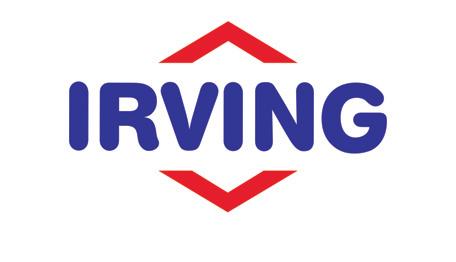
This agreement will see the companies jointly exploring a series of opportunities that would contribute to the development of such a renewable energy hub at the Whitegate refinery, Ireland’s only refinery and a critical part of the country’s energy infrastructure, including the production of green hydrogen and its use in the production of electrofuels for local and international markets. Electrofuels, known as e-fuels, are carbon neutral sustainable fuels produced with renewable electricity and carbon or nitrogen extracted from the air.
Irving Oil and Simply Blue Group will also be assessing ways to integrate the significant planned offshore wind developments around Ireland into this renewable energy hub, including Simply Blue Group’s planned Emerald Floating Wind project, to be located approximately 50km south of Cork, Ireland.
This important partnership with Simply Blue Group could yield important new


opportunities to reduce emissions in the ongoing operations of the Whitegate refinery and enable the production of a new generation of ultra-low carbon energy products, specifically e-fuels, aligned with evolving customer demands and energy policy within the European Union.

“At Irving Oil, we are committed to leadership through the energy transition and engaging in strong partnerships is a key part of our strategy as we all work toward a lower carbon future,” says Irving Oil President Ian Whitcomb. “The work we are starting with Simply Blue Group is another example of our energy transition strategy coming to life. Bringing together a key piece of energy infrastructure in Ireland, the Whitegate refinery, with Simply Blue Group’s global leadership in offshore wind development can create compelling new opportunities in Ireland.”
Sam Roch Perks, Simply Blue Groups’, Group Chief Executive Officer says: “This is an incredibly exciting
opportunity for Simply Blue Group, and we are excited to be working with Irving Oil as we jointly investigate the potential development of an integrated renewable energy hub at the Irving Oil Whitegate Refinery. This is a potential game changer for Ireland. It presents the opportunity to become a pioneer and leader in e-Fuels, a new industry sector that will prove vital in the fight against climate change.”
He continues: “The recent announcement of 2GW of green hydrogen from offshore wind by Minister Eamon Ryan TD strengthens our confidence in Ireland’s intention to enable this sector. Integrating large scale floating offshore wind farms, another huge opportunity for Ireland, with large onshore e-Fuel production facilities also offers many advantages in efficiently addressing challenges associated with intermittency, energy storage and system balancing.”
W: www.simplybluegroup.com
The following is an A-Z list of renewable energy players including industry associations, indigenous energy companies, wind developers and other organisations.
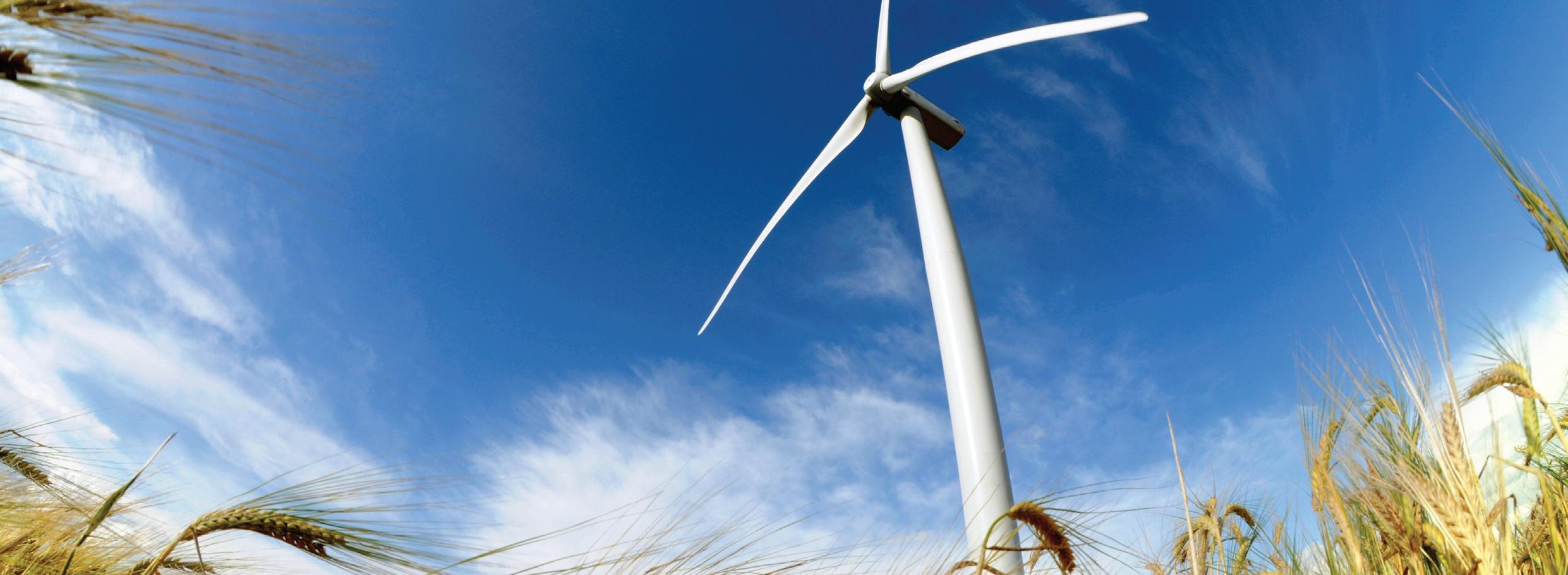
Action Renewables
Dublin Office
Innovation Campus, Old Finglas Road Glasnevin, Dublin
Tel: 01 695 0743
Web: www.actionrenewables.ie
Email: info@actionrenewables.ie
Belfast Office
Boucher Business Studios Glenmachan Place, Belfast, BT12 6QH
Tel: +44 (0)28 9072 7760
Web: www.actionrenewables.co.uk
Email: info@actionrenewables.co.uk
Chief Executive Officer: Terry Waugh
Bord na Móna
Main Street
Newbridge
Co Kildare, W12 XR59
Tel: +353 45 439 000
Web: www.bordnamona.ie
Head of PowerGen: John Reilly
COFORD Wood Energy c/o Department of Agriculture, Food and the Marine Johnston Castle Estate Wexford, Y35 PN52
Tel: +353 53 917 0322
Web: www.coford.ie
Email: fsd@agriculture.gov.ie
Coillte
8 Dublin Road Newtownmountkennedy Co Wicklow, A63 DN35
Tel: 01 201 1199
Web: www.coillte.ie
CEO: Imelda Hurley
Commission for Regulation of Utilities (CRU)
PO Box 11934
Dublin 24
Tel: 01 400 0800
Web: www.cru.ie
Email: info@cru.ie
Commissioner: Aoife MacEvilly (Chair)
Commissioner: Paul McGowan Commissioner: Jim Gannon
Department of the Environment, Climate and Communications (DECC) 29-31 Adelaide Road Dublin 2, D02 X285
Tel: 01 678 2000
Web: www.decc.gov.ie
Minister: Eamon Ryan TD
Secretary General: Mark Griffin
Assistant Secretary, Energy: Matthew Collins
Assistant Secretary, Energy: Barry Quinlan
Assistant Secretary, Climate Action and Environment: Brian Carroll
Assistant Secretary, Natural Resources and Waste Policy: Philip Nugent
International and Offshore Energy Division
Principal: Martin Finucane
Renewable electricity: Philip Newsome
Offshore Energy, Environment and Consenting: Martina Hennessy Electricity Networks and Systems: John Finnegan
Department for the Economy (Northern Ireland)
Netherleigh, Massey Avenue Belfast, BT4 2JP
Tel: +44 (0)28 9052 9900
Web: www.economy-ni.gov.uk
Email: dfemail@economy-ni.gov.uk
Minister: Gordon Lyons MLA
Permanent Secretary: Mike Brennan
Head of Energy: Richard Rodgers
Heat, Energy Efficiency, and Renewables: Peter Russell (acting)
Energy Strategy: Vacant Energy Operations: Graham Miller (acting)
Energy Saving Trust (Northern Ireland)
River House
48 High Street Belfast, BT1 2BE
Tel: 0800 142 2865
Web: www.energysavingtrust.org.uk
Invest Northern Ireland
Bedford Square
Bedford Street Belfast, BT2 7ES
Tel: +44 (0)28 9069 8000
Web: www.investni.com
Email: eo@investni.com
Chief Executive: Mel Chittock
Marine Institute
Rinville, Oranmore Co Galway, H91 R673
Tel: 091 387 200
Web: www.marine.ie
Email: institute.mail@marine.ie
CEO: Paul Connolly
Ordnance Survey Ireland
Phoenix Park Dublin 8, D08 F6E4
Tel: 01 802 5300
Web: www.osi.ie
Email: kevin.brady@osi.ie
Contact: Kevin Brady
Sustainable Energy Authority of Ireland (SEAI)
3 Park Place, Hatch Street Upper Dublin 2
Tel: 01 808 2100 Web: www.seai.ie Email: info@seai.ie
CEO: William Walsh
Director of Research and Policy Insight: Margie McCarthy
Director of Corporate Services: Marion O Brien
Director of Business, Public and Transport sectors: Declan Meally
Director of National Retrofit: Ciaran Byrne
Energy Policy Statistical Support Unit
Building 2100, Cork Airport Business Park Cork, T12 KV8R
Ocean Energy Development Unit
Civic Offices, Béal an Mhuirthead, Co Mayo
Finisklin Business Park, Co Sligo
Finnabair Industrial Estate, Dundalk Co Louth, A91 W8Y7
Teagasc Oak Park, Carlow, R93 XE12 Tel: 059 917 0200 Web: www.teagasc.ie Email: info@teagasc.ie Director: Frank O’Mara
Electricity Association of Ireland
127 Baggot St Lower, Dublin 2 D02 F634
Tel: +353 (1) 524 1046 Web: www.eaireland.com Email: info@eaireland.com
Chief Executive: Dara Lynott
Energy Institute
61 New Cavendish Street London, W1G 7AR
Tel: +44 (0)20 7467 7100 Web: www.energyinst.org Email: info@energyinst.org
Republic of Ireland branch Chair: Owen McQuade Secretary: Liam P Ó Cléirigh Email: ireland@energyinst.org
Northern Ireland branch Chair: Nicola Murphy Secretary: Paul Andrews Email: northernireland@energyinst.org
Engineers Ireland
22 Clyde Road, Ballsbridge Dublin, D04 R3N2
Tel: 01 665 1300 Web: www.engineersireland.ie Director General: Damien Owens
FuturEnergy Ireland 27/28 Herbert Place Dublin 2 D02 DC97
Tel: 01 669 8565 Web: www.futurenergyireland.ie Email: info@futurenergyireland.ie
Geothermal Association of Ireland Secretariat
c/o SLR (Environmental) Consulting Ireland Ltd 7 Dundrum Business Park Windy Arbour, Dublin 14 Tel: 01 296 4667
Web: www.geothermalassociation.ie Email: info@geothermalassociation.ie Chair: Niall McCormack
Irish Bioenergy Association (IrBEA) DCU Alpha Business Unit ICA104 Old Finglas Road, Glasnevin Dublin 11, D11KXN4 Tel: 086 125 6709 Email: contact@irbea.org CEO: Seán Finan
Irish Hydro Power Association Joseph Stewart & Company Corn Mills, Boyle, Co Roscommon Tel: 071 967 0100
Web: www.irishhydro.com Email: info@irishhydro.com
Contact: Neil Stewart
Irish Solar Energy Association 616 Edenderry Business Campus Edenderry, Co Offaly, R45 TD37 Tel: +353 46 977 3434 Web: www.irishsolarenergy.org Email: info@irishsolarenergy.org
Marine Renewables Industry Association c/o Leixfort, Corrig Avenue Dún Laoghaire, Co Dublin Web: www.mria.ie
Email: chairman@mria.ie
Chair: Peter D Coyle
Secretary: Raymond Alcorn
Meitheal na Gaoithe (Irish Wind Farmers’ Association) Kilkenny Research and Innovation Centre Burrells Hall St Kieran’s College, Kilkenny Tel: 056 779 0856
Web: www.mnag.ie
Email: info@mnag.ie
Chair: Grattan Healy
RenewableNI Arthur House, 41 Arthur Street Belfast, BT1 4GB Tel: +44 (0)28 9044 6240 Web: www.renewableni.com
Email: steven.agnew@renewableni.com
Head: Steven Agnew
Solar Energy Society of Ireland (SESI) c/o Focas Institute
Dublin Institute of Technology (DIT) Kevin Street Dublin 8 Web: www.sesireland.ie
Email: sesireland@gmail.com
Secretary: Sarah McCormack
Wind Energy Ireland
Sycamore House, Millennium Park Osberstown, Naas, Co Kildare W91 D627
Tel: 045 899 341
Web: www.windenergyireland.com
Email: office@windenergyireland.com
CEO: Noel Cunniffe
3 Counties Energy Agency
Kilkenny Research and Innovation Centre Burrell’s Hall St Kieran’s College Kilkenny R95 TP64
Tel: +353 (0)56 779 0856
Web: www.3cea.ie
Email: admin@3cea.ie
Manager: Paddy Phelan
Bryson Energy
4th Floor, Stockmans House 39-43 Bedford Street Belfast, BT2 7EE
Tel: +44 (0)28 9032 5835
Web: www.brysonenergy.org
Contact: Nigel Brady
CODEMA
The Loft, 2-4 Crown Alley Temple Bar Dublin 2, D02 TK74
Tel: 01 707 9818
Web: www.codema.ie
Email: codema@codema.ie
Contact: Donna Gartland
Cork City Energy Agency
Room 236 City Hall Cork
Tel: +353 (0)21 494 1508
Email: kevin.mcgill@corkcity.ie
Contact: Kevin McGill
Cork County Energy Agency
Cork County Council, Energy Section
Mallow Recycling Centre
Quartertown Industrial Estate Mallow, Co Cork
Tel: 022 43610
Email: jean.sayers@corkcoco.ie
Contact: Jean Sayers
Galway Energy Agency Limited
City Hall, College Road, Galway
Galway County Council Energy Programme County Buildings Prospect Hill Galway
Kerry County Council Áras an Chontae, Rathass Road Tralee, Co Kerry
Tel: 066 718 3500
Email: goriordan@kerrycoco.ie
Contact: Gerry O’Riordan
Mayo County Council Arran Place, Ballina, Co Mayo
Tel: (094) 906 4000
Contact: Laura Dixon
Meath County Council Energy Unit – Transportation Section County Hall Railway Street Navan, Co Meath Tel: 046 909 7000
Email: lfagan@meathcoco.ie
Contact: Lara Fagan
Midlands Energy Agency Laois County Council County Hall JFL Avenue Portlaoise Tel: 057 867 4350
Tipperary Energy Agency Limited
93 Silver Street Nenagh, Co Tipperary E45 AD65
Web: www.tippenergy.ie
Tel: 052 744 3090
Email: info@tippenergy.ie
Chief Executive Officer: Lisa Vaughan
Waterford Energy Bureau
4th Floor, Menapia Building The Mall, Waterford, X91 PK15
Tel: 058 21429
Web: www.waterfordcouncil.ie
Email: lfleming@waterfordcouncil.ie
Contact: Liam Fleming
Balcas Limited 75 Killadeas Road, Laragh Ballinamallard Enniskillen, BT94 2ES
Tel: +44 (0)28 6632 3003 Web: www.balcas.com Email: info@balcas.com
Bord na Móna Main Street, Newbridge Co Kildare, W12 XR59 Tel: 045 439 000 Web: www.bordnamona.ie Head of Powergen Development: John Reilly
Bord Gáis Energy 1 Warrington Place Dublin 2
Tel: 01 233 5000 Web: www.bordgaisenergy.ie Email: info@bordgais.ie
Managing Director: Dave Kirwan
Calor
Longmile Road, Dublin 12
Tel: 01 1850 812 450
NI: +44 (0)28 9045 5588 Web: www.calorgas.ie
Chief Executive: Duncan Osborne
Clearpower
The Green House Hibernian Industrial Estate Greenhills Road Tallaght, Dublin 24 Tel: 01 462 5000
Email: info@clearpower.ie
DP Energy Ireland Ltd Mill House, Buttevant Co Cork, P51 TN35
Tel: 02 223 955 Web: www.dpenergy.com Email: info@dpenergy.com
ElectroRoute
2 Cumberland Place Third Floor, Fenian Street Dublin 2 Tel: 01 687 5700
Web: www.electroroute.com
Email: info@electroroute.com
CEO: Ronan Doherty











































































































































































































































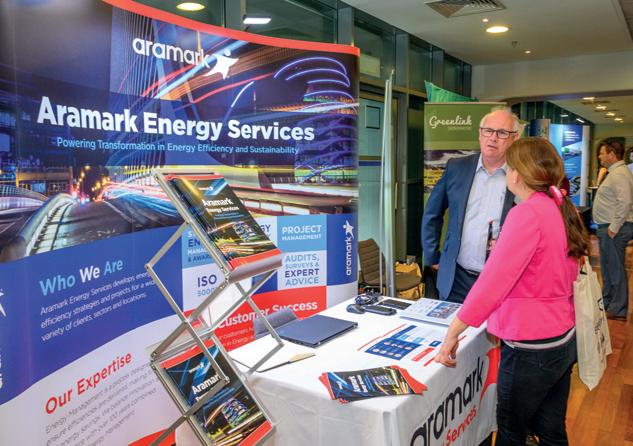
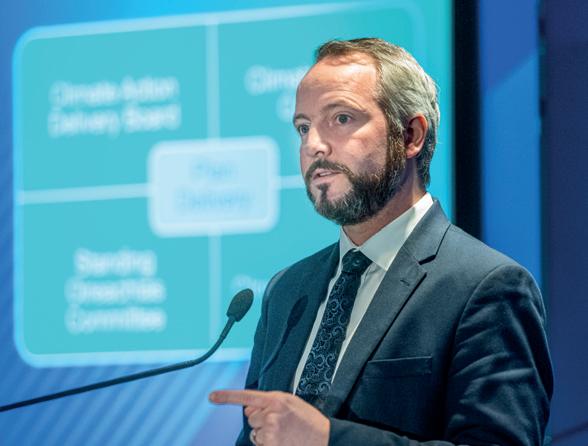
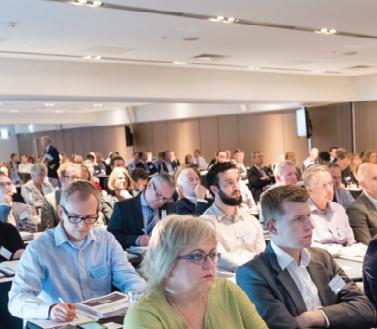


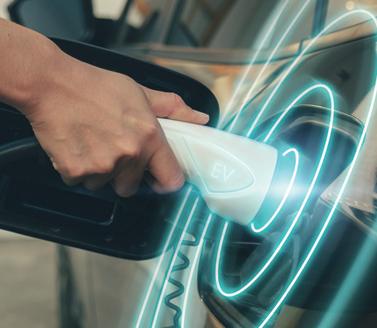
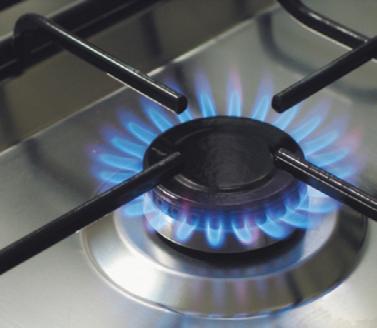
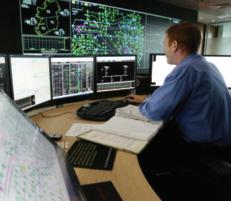


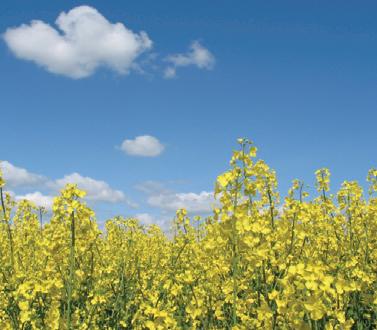

EirGrid
The Oval
160 Shelbourne Road
Ballsbridge Dublin 4, D04 FW28
Tel: 01 677 1700
Web: www.eirgridgroup.com
Email: info@eirgrid.com
Chief Executive: Mark Foley
The Liberty Centre
Blanchardstown Retail Park Dublin 15 D15 YT2H
Tel: 01 869 2000
Web: www.energia.ie
Managing Director: Peter Baillie
ESB
27 Fitzwilliam Street Lower Dublin, D02 KT92
Tel: 01 676 5831
Web: www.esb.ie
Email: info@esb.ie
Chief Executive: Paddy Hayes
Gas Networks Ireland
Gasworks Road, Cork T12 RX96
Tel: 021 453 4000
Web: www.gasnetworks.ie
Email: networksinfo@gasnetworks.ie
Chief Operations Officer: Denis O’Sullivan
GE Grid Solutions
Tel: +353 1 402 1100
Web: www.gegridsolutions.com
Email: GridSolutions.Ireland@ge.com
Country Sales Director: Séamus Ó Caoimh
Greenlink Interconnector Limited
Unit 3, 4075 Kingswood Road
Citywest Business Campus Saggart, Co Dublin D24 KF85
Web: www.greenlink.ie
Email: info@greenlink.ie
Contact: John Daly
Hitachi Energy Ireland Limited
Regus Block 1
Blanchardstown Corporate Park
Ballycoolin Road
Blanchardstown Dublin, D15 AKK1
Tel: +353 1 574 7981
Email: contact-us@hitachienergy.com
Managing Director: Peter Lantry
The Highline, 1st Floor Bakers Point, Pottery Road Dún Laoghaire, Co Dublin Tel: 01 697 2900
Web: www.indaver.ie
Whitegate Midleton, Co Cork
Tel: 021 462 2200
Head Office
E11a Network Enterprise Park Kilcoole Co Wicklow
Dublin Office Suite 54 20 Harcourt Street Dublin 2
Tel: +353 (0)1 524 0555 Web: www.krarenewables.ie Email: ciara@kra.ie
Contact: Ciara Ledwidge
Mainstream Renewable Power Ground Floor, Block G Central Park, Leopardstown Dublin, D18 NH10
Tel: 01 290 2000
Web: www.mainstreamrp.com
Email: info@mainstreamrp.com
Group Chief Executive: Mary Quaney
Nordex Energy Ireland Ltd
Clonmel House Business Centre Clonmel House, Forster Way Swords Demesne, Swords Co Dublin
Tel: 01 897 0260
Web: www.nordex-online.com
Email: ireland@nordex-online.com
Managing Director: Damien Zachlod
NTR plc
Burton Court, Burton Hall Drive Sandyford, Dublin 18, D18 Y2T8 Tel: 01 206 3700
Web: www.ntrplc.com Email: info@ntrplc.com
Chief Executive: Rosheen McGuckian
RWE Renewables Ireland Limited
Unit 5, Desart House Lower New Street Kilkenny, R95 H488 Web: www.rwe.com/ireland Email: ireland@rwe.com
Contact: Cathal Hennessy
SIAC Wind Energy Dolcain House, Monastery Road Clondalkin, Dublin 22 D22 F8F5 Tel: 01 403 3111 Web: www.siac.ie Email: info@siac.ie
Simply Blue Group Dublin Office 43 Fitzwilliam Place Dublin 2 D02 FY81
Cork Office Floor 3, Centre Park House Centre Park Road Blackrock, Cork City, T12 RK0N
Web: www.simplybluegroup.com Email: info@simplybluegroup.com
Contact: Sam Roch-Perks
Siemens Limited Innovation House DCU Innovation Campus Old Finglas Road, Dublin 11 Tel: 01 216 2241 Web: www.siemens.ie
SSE Renewables Red Oak South South County Business Park Leopardstown Dublin, D18 W688 Tel: +353 1 655 6400
Managing Director: Stephen Wheeler
Veolia
Suite 18, Plaza 256 Blanchardstown Corporate Park 2 Blanchardstown Dublin 15, D15 TR96
Tel: 01 870 1200
Web: www.veolia.ie
ABCO Marine 282 Moira Road Lisburn, BT28 2TU
Tel: +44 (0)28 9262 2731
Web: www.abcomarine.co.uk
Email: info@abcomarine.co.uk
4th Floor, Adelphi Plaza Adelphi Centre George’s Street Upper Dún Laoghaire, A96 T927 Tel: 01 238 3100 Web: www.aecom.com
Roshine Road, Killybegs
Co Donegal
Tel: +44 (0)74 974 1165
Web: www.arcticshipsagents.com
Email: info@arcticshipsagents.com
Arup Consulting Engineers
One Albert Quay Cork, T12 X8N6
Tel: 021 422 3200
Web: www.arup.com
Email: cork@arup.com
Contact: Liam Luddy
CADFEM Ireland
18 Windsor Place Dublin 2, D02 PW74
Tel: +353 (0)16 522 730
Web: www.cadfem.net
Email: info@cadfem.ie
Director: Derek Sweeney
Chris Mee Group
Euro Business Park
Little Island, Cork
Tel: 021 497 8100
Web: www.cmse.ie
Email: info@cmse.ie
Contact: Chris Mee
Gemserv
Fitzwilliam Hall Business Centre Fitzwilliam Place, Dublin 2
Tel: 01 669 4630
Web: www.gemserv.com
Email: info@gemserv.com
Contact: Sarah Fuller
Hydrographic Surveys Limited
Unit 12, Owenacurra Business Park
Midleton, Co Cork P25 C563
Tel: 021 483 1184
Web: www.hydrosurvey.com
Email: info@hydrosurvey.com
IGSL Ltd
Unit F, M7 Business Park
Naas, Co Kildare
Tel: 045 846 176
Web: www.igsl.ie
Email: info@igsl.ie
Irish Drilling Ltd
Old Galway Road Loughrea, Co Galway
Tel: 091 841 274
Web: www.irishdrilling.ie
Email: info@irishdrilling.ie
Kingspan Water & Energy Ltd
180 Gilford Road, Portadown Co Armagh, BT63 5LF
Tel: +44 (0)28 3836 4400
Web: www.kingspanwaterandenergy.com
Email: contact@kingspan.com
Medite Europe Ltd
Redmondstown, Clonmel Co Tipperary, E91 V584 Tel: 087 248 3794
Web: www.mdfosb.com
Email: david.murray@mdfosb.com
Contact: David Murray
Mott MacDonald Ireland Ltd
South Block, Rockfield Dundrum, Dublin 16
Tel: 01 291 6700
Web: www.mottmac.com/ireland
Email: dublin@mottmac.com
P&O Maritime Services
Parkmore Business Park West, Galway Tel: 091 773 980
Web: www.pomaritime.com
Ridgeway
Unit 1&2 Greene Park, Ratoath Road Ashbourne, Co Meath, A84 XD98 Tel: 01 802 7173 Web: www.ridgeway-online.com
Email: info@ridgeway-online.com
RPS Group
West Pier Business Campus Dún Laoghaire, Co Dublin A96 N6T7
Tel: 01 488 2900
Web: www.rpsgroup.com/ireland
Contact: Olivier Gaillot
Shannon Foynes Port Company Harbour Office Foynes, Co Limerick Tel: 069 73 100
Web: www.sfpc.ie
Email: info@sfpic.ie
CEO: Pat Keating
SLR Consulting Ireland
7 Dundrum Business Park Dundrum Road Windy Arbour, Dublin 14 D14 N2Y7
Tel: 01 296 4667
Email: noniell@slrconsulting.com
Contact: Nick O’Neill
Smith Brothers Power Engineering Ltd
3 Inns Quay Dublin
Tel: 01 903 6480
Web: www.smithbrothers.ie
Email: info@smithbrothers.ie
SmartBay Ireland
ATU Innovation Hub (IHub) Galway Dublin Road, Galway H91 DCH9 Tel: 091 394 253 Web: www.smartbay.ie Email: info@smartbay.ie
Solmatix Ltd 14 Glenwell Road Newtownabbey Co Antrim, BT36 7RF Tel: +44 (0)28 9082 4000 Web: www.solmatix.com
SSL International Marine Ltd Main Street, Foynes, Co Limerick Tel: 069 65 710
Web: www.sslmarine.ie Email: services@sslmarine.ie
Contact: Helen Fitzgerald
Subsea Marine Limited
15 Belfry Gardens, Dundalk Co Louth, A91 V5Y6 Tel: 087 254 7362 Web: www.subseamarine.ie Email: info@subseamarine.ie
TechWorks Marine Pottery Enterprise Zone Pottery Road, Dún Laoghaire Co Dublin, A96 K571 Tel: 01 236 5990 Web: www.techworks.ie Email: office@techworks.ie
Chief Executive: Charlotte O’Kelly
A&L Goodbody Solicitors
3 Dublin Landings North Wall Quay Dublin 1, D01 C4E0
Tel: 01 649 2000
Web: www.algoodbody.com
Email: rmoore@algoodbody.com
Partner: Ross Moore
42/46 Fountain Street Belfast, BT1 5EF
Tel: +44 (0)28 9031 4466
Email: belfast@algoodbody.com
Partner: Mark Stockdale
Arthur Cox
Ten Earlsfort Terrace
Dublin, D02 T380
Tel: 01 920 1000
Web: www.arthurcox.com
Email: dublin@arthurcox.com
Partner: Alex McLean
Victoria House
Gloucester Street Belfast, BT1 4LS
Tel: +44 (0)28 9023 0007
Email: belfast@arthurcox.com
Byrne Wallace
88 Harcourt Street, Dublin 2 D02 DK18
Tel: 01 691 5000
Web: www.byrnewallace.com
Email: gblake@byrnewallace.com
Contact: Gavin Blake
Beauchamps Solicitors
Riverside Two, Sir John Rogerson's Quay Dublin 2, D02 KV60
Tel: 01 418 0600
Web: www.beauchamps.ie
Email: info@beauchamps.ie
Carson McDowell
Murray House, Murray Street Belfast, BT1 6DN
Tel: +44 (0)28 9024 4951
27-28 Herbert Place Dublin 2, D02 DC97
Tel: 01 9053 720
Web: www.carson-mcdowell.com
Email: law@carson-mcdowell.com
Senior Partner: Neasa Quigley
Elva Carbery
Pembroke House
28-32 Upper Pembroke Street Dublin 2 D02 EK84
Tel: +353 86 839 9224
Web: www.elvacarbery.ie
Email: elva@elvacarbery.ie
Eugene F Collins
Temple Chambers, 3 Burlington Road
Dublin 4, D04 RD68
Tel: 01 202 6400
Web: www.efc.ie
Email: lawyer@efc.ie
Partner: Mark Walsh
Eversheds Sutherland
One Earlsfort Centre, Earlsfort Terrace Dublin 2
Tel: 01 664 4200
Montgomery House Montgomery Street Belfast, BT1 4NX
Tel: +44 (0)28 9526 2000
Web: www.eversheds-sutherland.com
Email: markvarian@evershedssutherland.ie
Partner: Mark Varian
The Capel Building Mary’s Abbey, Dublin 7
Tel: 01 828 0600 Web: www.fieldfisher.ie Email: info.ireland@fieldfisher.com
LK Shields Solicitors
38 Upper Mount Street Dublin 2, D02 PR89
Tel: 01 661 0866
Web: www.lkshields.ie
Email: pdaly@lkshields.ie
Partner: Philip Daly
75 St Stephen’s Green Dublin 2, D02 PR50
Tel: 01 619 2000
Web: www.maplesandcalder.com
Mason Hayes & Curran Barrow Street, Dublin 4 D04 TR29
Tel: 01 614 5000 Web: www.mhc.ie
70 Sir John Rogerson’s Quay, Dublin 2
Tel: 01 232 2000 Web: www.matheson.com
Email: garret.farrelly@matheson.com
Partner: Garret Farrelly
McCann Fitzgerald
Riverside One
Sir John Rogerson’s Quay Dublin, D02 X576
Tel: 01 829 0000
Web: www.mccannfitzgerald.ie Email: valerie.lawlor@mccannfitzgerald.com
Partner: Valerie Lawlor
Philip Lee Solicitors
Connaught House
One Burlington Road Dublin 4, D04 C5Y6
Tel: 01 237 3700 Web: www.philiplee.ie Email: info@philiplee.ie
Partner: Philip Lee
Pinsent Masons LLP
1 Windmill Lane, Dublin 2 D02 F206
Tel: 01 553 8600
The Soloist Building, 1 Lanyon Place Belfast, BT1 3LP
Tel: 028 9089 4800
Web: www.pinsentmasons.com Email: richard.murphy@pinsentmasons.com
Partner: Richard Murphy
Tughans
Marlbrough House, 30 Victoria Street Belfast, BT1 3GG Tel: 028 9055 3300 Web: www.tughans.com
Email: maria.oloan@tughans.com
Partner: Maria O’Loan
2 Grand Canal Square Dublin 2, D02 A342
Tel: 01 639 5000
Web: www.williamfry.com Email: info@williamfry.com
Partner: Liam McCabe
William Orbinson KC Senior Counsel
91 Chicester Street Belfast, BT1 3JQ Tel: +44 7860 2453 24
Email: william.orbinson@barlibrary.com
Accenture
3 Grand Canal Plaza
Grand Canal Street Upper Dublin 4
Tel: 01 407 6000
Web: www.accenture.com
AIB Group
10 Molesworth Street Dublin 2
Tel: 01 660 0311
Web: www.aibcorporate.ie
Contact: Eoghan O’Neill
Bank of Ireland Global Markets
40 Mespil Road Ballsbridge Dublin, D04 C2N4
Tel: +353 (0)1 661 5933
Web: www.bankofireland.com/corporate
Barclays
1 Molesworth Street
Dublin 2, D02 RF29
Tel: 01 618 2600
Web: www.barclays.ie
Email: ireland.corporate@barclays.com
Contact: Tom Wilkinson
BNP Paribas
Termini, 3 Arkle Road Sandyford, Dublin 18, D18 T6T7
Tel: 01 612 5000
Web: www.bnpparibas.ie
Email: dublin.queries@bnpparibas.com
Davy Corporate Finance Ltd
Davy House, 49 Dawson Street Dublin 2
Tel: +353 (0)1 679 7788 Web: www.davy.ie
Harcourt Centre
Harcourt Street, Dublin 2
Tel: 01 475 0555
Web: www.ey.com/en_ie
Bedford House, 16 Bedford Street Belfast, BT2 7DT
Tel: +44 (0)28 9044 3500
Goodbody Corporate Finance
2 Ballsbridge Park, Ballsbridge Dublin 4, D04 YW83 Tel: 01 667 0400 Web: www.goodbody.ie
Email: finbarr.j.griffin@goodbody.ie Contact: Finbarr Griffin
KPMG
1 Stokes Place
St Stephen’s Green Dublin 2, D02 DE03
Tel: +353 1 410 1000
Web: www.kpmg.com
Email: mike.hayes@kpmg.com
Partner and Global Head of Renewables: Mike Hayes
PwC
1 Spencer Dock North Wall Quay, Dublin 1 Tel: 01 792 6000 Web: www.pwc.ie Contact: Ronan MacNioclais
Merchant Square 20-22 Wellington Place Belfast, BT1 6GE Tel: +44 (0)28 9024 5454
Unit 1, Block C Hartley Business Park Carrick on Shannon Co Leitrim, N41 X528
Tel: +353 (0)71 962 3228
Email: bonds@suretybonds.ie Managing Director: Colm McGrath
33 College Green, Dublin Tel: 1850 211 690
Web: www.ulsterbank.ie Email: karen.doyle@ulsterbank.com
Contact: Karen Doyle
CASE is a £10 million centre for industry driven research, aligning renewable energy expertise at Queen’s University Belfast, Ulster University and AFBI with the research needs of participating companies. Through the Invest NI Competence Centre Programme, CASE funds collaborative R&D in sustainability.
Research interests:
• bioenergy;
• energy systems; and
• marine renewable energy.
Contact details:
Centre for Advanced Sustainable Energy Queen’s University Belfast
David Kerr Building, Stranmillis Road Belfast, BT9 5AG
Tel: +44 (0)28 9097 5577
Web: www.case-research.net
Email: martin.doherty@qub.ac.uk
Contact: Martin Doherty
MaREI is the SFI Research Centre for Energy, Climate and Marine research and innovation co-ordinated by the Environmental Research Institute (ERI) at University College Cork. The Centre comprises over 220 researchers focusing on defined global challenges such as the energy transition, climate action and the blue economy.
Research interests:
• coastal and marine systems;
• marine renewable technologies;
• bioenergy;
• materials and structural testing;
• observation and operations;
• energy policy and modelling; and
• energy management.
Contact details:
Marine and Renewable Energy Ireland (MaREI)
Beaufort Building
Environmental Research Institute
University College Cork Haulbowline Road Ringaskiddy, Co Cork
Tel: 021 486 4300
Web: www.marei.ie
Email: marei@ucc.ie
Centre Directors: Brian Ó Gallachóir and Jerry Murphy
The Centre for Renewables and Energy at Dundalk IT is an applied research centre based in the School of Engineering established in 2002. The Centre seeks national and EU funds to pursue research projects in the topics of wind energy, energy storage, bioenergy and wave energy.
Research interests:
• wind energy;
• oceandemo project;
• INTERREG VA SPIRE2;
• SEAI RD&D 2018 Dundalk virtual energy microgrid project;
• bioenergy; and
• wave energy research.
Contact details:
Centre for Renewables and Energy Dundalk Institute of Technology Dublin Road Dundalk
County Louth, A91 K584
Tel: +353 (0)42 937 0474
Web: www.credit.ie
Email: admin@credit.ie
Centre Director: Paul MacArtain
COFORD is part of the Department of Agriculture, Food and the Marine’s research division. Established in 1993, it is responsible for the development of national forest research and development policy and priorities.
Research interests:
• wood energy, harvesting and processing forest biomass for energy production in Ireland;
• climate change – impact adaption and mitigation – responding to a changing climate; and
• expansion of the forest resource –sustainable increase in productive area.
Contact details: COFORD
Forest Sector Development
Department of Agriculture, Food and the Marine Johnstown Castle Wexford
Tel: +353 (0) 53 917 0322
Web: www.coford.ie
Email: fsd@agriculture.gov.ie
UCD Energy Institute plays an integral part in the energy transition, endorsing a net zero carbon energy system, promoting modernised integrated energy systems while empowering the citizen through education, innovation and digitalisation.
Research interests:
• energy systems;
• energy management; and
• energy in society.
Contact details: Energy Institute
UCD O'Brien Centre for Science University College Dublin Belfield, Dublin 4
Tel: +353 1 716 2625
Web: www.energyinstitute.ucd.ie
Email: energy@ucd.ie
Contact: Andrew Keane
Research within EPIC is focused on problems related to distributed sources of energy and their integration into power networks, control and intelligent systems.
The EPIC research facility is equipment with various forms of renewable energy generation including wind turbines, solar photovoltaics and biodiesel generators. It has expertise in monitoring large wind farms and simulating their effects and integration with the electricity grid.
Research interests:
• power systems and smart grid; • renewable energy; • intelligent systems; and • virtual reality and robotics.
Contact details:
Energy, Power and Intelligent Control School of Electronics, Electrical Engineering and Computer Science Ashby Building Stranmillis Road Belfast, BT9 5AH
Tel: +44 (0)28 9097 4669
Email: dr-epic@qub.ac.uk
The Energy Research Centre focuses on research, education and outreach in the fields of energy and environment. Established in 2007, it is part of the Ryan Institute (for environment, marine and energy research).
The centre is divided into four thematic research groups: bioenergy research; renewable resources; energy efficient technologies; energy and society.
Research interests:
Bioenergy Research Group
• microbial fermentations and digestion of organic feedstocks;
• biocatalytic fuel cells; and
• combustion chemistry.
Energy Efficient Technologies Group
• energy efficient wastewater treatment;
• power conversion technologies;
• energy and buildings;
• energy storage;
• efficient materials technology; and
• solar capture.
Renewable Resources Group
• the use of high-resolution bathymetric data obtained from the INSS and INFORMAR programmes as an input into massively parallelised hydrodynamic modelling code to infer those locations in the offshore zone which would be optimum for tidal energy.
Contact details:
Energy Research Centre
Ryan Institute, University of Galway University Road, Galway
Tel: 091 495 061
Web: www.nuigalway.ie
Email: energy@nuigalway.ie
The Energy Research Group focuses on the development of next-generation renewable energy technologies, while also examining topics such as energy recovery and behavioural change to address sustainability.

Two prominent initatives exist under this research theme: Trinity Haus, an innovation centre focusing on energy in buildings and sustainability in the built environment; and the Solar Energy Applications Group (SEAG), leading research group working in solar energy.
Research interests:
• hydro;
• solar;
• wind; and
• wave.
Contact details:
Energy Research Group
Department of Civil, Structural and Environmental Engineering
Museum Building, Trinity College Dublin Dublin 2
Tel: 01 896 1457
Web: www.tcd.ie/civileng/research/energy/
Email: civeng@tcd.ie
Contact: Biswajit Basu
The Environment and Renewable Energy Centre (EREC) based at AFBI Hillsborough assists the agri-food industry to maximise the potential of renewable energy and support technology transfer activities.
• evaluation of short rotation coppice (SRC) willow production with bioremediation of dirty water;
• storage and utilisation of biomass crops;
• the carbon footprint of agricultural enterprises;
• combustion and emission characteristics of varying biomass sources;
• demonstration of other renewable energy technologies;
• demonstration of energy saving design and technology; and
• anaerobic digestion of animal manure.
Contact details:
Environment and Renewable Energy Centre (EREC)
Agri-Food and Biosciences Institute (AFBI) Large Park, Hillsborough Co Down, BT26 6DR
Tel: +44 (0)28 9268 2484
Web: www.afbini.gov.uk/articles/environment-andrenewable-energy-centre
Email: renewable.energy@afbini.gov.uk
Contact: Stanley McDowell
The Environmental Research Institute was established in 2000 and is aimed at supplying environmental research and education at UCC. The institute brings together expertise in biological, chemical and environmental sciences as well as environmental engineering, energy and law. The institute has over 150 researchers and five thematic research areas, one of which is sustainable energy and environmental engineering.
Research interests:
• wind energy;
• bioenergy and biofuels;
• energy policy and modelling;
• climate change (GHG flux modelling and climate change adaption); and
• marine renewable energy.
Contact details:
Environmental Research Institute (ERI) Lee Road, Cork, T23 XE10
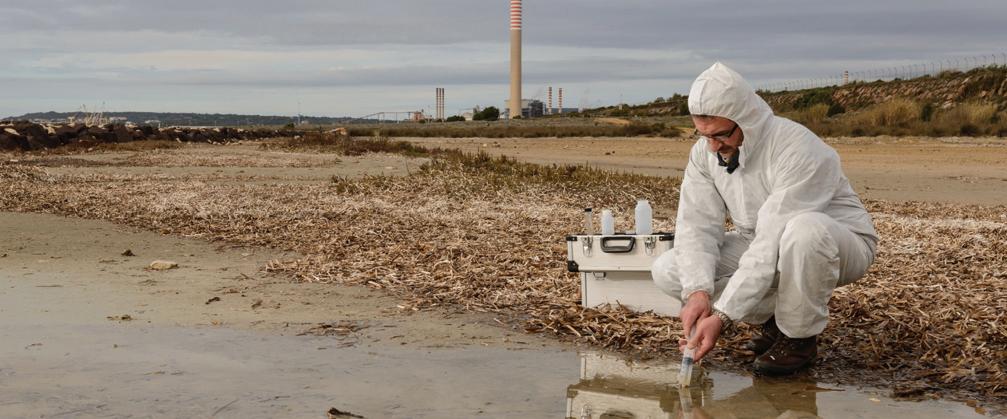
Tel: 021 490 1931
Web: www.ucc.ie/en/eri
Email: eri@ucc.ie
Contact: Paul Bolger
Established by the 1991 Marine Institute Act, the Marine Institute is the national agency responsible for marine research, technology development and innovation. The institute operates an ocean energy test site with SEAI. Real-time wave information is available at the Galway Bay test site for all developers of wave energy devices who have a prototype that is built for open water testing in a relatively sheltered location.
Research interests:
• marine technology;
• climate change; and
• marine biotechnology.
Contact details: Marine Institute
Rinville, Oranmore, Co Galway, H91 R673
Tel: 091 387 200
Web: www.marine.ie
Email: institute.mail@marine.ie
Teagasc, the Agriculture and Food Development Authority, provides integrated research and advisory and training services to the agricultural and food sectors as well as rural communities. It is funded by the State, research programmes and other revenue streams. In the area of energy research, Teagasc aims to promote the development and expansion of renewables production from agricultural sources.
Research interests:
• energy crops;
• liquid biofuels;
• biomass combustion;
• carbon sequestration; and
• anaerobic digestion.
Contact details: Teagasc Oakpark, Carlow, R93 XE12
Tel: 059 917 0200
Web: www.teagasc.ie
Teagasc Director: Frank O’Mara
The last seven years were the warmest on record globally and, this year, Europe experienced its warmest summer on record. Today, following Russia’s brutal and unprovoked invasion of Ukraine in February 2022, the dangers of our dependency on fossil fuels are more starkly revealed than ever before.
The EU has long been a leader in tackling the climate crisis. Now, that objective aligns with Europe’s urgent need for energy security. In May 2022, the EU set out REPowerEU, its plan to rapidly reduce dependence on Russian fossil fuels and accelerate the green transition.
It is within this context that Ireland is working to address three overlapping challenges. Firstly, Ireland’s reliance of 85 per cent on fossil fuels means that we are particularly exposed to international geopolitical events. Secondly, Ireland has rightly declared a biodiversity and climate emergency but significant emissions reductions remain to be achieved. And finally, Irish families and businesses are experiencing record high energy prices owing to the war in Ukraine, coupled with known generation adequacy issues on this island for the months and immediate years ahead.
These interlocking crises must energise our efforts to build an Ireland that can rely on clean, secure and affordable energy. This requires a radical and rapid scale-up in renewable energy, faster decarbonisation of the heating sector and dramatic improvements in energy efficiency, demand reduction and the use of low and zero-carbon transport.
Renewable Energy Ireland’s vision is
that by 2050 Ireland will be energy independent through using indigenous, clean, carbon-free renewable energy supported by, and supporting, communities across Ireland.
For this to be achieved, our members have identified five priority areas for actions:
• firstly, the delivery of grid infrastructure is of foundational importance. Put simply, we cannot decarbonise our economy without new and upgraded grid infrastructure, which is the backbone for electrified transport and other services;
• secondly, we need to update our planning system to implement REPowerEU, including the requirement that EU member states decide on environmental permits for projects within two years from the time a developer files an application and the establishment of ‘go-to’ areas where renewable energy development will be explicitly encouraged, and to issue permits in those areas within one year of the application being filed;
• thirdly, we need to decarbonise our building and industrial sectors by simplifying the administrative and regulatory requirements for energy efficiency, renewable heat and demand flexibility and storage technologies;
• fourthly, we need to decarbonise our transport emissions, by delivering on the government ambition of over 940,000 electric vehicles in 2030, while supporting remote working, public transport, cycling infrastructure and further decarbonisation measures; and
• finally, we need to bring industry, government and other key stakeholders together, to identify ways to cut the price of renewable
energy in Ireland to deliver clean power at the lowest possible price for Irish consumers.
To enable all of this to happen, Ireland must produce an ambitious renewable energy industrial strategy to develop necessary port infrastructure and a local supply-chain to help address the skills gap in trades, planning, marine, environmental sciences, sustainable finance and engineering.
We know how to do this and we know it will ensure a cleaner, more secure and more affordable, supply of energy to homes, communities and businesses across Ireland. The renewable energy industry will continue to play our part in leading Ireland’s energy transition. We call on all stakeholders to redouble our collective efforts to urgently remove the remaining barriers to the faster deployment of renewable energy.
Russia’s invasion of Ukraine and weaponisation of its gas supply has been met with a European unity of purpose and response. That unity, the strength of democracies coming together behind a shared goal, is essential to successful navigation of these crises.
It must be directed towards a new, energy-independent, Europe, one which will be built on the foundations we, governments and the renewable energy industry, lay together today.
Tanya Harrington is Chairperson of Renewable Energy Ireland and Chief Regulatory Officer with An Post. Renewable Energy Ireland is a partnership of sustainable energy associations working collectively to support energy security and the transition to net zero in Ireland.
W: renewableenergyireland.ie

Chairperson of Renewable Energy Ireland, Tanya Harrington, calls for a redoubling of efforts to urgently remove barriers to the faster deployment of renewable energy.

